Paul van Yperen's Blog, page 45
July 9, 2024
P.C., Paris
P.C., Paris is an abbreviation for Photo-Cine Paris. This postcard series was published from the 1910s to the 1930s. The P.C. series was published by Société Anonyme des Papeteries de Levallois-Clichy. In the 1910s, this French paper factory was based in Rue du Port, no. 4, in Clichy-Levallois, nowadays Paris. After a merger with Atelier D'Art Photographique, which had existed in Paris since 1905. The new location was Rue Beaurepaire, no. 30, Paris. The publisher produced bromide postcards with all kinds of photos in five series: PC (luxury postcards), RP (luxury postcards), REX (luxury postcards), Furia and JK. Before the merger, the RP and Furia series had belonged to L'Atelier d'Art. The JK series had belonged to J. Klepetar. REX cards were also produced earlier, in WW I.
The publishing house mainly published high-quality photographic postcards on a variety of subjects, including portraits of women in romantic settings, portraits of children, nudes, landscapes, Christmas cards and film star postcards. P.C., Paris was one of the first publishers to experiment with colour prints. Portraits painted by hand or with a stencil were on sale, and experiments with chemical dyes often gave the cards a different hue, using sepia, Prussian blue and red applied to a surface coated with silver grain. Also noteworthy was the pioneering technique of mixing orange, blue and green, which resulted in bright ‘psychedelic’ colour effects.

French postcard by P.C., no. 4095. Photo: Reutlinger, Paris.
Marthe Régnier (1880-1967) was a famous French stage actress and singer of the Belle Epoque and beyond. She also acted in six silent and sound films.
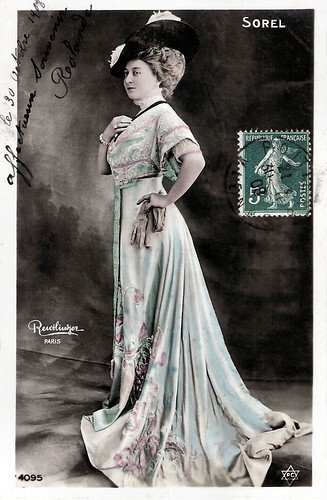
French postcard by P.C., no. 4095. Photo: Reutlinger, Paris.
Legendary actress Cécile Sorel (1873-1966) was the ‘queen of the French stage’ during the Belle Epoque, the period between the Paris Exposition of 1900 and the First World War. Her public appearances, often in extravagant costumes, created a sensation. During her long life, she played in five films.
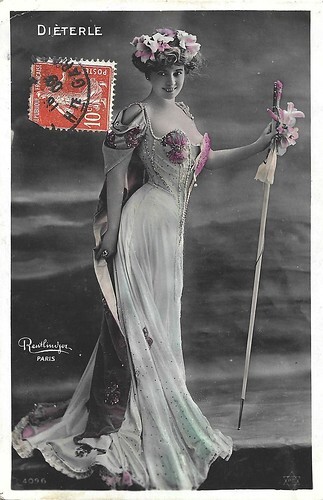
French postcard by P.C., no. 4096. Photo: Reutlinger, Paris. Postcard mailed in 1909.
Amélie Diéterle (1871-1941) was one the most beloved actresses and singers of the Belle Epoque, who inspired poets and painters such as Mallarmé and Rodin. Between 1909 and 1913 she acted in some 25 short films at Pathé Frères, mostly Rigadin comedies directed by Georges Monca.
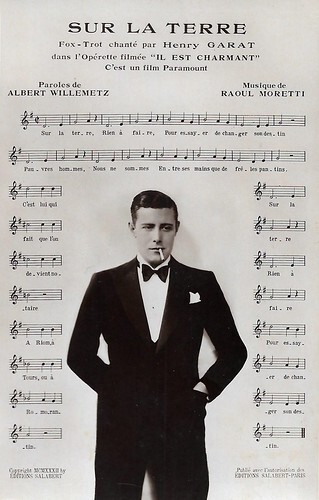
French postcard. P-C, Paris, no. 2. Photo: Paramount. Henri Garat sang the foxtrot 'Sur la terre' in Il est charmant (Louis Mercanton, 1932). Text by Albert Willemetz and music by René Mercier and Henri Forterre. Copyright: Editions Salabert, Paris, 1932.
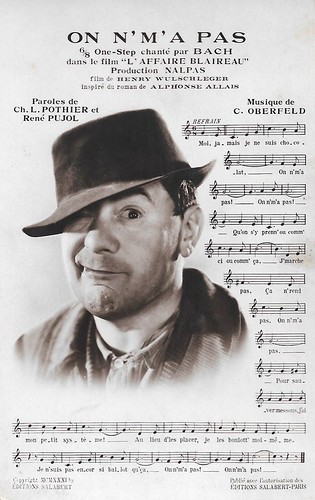
French postcard by P-C, Paris, no. 8. Photo: Nalpas. Bach sang the song 'On n' m' a pas' (a 6/8 One-Step) in L'affaire Blaireau (Henry Wulschleger, 1932). Text by Ch. L. Pothier and René Pujol, and music by C. Oberfeld. Copyright: Editions Salabert, Paris, 1931.

French postcard by P-C, Paris, no. 16. Photo: Ufa. Lilian Harvey sings the Fox-Trot 'Je suis come ca' in La fille et le garcon (Roger Le Bon, Wilhelm Thiele, 1932), the alternate-language version of Zwei Herzen und ein Schlag (Wilhelm Thiele, 1932). Text by Jean Boyer, and music by Jean Gilbert. Copyright: Ufaton, Berlin / Ed. Salabert, Paris, 1932.

French postcard by Editions P-C, Paris, no. 19. Photo: Adolphe Osso / Gloria Film. Le Choer sang the military march 'Adieu, vieille Europe' in Le Sergent X/Sergeant X (Vladimir Strizhevsky, 1932), starring Ivan Mozzhukhin . Text by Simon Delyon and music by René Mercier and Henri Forterre. Copyright: Editions Salabert, Paris, 1932.
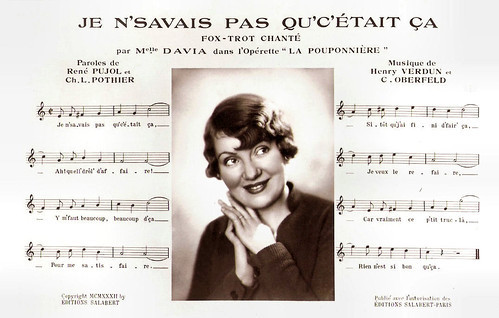
French postcard by Editions P-C, Paris, no. 32. Davia sang the foxtrot 'Je n'savais pas qu'c'était ça' in La Pouponnière/The nursery (Jean Boyer, 1933). Text by René Pujol and Ch. L. Pothier, and music by Henry Verdun and C. Oberfeld. Copyright: Editions Salabert, Paris, 1932.
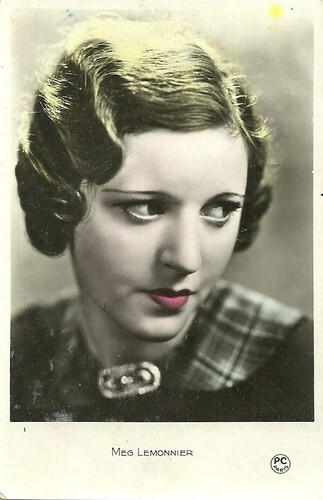
French postcard by P.C., Paris, no. 1.
French actress and singer Meg Lemonnier (1905-1988) was most active in the French cinema of the 1930s. In the early years of the sound film, she played more or less saucy ingénues in romantic comedies and operettas often accompanied by Henri Garat.
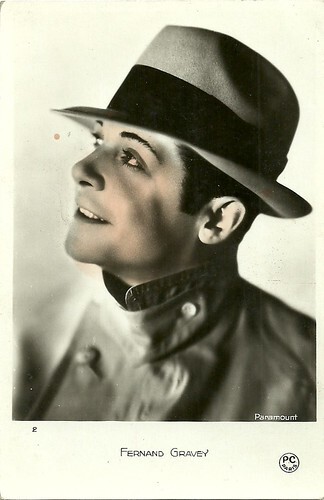
French postcard by P.C., Paris, no. 2. Photo: Paramount.
Fernand Gravey (1905-1970) was an elegant Franco-Belgian stage, screen and television actor, who successfully worked in Belgium, France, England and Hollywood. He was also a war hero, active as a member of the French Intelligence and Foreign Legion during the Second World War.
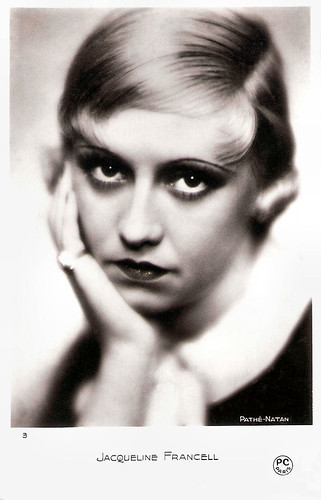
French postcard by P.C., Paris, no. 3. Photo: Pathé Natan.
During the 1930s and 1940s, Jacqueline Francell (1908-1962) was a popular star of the French operetta. She also appeared in operas at the Théâtre des Champs-Élysées. In 1930, she created the role of Princess Blanche-Aline in Les Aventures du roi Pausole by Arthur Honegger. She also starred in a dozen films between 1931 and 1944.
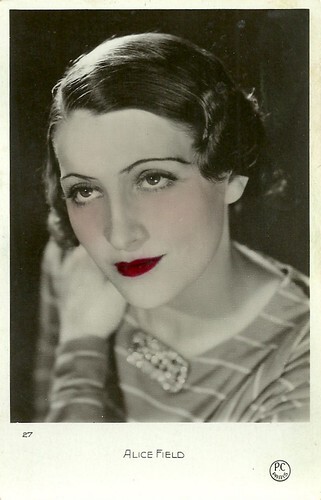
French postcard by P.C., Paris, no. 27.
French actress Alice Field (1903-1969) started in the silent film era. Her career got on steam in the 1930s, when she starred in several French language versions of German film classics.
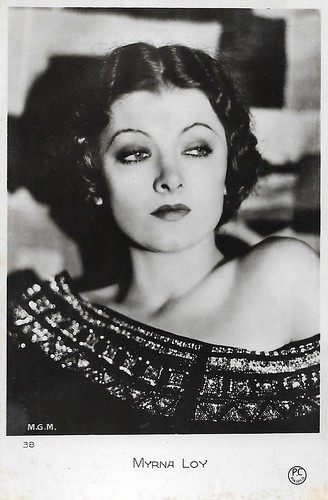
French postcard by P.C., Paris, no. 38. Photo: George Hurrell, c. 1932 / MGM.
Myrna Loy (1905-1993) was an American film, television and stage actress. She was originally typecast in exotic roles, often as a vamp or a woman of Asian descent, but her career prospects improved greatly following her portrayal of Nora Charles in The Thin Man (W.S. Van Dyke, 1934). Suddenly she was the 'Queen of the Movies' and remained so until the late 1940s.
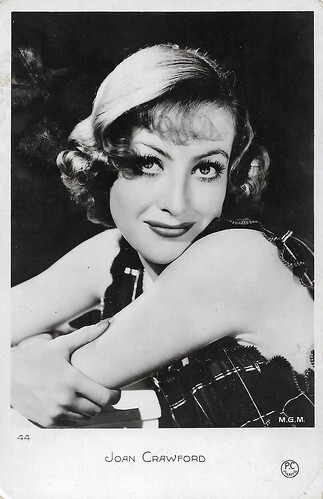
French postcard by P.C., Paris, no. 44. Photo: MGM.
American film star Joan Crawford (1904-1977) had a career that would span many decades, studios, and controversies. In her silent films, she made an impact as a vivacious Jazz Age flapper and later she matured into a star of psychological melodramas.
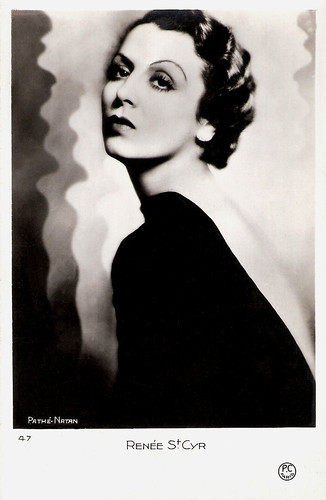
French postcard by P.C., Paris, no. 47. Photo: Pathé-Natan.
French actress Renée Saint-Cyr (1907-2004) starred as the classy lady and keeper of good taste in the French cinema of the 1930s and 1940s. She continued to perform in film in the following decades as well.
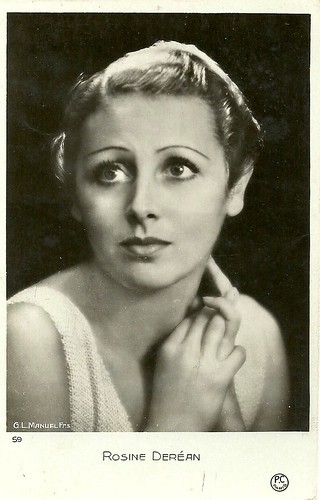
French postcard by P.C., Paris, no. 59. Photo: G.L. Manuel Frères.
French actress Rosine Deréan (1910-2001) was a popular star of the French cinema of the 1930s. Her best-known films are the melodrama Les deux orphelines (1933) and the romantic drama Lac aux dames (1934). She was married to Claude Dauphin and a French Resistance member during the Second World War.
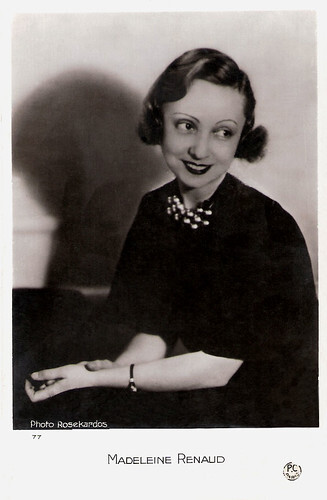
French postcard by Editions P.C., Paris, no. 77. Photo: Rosekardos.
Madeleine Renaud (1900-1994) was an acclaimed French stage actress, who also had a film career. One of her best-known films was La Maternelle (1933).
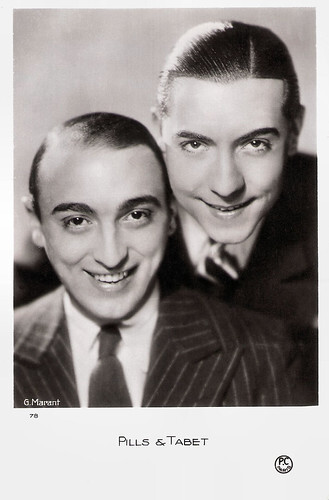
French postcard by PC, Paris, no. 78. Photo: G. Marant.
French artist Jacques Pills (1906-1970) was an agreeable light singer and crooner. Before the war, he formed a successful duo with Georges Tabet. In 1959, Pills was the Monegasque entrant at the Eurovision Song Contest 1959 with the song Mon ami Pierrot He also appeared in several films. but Pills's main claim to fame is his marriage to two illustrious singers, Lucienne Boyer and Édith Piaf .
In 1925, Georges Tabet (1905-1984) directed the orchestra of Mac-Mahon Palace, one of the most chic dancings in Paris which counted among its frequent customers Jacques Pills and Jean Rigaux. One summer day, when Tabet was playing at Sainte-Maxime, he received two telegrams, one from Ray Ventura inviting him to join his orchestra, the other from Jacques Pills proposing to form with him a vocal duo to go to the Casino de Paris. Georges Tabet accepted Pilss's offer. They created at the Casino de Paris 'Couches dans la Hay', sung by Mireille and Jean Nohain, extracted from their operetta 'Fouchtra'. They also sang 'In the Hawaiian Islands', 'A cabanon near Toulon', 'It's an old castle of the Middle Ages' and 'We do not need the moon'. They toured in London, New York and Hollywood. The duo had to separate in 1939 because of the declaration of war. Jacques Pills became a prisoner of war.
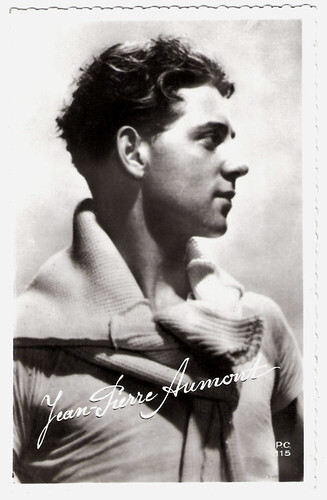
French postcard by P.C., Paris, no. 115.
French actor Jean-Pierre Aumont (1911-2001) was a stylish gentleman in more than 100 films. The blond-haired, blue-eyed leading man wooed and wed some of the most beautiful actresses during his film career - on screen and in real life too.
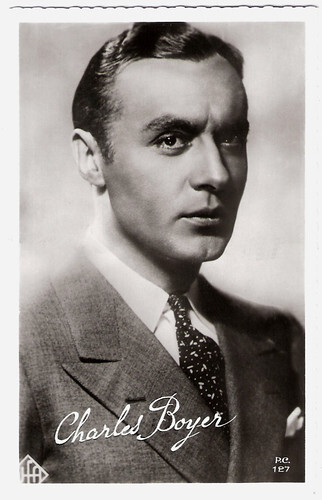
French postcard by P.C., Paris, no. 127. Photo: Ufa.
Suave and sophisticated French actor Charles Boyer (1899-1978) began his career in French silent films. In 1936 he became an international star with his role in Mayerling opposite Danielle Darrieux. His long career earned him the title of 'the last of the cinema's great lovers'.
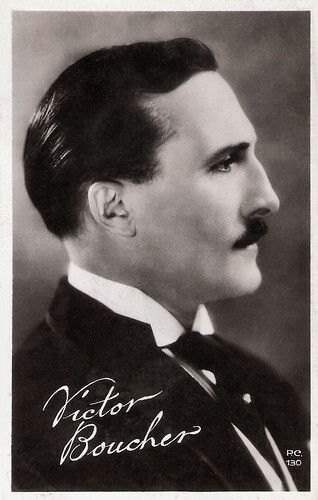
French postcard by P.C., Paris, no. 130.
Victor Boucher (1877-1942) was a French stage and screen actor, who peaked in French film comedies of the 1930s. In the comedy Le sexe faible/The Weaker Sex (Robert Siodmak, 1933), Boucher is a stylish butler who is involved in the intrigues of his patrons.
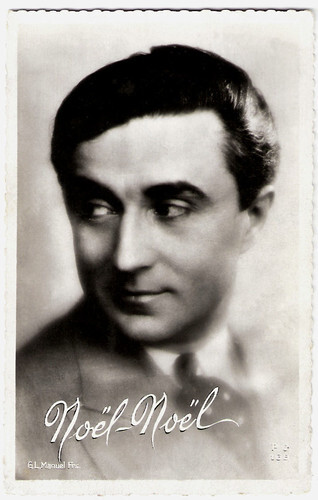
French postcard by Editions P.C., Paris, no. 168. Photo: G.L. Manuel Frères.
Noël-Noël (1897-1989) was a beloved French character actor and screenwriter. He appeared in 45 films between 1931 and 1966. His talents were diversified and he was known for his strong leftist political beliefs which seeped into many of his film scripts.
Sources: Ross postcards, Canalblog (French), MuFo (Polish), Cartophilie (French) and s.
The publishing house mainly published high-quality photographic postcards on a variety of subjects, including portraits of women in romantic settings, portraits of children, nudes, landscapes, Christmas cards and film star postcards. P.C., Paris was one of the first publishers to experiment with colour prints. Portraits painted by hand or with a stencil were on sale, and experiments with chemical dyes often gave the cards a different hue, using sepia, Prussian blue and red applied to a surface coated with silver grain. Also noteworthy was the pioneering technique of mixing orange, blue and green, which resulted in bright ‘psychedelic’ colour effects.

French postcard by P.C., no. 4095. Photo: Reutlinger, Paris.
Marthe Régnier (1880-1967) was a famous French stage actress and singer of the Belle Epoque and beyond. She also acted in six silent and sound films.

French postcard by P.C., no. 4095. Photo: Reutlinger, Paris.
Legendary actress Cécile Sorel (1873-1966) was the ‘queen of the French stage’ during the Belle Epoque, the period between the Paris Exposition of 1900 and the First World War. Her public appearances, often in extravagant costumes, created a sensation. During her long life, she played in five films.

French postcard by P.C., no. 4096. Photo: Reutlinger, Paris. Postcard mailed in 1909.
Amélie Diéterle (1871-1941) was one the most beloved actresses and singers of the Belle Epoque, who inspired poets and painters such as Mallarmé and Rodin. Between 1909 and 1913 she acted in some 25 short films at Pathé Frères, mostly Rigadin comedies directed by Georges Monca.

French postcard. P-C, Paris, no. 2. Photo: Paramount. Henri Garat sang the foxtrot 'Sur la terre' in Il est charmant (Louis Mercanton, 1932). Text by Albert Willemetz and music by René Mercier and Henri Forterre. Copyright: Editions Salabert, Paris, 1932.

French postcard by P-C, Paris, no. 8. Photo: Nalpas. Bach sang the song 'On n' m' a pas' (a 6/8 One-Step) in L'affaire Blaireau (Henry Wulschleger, 1932). Text by Ch. L. Pothier and René Pujol, and music by C. Oberfeld. Copyright: Editions Salabert, Paris, 1931.

French postcard by P-C, Paris, no. 16. Photo: Ufa. Lilian Harvey sings the Fox-Trot 'Je suis come ca' in La fille et le garcon (Roger Le Bon, Wilhelm Thiele, 1932), the alternate-language version of Zwei Herzen und ein Schlag (Wilhelm Thiele, 1932). Text by Jean Boyer, and music by Jean Gilbert. Copyright: Ufaton, Berlin / Ed. Salabert, Paris, 1932.

French postcard by Editions P-C, Paris, no. 19. Photo: Adolphe Osso / Gloria Film. Le Choer sang the military march 'Adieu, vieille Europe' in Le Sergent X/Sergeant X (Vladimir Strizhevsky, 1932), starring Ivan Mozzhukhin . Text by Simon Delyon and music by René Mercier and Henri Forterre. Copyright: Editions Salabert, Paris, 1932.

French postcard by Editions P-C, Paris, no. 32. Davia sang the foxtrot 'Je n'savais pas qu'c'était ça' in La Pouponnière/The nursery (Jean Boyer, 1933). Text by René Pujol and Ch. L. Pothier, and music by Henry Verdun and C. Oberfeld. Copyright: Editions Salabert, Paris, 1932.

French postcard by P.C., Paris, no. 1.
French actress and singer Meg Lemonnier (1905-1988) was most active in the French cinema of the 1930s. In the early years of the sound film, she played more or less saucy ingénues in romantic comedies and operettas often accompanied by Henri Garat.

French postcard by P.C., Paris, no. 2. Photo: Paramount.
Fernand Gravey (1905-1970) was an elegant Franco-Belgian stage, screen and television actor, who successfully worked in Belgium, France, England and Hollywood. He was also a war hero, active as a member of the French Intelligence and Foreign Legion during the Second World War.

French postcard by P.C., Paris, no. 3. Photo: Pathé Natan.
During the 1930s and 1940s, Jacqueline Francell (1908-1962) was a popular star of the French operetta. She also appeared in operas at the Théâtre des Champs-Élysées. In 1930, she created the role of Princess Blanche-Aline in Les Aventures du roi Pausole by Arthur Honegger. She also starred in a dozen films between 1931 and 1944.

French postcard by P.C., Paris, no. 27.
French actress Alice Field (1903-1969) started in the silent film era. Her career got on steam in the 1930s, when she starred in several French language versions of German film classics.

French postcard by P.C., Paris, no. 38. Photo: George Hurrell, c. 1932 / MGM.
Myrna Loy (1905-1993) was an American film, television and stage actress. She was originally typecast in exotic roles, often as a vamp or a woman of Asian descent, but her career prospects improved greatly following her portrayal of Nora Charles in The Thin Man (W.S. Van Dyke, 1934). Suddenly she was the 'Queen of the Movies' and remained so until the late 1940s.

French postcard by P.C., Paris, no. 44. Photo: MGM.
American film star Joan Crawford (1904-1977) had a career that would span many decades, studios, and controversies. In her silent films, she made an impact as a vivacious Jazz Age flapper and later she matured into a star of psychological melodramas.

French postcard by P.C., Paris, no. 47. Photo: Pathé-Natan.
French actress Renée Saint-Cyr (1907-2004) starred as the classy lady and keeper of good taste in the French cinema of the 1930s and 1940s. She continued to perform in film in the following decades as well.

French postcard by P.C., Paris, no. 59. Photo: G.L. Manuel Frères.
French actress Rosine Deréan (1910-2001) was a popular star of the French cinema of the 1930s. Her best-known films are the melodrama Les deux orphelines (1933) and the romantic drama Lac aux dames (1934). She was married to Claude Dauphin and a French Resistance member during the Second World War.

French postcard by Editions P.C., Paris, no. 77. Photo: Rosekardos.
Madeleine Renaud (1900-1994) was an acclaimed French stage actress, who also had a film career. One of her best-known films was La Maternelle (1933).

French postcard by PC, Paris, no. 78. Photo: G. Marant.
French artist Jacques Pills (1906-1970) was an agreeable light singer and crooner. Before the war, he formed a successful duo with Georges Tabet. In 1959, Pills was the Monegasque entrant at the Eurovision Song Contest 1959 with the song Mon ami Pierrot He also appeared in several films. but Pills's main claim to fame is his marriage to two illustrious singers, Lucienne Boyer and Édith Piaf .
In 1925, Georges Tabet (1905-1984) directed the orchestra of Mac-Mahon Palace, one of the most chic dancings in Paris which counted among its frequent customers Jacques Pills and Jean Rigaux. One summer day, when Tabet was playing at Sainte-Maxime, he received two telegrams, one from Ray Ventura inviting him to join his orchestra, the other from Jacques Pills proposing to form with him a vocal duo to go to the Casino de Paris. Georges Tabet accepted Pilss's offer. They created at the Casino de Paris 'Couches dans la Hay', sung by Mireille and Jean Nohain, extracted from their operetta 'Fouchtra'. They also sang 'In the Hawaiian Islands', 'A cabanon near Toulon', 'It's an old castle of the Middle Ages' and 'We do not need the moon'. They toured in London, New York and Hollywood. The duo had to separate in 1939 because of the declaration of war. Jacques Pills became a prisoner of war.

French postcard by P.C., Paris, no. 115.
French actor Jean-Pierre Aumont (1911-2001) was a stylish gentleman in more than 100 films. The blond-haired, blue-eyed leading man wooed and wed some of the most beautiful actresses during his film career - on screen and in real life too.

French postcard by P.C., Paris, no. 127. Photo: Ufa.
Suave and sophisticated French actor Charles Boyer (1899-1978) began his career in French silent films. In 1936 he became an international star with his role in Mayerling opposite Danielle Darrieux. His long career earned him the title of 'the last of the cinema's great lovers'.

French postcard by P.C., Paris, no. 130.
Victor Boucher (1877-1942) was a French stage and screen actor, who peaked in French film comedies of the 1930s. In the comedy Le sexe faible/The Weaker Sex (Robert Siodmak, 1933), Boucher is a stylish butler who is involved in the intrigues of his patrons.

French postcard by Editions P.C., Paris, no. 168. Photo: G.L. Manuel Frères.
Noël-Noël (1897-1989) was a beloved French character actor and screenwriter. He appeared in 45 films between 1931 and 1966. His talents were diversified and he was known for his strong leftist political beliefs which seeped into many of his film scripts.
Sources: Ross postcards, Canalblog (French), MuFo (Polish), Cartophilie (French) and s.
Published on July 09, 2024 22:00
July 8, 2024
Dorothy Jordan
Dorothy Jordan (1906-1988) was an American film actress, who emerged as an actress at the start of the talkies. She made more than more films in four years, opposite Ramon Novarro, Clark Gable, Lionel Barrymore, Walter Huston and Jimmy Durante. In 1933, she married director-producer Merian C. Cooper and retired.
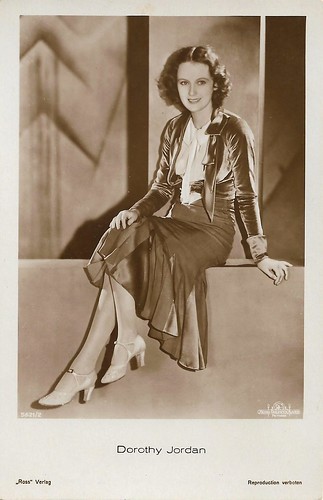
German postcard by Ross Verlag, Berlin, no. 5621/2, 1930-1931. Photo: Metro-Goldwyn-Mayer.
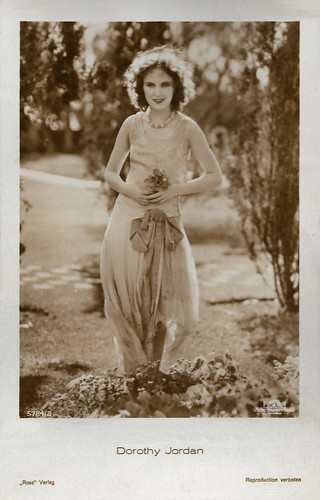
German postcard by Ross Verlag, no. 5784/2, 1930-1931. Photo: Metro-Goldwyn-Mayer.
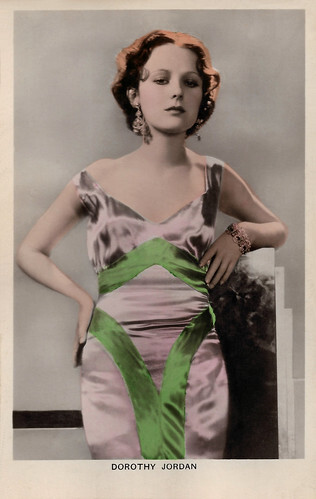
British postcard in the Colourgraph Series, London, no. C. 102.
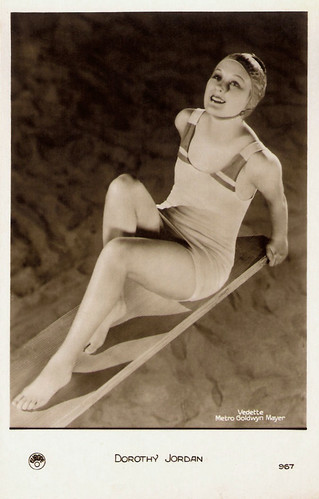
French postcard by Europe, no. 967. Photo: Metro-Goldwyn-Mayer (MGM).
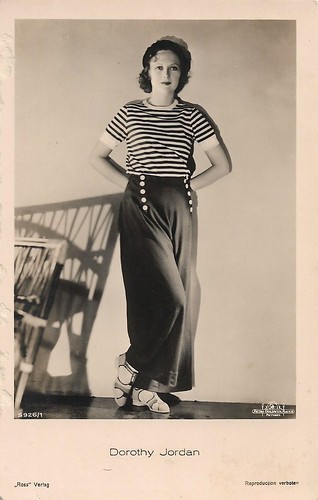
German postcard by Ross Verlag, no. 5925/1, 1930-1931. Photo: Metro-Goldwyn-Mayer.
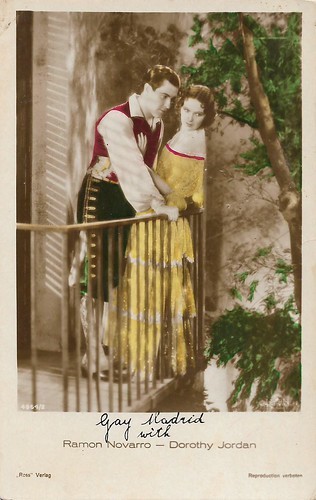
German postcard by Ross Verlag, no. 4964/2. Photo: Metro-Goldwyn-Mayer. Dorothy Jordan and Ramon Novarro in In Gay Madrid (Robert Z. Leonard, 1930).
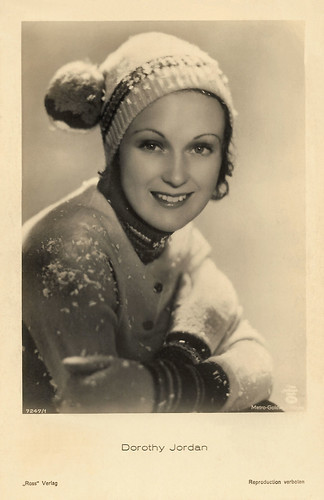
German postcard by Ross Verlag, no. 7247/1, 1932-1933. Photo: Metro-Goldwyn-Mayer.
Ramon Novarro's sultry leading lady
Dorothy Hendricks Jordan was born in Clarksville, Tennessee, in 1906. Jordan studied at what is now Rhodes College and the American Academy of Dramatic Arts.
Trained as a ballerina, she first graced the stage as a chorus girl in Broadway musicals, like 'Funny Face' (1927), with Fred Astaire , 'Treasure Girl' (1928) with Gertrude Lawrence and Clifton Webb, and 'Garrick Gaieties'.
This led to what turned out to be a fairly short film career, beginning with a run-of-the-mill thriller, Black Magic (George B. Seitz, 1929). She played Mary Pickford 's sister in the comedy The Taming of the Shrew (Sam Taylor, 1929). It was the first sound film adaptation of the famous William Shakespeare play.
Jordan was the sultry leading lady of Ramon Novarro in the musical Devil-May-Care (Sidney Franklin, 1929) with a Technicolor sequence of the Albertina Rasch Dancers. It was Novarro's talkie debut. Next, the two stars appeared together in the musicals Call of the Flesh (Charles Brabin, 1930) and In Gay Madrid (Robert Z. Leonard, 1930), but then American audiences grew tired of musicals.
Jordan worked with several well-known actors in the next years, including Clark Gable , Lionel Barrymore , Walter Huston, and Jimmy Durante. Contemporary critics were frequently unimpressed with Dorothy's acting, whether speaking her lines too quickly in Hell Bound (Walter Lang, 1931) or delivering them as a 'memory citation' in Beloved Bachelor (Lloyd Corrigan, 1931).
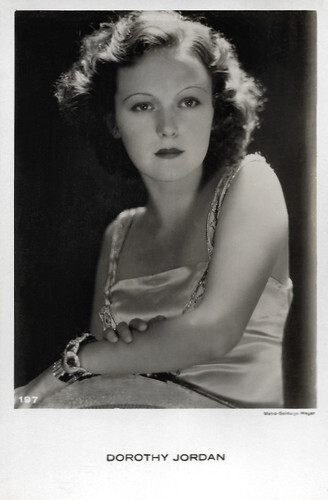
Dutch postcard, no. 197. Photo: Metro-Goldwyn-Mayer.
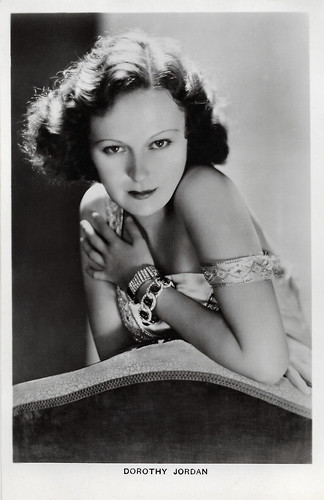
British postcard in the Picturegoer Series, London, no. 475b. Photo: Metro-Goldwyn-Mayer.
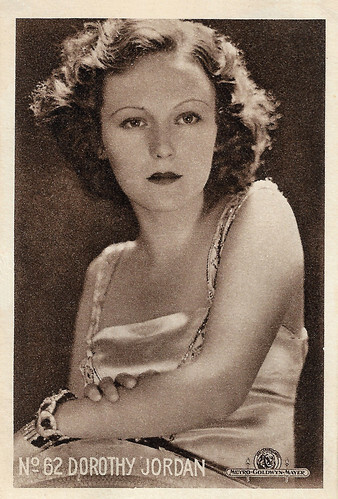
Dutch-Belgian collector card by N.V. London Caramel Works, Breda / Esschen, no. 62. Photo: Metro-Goldwyn-Mayer.
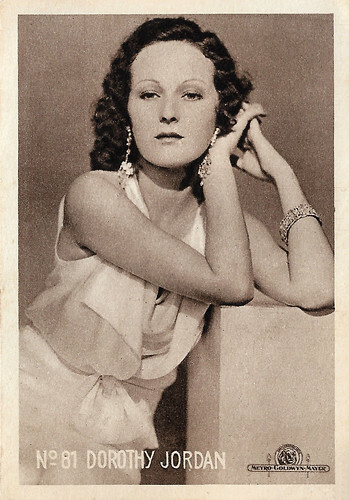
Dutch-Belgian collector card by N.V. London Caramel Works, Breda / Esschen, no. 81. Photo: Metro-Goldwyn-Mayer.
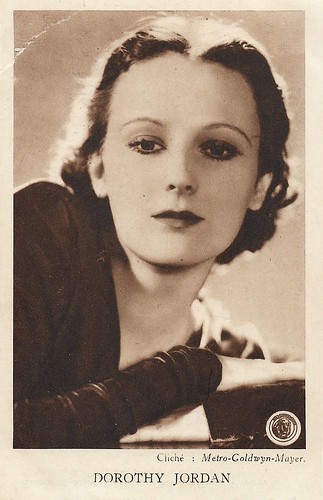
Belgian postcard by S.A. Cacao et Chocolat Kivou, Vilvo[o]rde, Belgium.
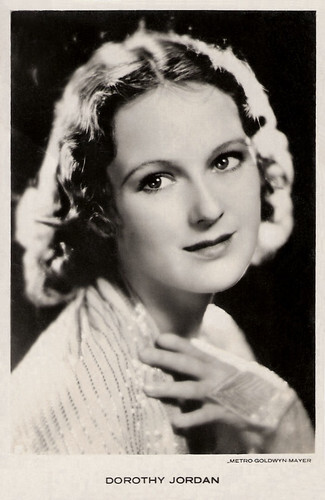
Dutch postcard. Photo: Metro-Goldwyn-Mayer.
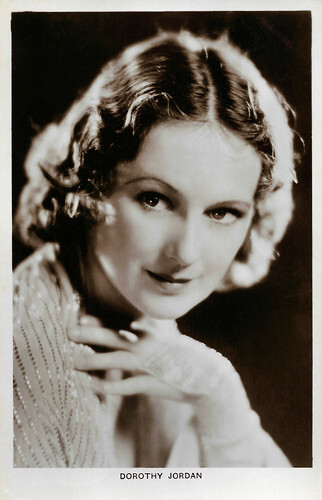
British postcard in the Picturegoer Series, London, no. 475a. Sent by mail in the Netherlands in 1932.
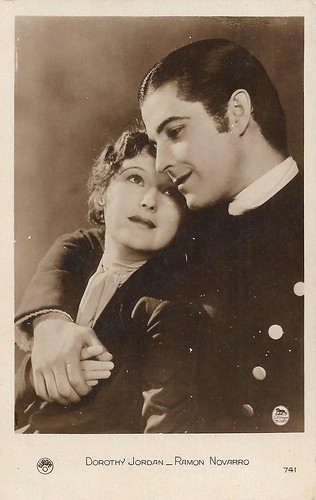
French postcard by Europe, no. 741. Photo: Metro-Goldwyn-Mayer. Ramon Novarro and Dorothy Jordan in Devil-May-Care (Sidney Franklin, 1929).
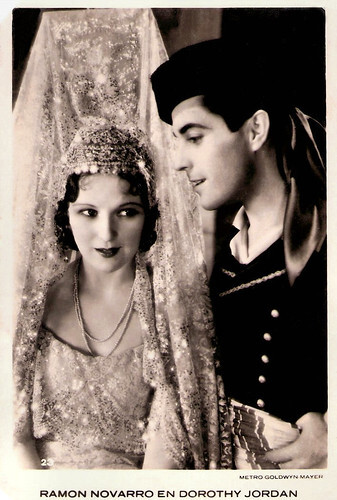
Dutch postcard by JosPe, Arnhem, no. 23. Photo: Metro-Goldwyn-Mayer. Ramon Novarro and Dorothy Jordan in In Gay Madrid (Robert Z. Leonard, 1930).
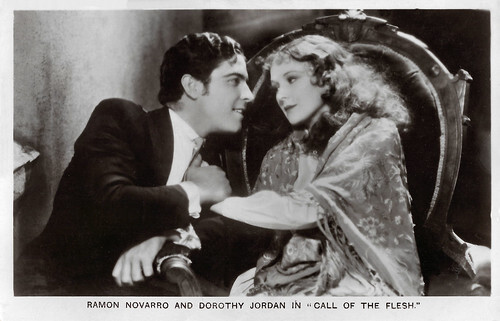
British postcard in the Picturegoer Series, London, no. 516. Ramon Novarro and Dorothy Jordan in Call of the Flesh (Charles Brabin, 1930).
Out of retirement for John Ford
Until 1933, Dorothy Jordan worked for various studios and played the female lead in multiple films. She had important parts as Marie Dressler 's daughter in the comedy-drama Min and Bill (George W. Hill, 1930) with Wallace Beery , and as simple-minded Southern girl Betty Wright in the drama The Cabin in the Cotton (Michael Curtiz, 1932) with Richard Barthelmess and Bette Davis .
One of her better roles was as an unwed mother in Bondage (Alfred Santrell, 1933). In 1933 Jordan left the film industry to marry film producer and director Merian C. Cooper. The couple moved to Coronado, San Diego County, and they had three children.
In 1937, Jordan emerged from retirement, unsuccessfully screen-testing for the role of Melanie in Gone With the Wind (Victor Fleming, George Cukor, Sam Wood, 1939). Merian C. Cooper was a good friend of and frequent collaborator with Western director John Ford. In 1947, they formed Argosy Productions.
For Argosy's The Sun Shines Bright (John Ford, 1953), Jordan again came out of retirement for a small role. She had another small role as the sister-in-law of Ethan Edwards in the epic Argosy film The Searchers (John Ford, 1956) starring John Wayne . Jordan also played a small role in The Wings of Eagles (John Ford, 1957), then retired permanently.
I.S. Mowis writes on IMDb that she became somewhat reticent about discussing her career as a movie actress in her later years. Jordan continued to live in Coronado, California until Cooper died in 1973. Fifteen years later, Dorothy Jordan died of congestive heart failure in 1988 in Cedars-Sinai Medical Center in Los Angeles, at the age of 82. Her body was cremated at the Chapel of the Pines Crematory in Los Angeles, California, and her ashes scattered at sea.
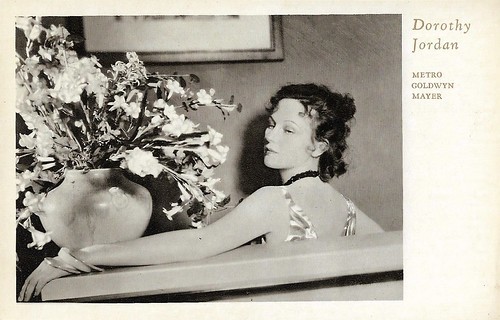
Italian postcard by Cinema-Illustrazione, Milano, series 1, no. 12. Photo: Metro-Goldwyn-Mayer.
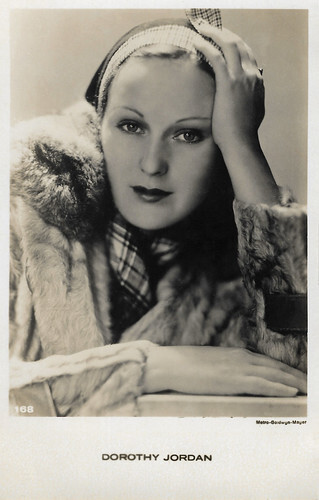
Dutch postcard, no. 168. Photo: Metro Goldwyn Mayer.
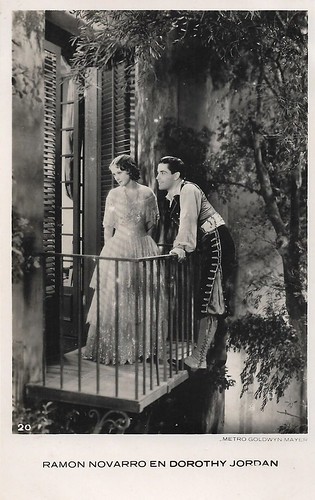
Dutch postcard, no. 20. Photo: Metro-Goldwyn-Mayer. Dorothy Jordan and Ramon Novarro in In Gay Madrid (Robert Z. Leonard, 1930). The editor is unknown (the back of the card is blank), but as we have another Dutch card of the same film with the same typography and the number, edited by JosPe, Arnhem, this must be a JosPe card too.
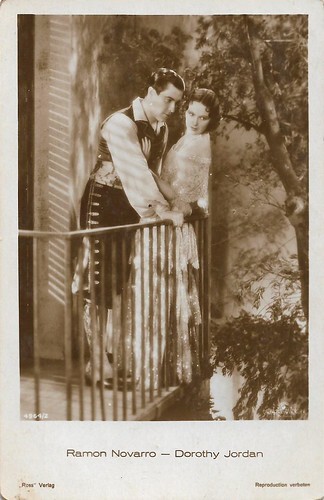
German postcard by Ross Verlag, no. 4964/2. Photo: Metro-Goldwyn-Mayer. Dorothy Jordan and Ramon Novarro in In Gay Madrid (Robert Z. Leonard, 1930).
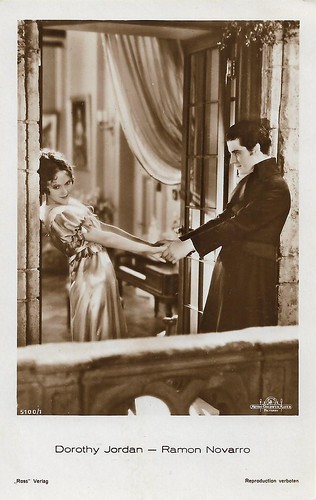
German postcard by Ross Verlag, no. 5100/1, 1930-1931. Photo: Metro-Goldwyn-Mayer. Ramon Novarro and Dorothy Jordan in Devil-May-Care (Sidney Franklin, 1929).
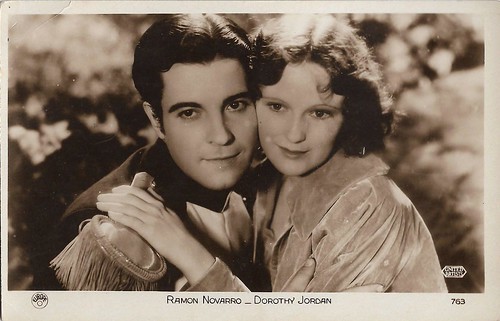
French postcard by Europe, no. 763. Photo: United Artists. Ramon Novarro and Dorothy Jordan in Devil-May-Care (Sidney Franklin, 1929). The French title was Bataille de Dames. The United Artists logo on this card is puzzling, as the film was an MGM production.
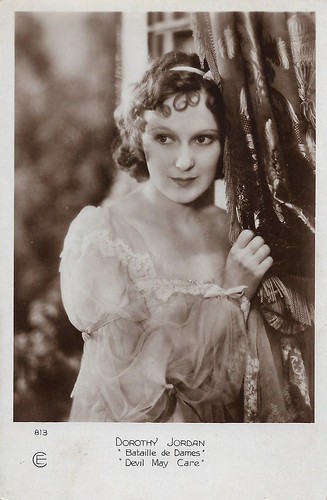
French postcard by Cinémagazine-Edition, Paris, no. 613. Dorothy Jordan in Devil-May-Care (Sidney Franklin, 1929), starring Ramon Novarro. The French title was Bataille de Dames.
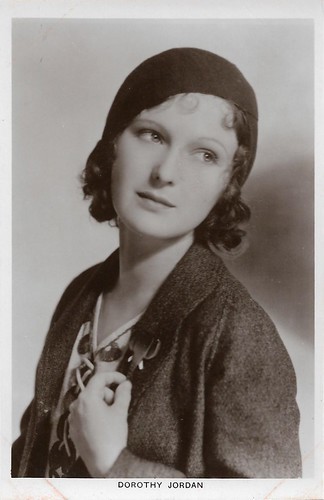
British postcard in the Picturegoer series, London.
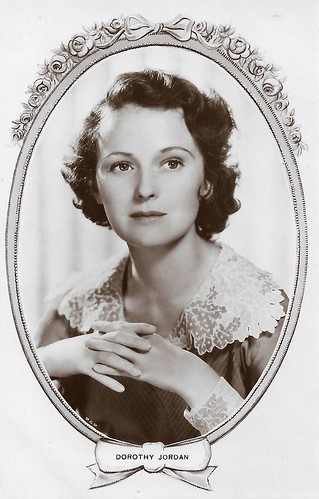
British postcard in the Cameo Series, London, no. K.17.
Sources: (IMDb), Wikipedia, and .

German postcard by Ross Verlag, Berlin, no. 5621/2, 1930-1931. Photo: Metro-Goldwyn-Mayer.

German postcard by Ross Verlag, no. 5784/2, 1930-1931. Photo: Metro-Goldwyn-Mayer.

British postcard in the Colourgraph Series, London, no. C. 102.

French postcard by Europe, no. 967. Photo: Metro-Goldwyn-Mayer (MGM).

German postcard by Ross Verlag, no. 5925/1, 1930-1931. Photo: Metro-Goldwyn-Mayer.

German postcard by Ross Verlag, no. 4964/2. Photo: Metro-Goldwyn-Mayer. Dorothy Jordan and Ramon Novarro in In Gay Madrid (Robert Z. Leonard, 1930).

German postcard by Ross Verlag, no. 7247/1, 1932-1933. Photo: Metro-Goldwyn-Mayer.
Ramon Novarro's sultry leading lady
Dorothy Hendricks Jordan was born in Clarksville, Tennessee, in 1906. Jordan studied at what is now Rhodes College and the American Academy of Dramatic Arts.
Trained as a ballerina, she first graced the stage as a chorus girl in Broadway musicals, like 'Funny Face' (1927), with Fred Astaire , 'Treasure Girl' (1928) with Gertrude Lawrence and Clifton Webb, and 'Garrick Gaieties'.
This led to what turned out to be a fairly short film career, beginning with a run-of-the-mill thriller, Black Magic (George B. Seitz, 1929). She played Mary Pickford 's sister in the comedy The Taming of the Shrew (Sam Taylor, 1929). It was the first sound film adaptation of the famous William Shakespeare play.
Jordan was the sultry leading lady of Ramon Novarro in the musical Devil-May-Care (Sidney Franklin, 1929) with a Technicolor sequence of the Albertina Rasch Dancers. It was Novarro's talkie debut. Next, the two stars appeared together in the musicals Call of the Flesh (Charles Brabin, 1930) and In Gay Madrid (Robert Z. Leonard, 1930), but then American audiences grew tired of musicals.
Jordan worked with several well-known actors in the next years, including Clark Gable , Lionel Barrymore , Walter Huston, and Jimmy Durante. Contemporary critics were frequently unimpressed with Dorothy's acting, whether speaking her lines too quickly in Hell Bound (Walter Lang, 1931) or delivering them as a 'memory citation' in Beloved Bachelor (Lloyd Corrigan, 1931).

Dutch postcard, no. 197. Photo: Metro-Goldwyn-Mayer.

British postcard in the Picturegoer Series, London, no. 475b. Photo: Metro-Goldwyn-Mayer.

Dutch-Belgian collector card by N.V. London Caramel Works, Breda / Esschen, no. 62. Photo: Metro-Goldwyn-Mayer.

Dutch-Belgian collector card by N.V. London Caramel Works, Breda / Esschen, no. 81. Photo: Metro-Goldwyn-Mayer.

Belgian postcard by S.A. Cacao et Chocolat Kivou, Vilvo[o]rde, Belgium.

Dutch postcard. Photo: Metro-Goldwyn-Mayer.

British postcard in the Picturegoer Series, London, no. 475a. Sent by mail in the Netherlands in 1932.

French postcard by Europe, no. 741. Photo: Metro-Goldwyn-Mayer. Ramon Novarro and Dorothy Jordan in Devil-May-Care (Sidney Franklin, 1929).

Dutch postcard by JosPe, Arnhem, no. 23. Photo: Metro-Goldwyn-Mayer. Ramon Novarro and Dorothy Jordan in In Gay Madrid (Robert Z. Leonard, 1930).

British postcard in the Picturegoer Series, London, no. 516. Ramon Novarro and Dorothy Jordan in Call of the Flesh (Charles Brabin, 1930).
Out of retirement for John Ford
Until 1933, Dorothy Jordan worked for various studios and played the female lead in multiple films. She had important parts as Marie Dressler 's daughter in the comedy-drama Min and Bill (George W. Hill, 1930) with Wallace Beery , and as simple-minded Southern girl Betty Wright in the drama The Cabin in the Cotton (Michael Curtiz, 1932) with Richard Barthelmess and Bette Davis .
One of her better roles was as an unwed mother in Bondage (Alfred Santrell, 1933). In 1933 Jordan left the film industry to marry film producer and director Merian C. Cooper. The couple moved to Coronado, San Diego County, and they had three children.
In 1937, Jordan emerged from retirement, unsuccessfully screen-testing for the role of Melanie in Gone With the Wind (Victor Fleming, George Cukor, Sam Wood, 1939). Merian C. Cooper was a good friend of and frequent collaborator with Western director John Ford. In 1947, they formed Argosy Productions.
For Argosy's The Sun Shines Bright (John Ford, 1953), Jordan again came out of retirement for a small role. She had another small role as the sister-in-law of Ethan Edwards in the epic Argosy film The Searchers (John Ford, 1956) starring John Wayne . Jordan also played a small role in The Wings of Eagles (John Ford, 1957), then retired permanently.
I.S. Mowis writes on IMDb that she became somewhat reticent about discussing her career as a movie actress in her later years. Jordan continued to live in Coronado, California until Cooper died in 1973. Fifteen years later, Dorothy Jordan died of congestive heart failure in 1988 in Cedars-Sinai Medical Center in Los Angeles, at the age of 82. Her body was cremated at the Chapel of the Pines Crematory in Los Angeles, California, and her ashes scattered at sea.

Italian postcard by Cinema-Illustrazione, Milano, series 1, no. 12. Photo: Metro-Goldwyn-Mayer.

Dutch postcard, no. 168. Photo: Metro Goldwyn Mayer.

Dutch postcard, no. 20. Photo: Metro-Goldwyn-Mayer. Dorothy Jordan and Ramon Novarro in In Gay Madrid (Robert Z. Leonard, 1930). The editor is unknown (the back of the card is blank), but as we have another Dutch card of the same film with the same typography and the number, edited by JosPe, Arnhem, this must be a JosPe card too.

German postcard by Ross Verlag, no. 4964/2. Photo: Metro-Goldwyn-Mayer. Dorothy Jordan and Ramon Novarro in In Gay Madrid (Robert Z. Leonard, 1930).

German postcard by Ross Verlag, no. 5100/1, 1930-1931. Photo: Metro-Goldwyn-Mayer. Ramon Novarro and Dorothy Jordan in Devil-May-Care (Sidney Franklin, 1929).

French postcard by Europe, no. 763. Photo: United Artists. Ramon Novarro and Dorothy Jordan in Devil-May-Care (Sidney Franklin, 1929). The French title was Bataille de Dames. The United Artists logo on this card is puzzling, as the film was an MGM production.

French postcard by Cinémagazine-Edition, Paris, no. 613. Dorothy Jordan in Devil-May-Care (Sidney Franklin, 1929), starring Ramon Novarro. The French title was Bataille de Dames.

British postcard in the Picturegoer series, London.

British postcard in the Cameo Series, London, no. K.17.
Sources: (IMDb), Wikipedia, and .
Published on July 08, 2024 22:00
July 7, 2024
Richard Chamberlain
Impeccably handsome American actor Richard Chamberlain (1934) was TV's leading heartthrob because of his title role in Dr. Kildare (1961-1966). He turned his back on Hollywood, devoting himself to the stage and a new European film career. Later he became the 'King of the Miniseries'.
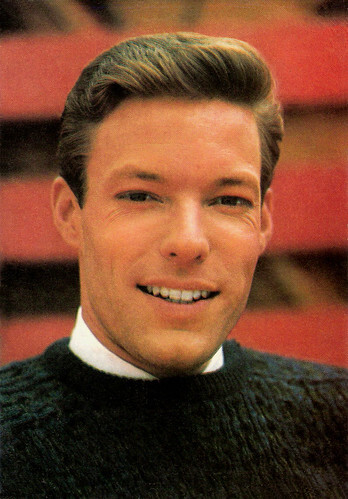
Spanish postcard by Postal Oscarcolor S.A., Hospitalet (Barcelona), no. 37.
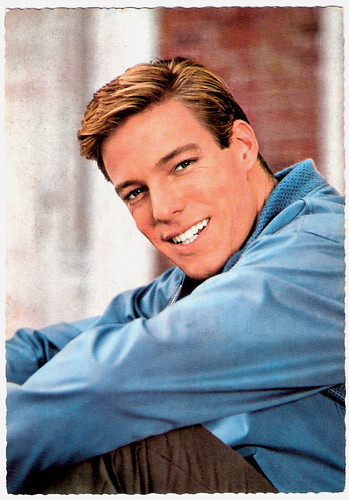
German postcard by Krüger, no. 902/240.
The leading heartthrob of early 1960s television
George Richard Chamberlain was born in 1934 in Beverly Hills, Los Angeles. He was the second son of Elsa Winnifred (von Benzon) and Charles Axiom Chamberlain, who was a salesman. He had a profoundly unhappy childhood and did not enjoy school, making up for it somewhat by excelling in track and developing a strong interest in acting. In 1952, Chamberlain graduated from Beverly Hills High School and in 1956, he graduated from Pomona College in Claremont, California. In December 1956, he was drafted into the United States Army for 16 months, serving in Korea.
Soon after his discharge from the army, Chamberlain headed for Hollywood. In 1959, he co-founded the theatre company the Company of Angels (CoA), now the oldest not-for-profit repertory theatre in Los Angeles. In just a couple of years, Chamberlain worked up a decent resumé with several visible guest spots on such popular series as Alfred Hitchcock Presents (1959), Gunsmoke (1960) and Mr. Lucky (1960). As the star of the medical series Dr. Kildare (1961-1966), he became the leading heartthrob of early 1960s television. As the impeccably handsome Dr. James Kildare, the slim, butter-haired hunk with the near-perfect Ivy-League charm and smooth, intelligent demeanour, had the distaff fans fawning unwavering over him through the series' run.
While this would appear to be a dream situation for any new star, it brought Chamberlain about a major, unsettling identity crisis. More interested in a reputation as a serious actor, Chamberlain took a huge risk and turned his back on Hollywood, devoting himself to the stage. An important dramatic role opposite Julie Christie in Petulia (Richard Lester, 1968) led him to England. He played a recently divorced doctor who finds solace in the company of an unhappily married socialite.
In the 1970s, Chamberlain enjoyed success as a leading man in European films. He played composer Pyotr Ilyich Tchaikovsky in The Music Lovers (Ken Russell, 1970) opposite Glenda Jackson , Lord Byron alongside Sarah Miles in Lady Caroline Lamb (Robert Bolt, 1972), and Aramis in The Three Musketeers (Richard Lester, 1973) with Michael York as D'Artagnan. The sequel, The Four Musketeers (Richard Lester, 1974), was released the following year.
Then he was the villain in the disaster film The Towering Inferno (John Guillermin, 1974) opposite Steve McQueen and Paul Newman , and Edmond Dantes in The Count of Monte Cristo (David Greene, 1975). In The Slipper and the Rose (Bryan Forbes, 1976), a musical version of the Cinderella story, co-starring Gemma Craven as Cinderella, he displayed his vocal talents as the Prince. In 1977, he earned cult status for the Australian thriller The Last Wave (Peter Weir, 1977). He played a Sydney lawyer who defends five Aboriginal Persons in a ritualised taboo murder and in the process learns disturbing things about himself and premonitions.
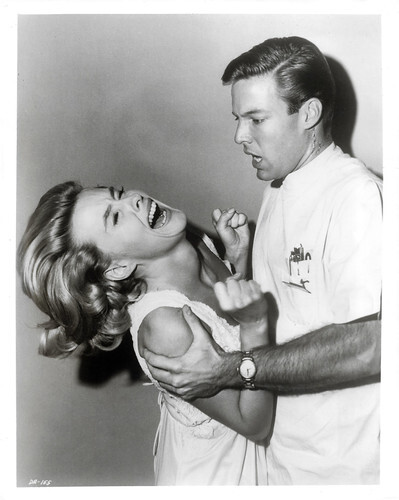
American press photo by Helen Ferguson Public Relations, El Camino / Beverly Hills, no. DR 155. Photo: MGM-TV. Dina Merrill and Richard Chamberlain in the episode Oh, My Daughter (Buzz Kulik, 1962) of the TV series Dr. Kildare (1961-1966).
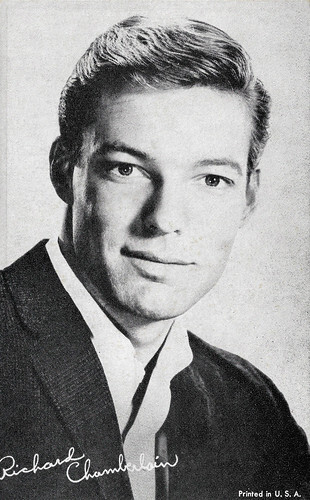
American Arcade card.
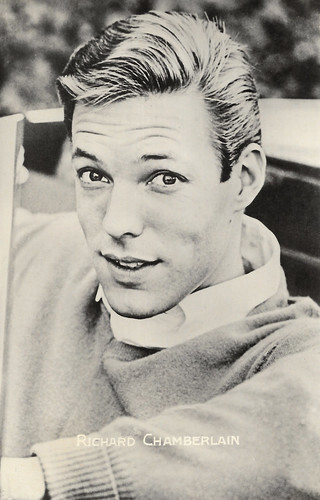
French postcard by Editions P.I., no. S-1679.
Outed at the age of 55
Since then, Richard Chamberlain has appeared in several miniseries such as Shōgun (Jerry London, 1980) opposite Toshirô Mifune and The Thorn Birds (Daryl Duke, 1983). He was the first to play Jason Bourne in the miniseries The Bourne Identity Roger Young, (1988). It earned him the title 'King of the Miniseries'.
He also performed classical stage roles and worked in the musical theatre. He was awarded the 1973 Los Angeles Drama Critics Circle Award for Distinguished Performance for his role as Cyrano in 'Cyrano de Bergerac' (1973). On stage, he was also Henry Higgins in 'My Fair Lady' (1993-1994), Captain Von Trapp in 'The Sound of Music' (1999) and Ebenezer Scrooge in 'Scrooge: The Musical' (2005).
Chamberlain was romantically involved with television actor Wesley Eure in the early 1970s. In 1977, he met actor-writer-producer Martin Rabbett, with whom he began a long-term relationship. This led to a civil union in Hawaii, where the couple resided from 1986 to 2010 when Chamberlain legally adopted Rabbett to protect his future estate. Rabbett and Chamberlain starred together in, among others, Allan Quatermain and the Lost City of Gold (Gary Nelson, 1986), in which they played brothers Allan and Robeson Quatermain.
Chamberlain was outed, at the age of 55, by the French women's magazine Nous Deux in December 1989, but it was not until 2003 that he confirmed his homosexuality, in his autobiography, 'Shattered Love'. Gary Brumburgh at IMDb : "Married now to his longtime partner of over 40 years, writer/producer Martin Rabbett, he has accepted himself and shown to be quite a good sport in the process, appearing as gay characters in the film I Now Pronounce You Chuck & Larry (Dennis Dugan, 2007), and in TV episodes of Will & Grace (1998), Desperate Housewives (2004) and Brothers & Sisters (2006)."
In the spring of 2010, Richard Chamberlain returned to Los Angeles to pursue career opportunities, leaving Rabbett in Hawaii. Recently, Richard Chamberlain could be seen in the films, Nightmare Cinema (Joe Dante, 2018) and Finding Julia (Igor Sunara, 2019) and in an episode of the TV series Twin Peaks (David Lynch, 2017) starring Kyle MacLachlan.
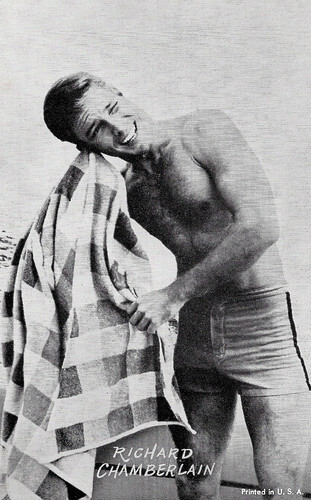
American Arcade card.
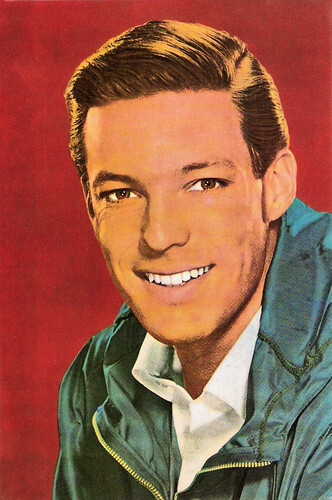
Spanish postcard by Postalrcolor, Hospitalet (Barcelona), no. 55, 1964.
Sources: (IMDb), Wikipedia and .

Spanish postcard by Postal Oscarcolor S.A., Hospitalet (Barcelona), no. 37.

German postcard by Krüger, no. 902/240.
The leading heartthrob of early 1960s television
George Richard Chamberlain was born in 1934 in Beverly Hills, Los Angeles. He was the second son of Elsa Winnifred (von Benzon) and Charles Axiom Chamberlain, who was a salesman. He had a profoundly unhappy childhood and did not enjoy school, making up for it somewhat by excelling in track and developing a strong interest in acting. In 1952, Chamberlain graduated from Beverly Hills High School and in 1956, he graduated from Pomona College in Claremont, California. In December 1956, he was drafted into the United States Army for 16 months, serving in Korea.
Soon after his discharge from the army, Chamberlain headed for Hollywood. In 1959, he co-founded the theatre company the Company of Angels (CoA), now the oldest not-for-profit repertory theatre in Los Angeles. In just a couple of years, Chamberlain worked up a decent resumé with several visible guest spots on such popular series as Alfred Hitchcock Presents (1959), Gunsmoke (1960) and Mr. Lucky (1960). As the star of the medical series Dr. Kildare (1961-1966), he became the leading heartthrob of early 1960s television. As the impeccably handsome Dr. James Kildare, the slim, butter-haired hunk with the near-perfect Ivy-League charm and smooth, intelligent demeanour, had the distaff fans fawning unwavering over him through the series' run.
While this would appear to be a dream situation for any new star, it brought Chamberlain about a major, unsettling identity crisis. More interested in a reputation as a serious actor, Chamberlain took a huge risk and turned his back on Hollywood, devoting himself to the stage. An important dramatic role opposite Julie Christie in Petulia (Richard Lester, 1968) led him to England. He played a recently divorced doctor who finds solace in the company of an unhappily married socialite.
In the 1970s, Chamberlain enjoyed success as a leading man in European films. He played composer Pyotr Ilyich Tchaikovsky in The Music Lovers (Ken Russell, 1970) opposite Glenda Jackson , Lord Byron alongside Sarah Miles in Lady Caroline Lamb (Robert Bolt, 1972), and Aramis in The Three Musketeers (Richard Lester, 1973) with Michael York as D'Artagnan. The sequel, The Four Musketeers (Richard Lester, 1974), was released the following year.
Then he was the villain in the disaster film The Towering Inferno (John Guillermin, 1974) opposite Steve McQueen and Paul Newman , and Edmond Dantes in The Count of Monte Cristo (David Greene, 1975). In The Slipper and the Rose (Bryan Forbes, 1976), a musical version of the Cinderella story, co-starring Gemma Craven as Cinderella, he displayed his vocal talents as the Prince. In 1977, he earned cult status for the Australian thriller The Last Wave (Peter Weir, 1977). He played a Sydney lawyer who defends five Aboriginal Persons in a ritualised taboo murder and in the process learns disturbing things about himself and premonitions.

American press photo by Helen Ferguson Public Relations, El Camino / Beverly Hills, no. DR 155. Photo: MGM-TV. Dina Merrill and Richard Chamberlain in the episode Oh, My Daughter (Buzz Kulik, 1962) of the TV series Dr. Kildare (1961-1966).

American Arcade card.

French postcard by Editions P.I., no. S-1679.
Outed at the age of 55
Since then, Richard Chamberlain has appeared in several miniseries such as Shōgun (Jerry London, 1980) opposite Toshirô Mifune and The Thorn Birds (Daryl Duke, 1983). He was the first to play Jason Bourne in the miniseries The Bourne Identity Roger Young, (1988). It earned him the title 'King of the Miniseries'.
He also performed classical stage roles and worked in the musical theatre. He was awarded the 1973 Los Angeles Drama Critics Circle Award for Distinguished Performance for his role as Cyrano in 'Cyrano de Bergerac' (1973). On stage, he was also Henry Higgins in 'My Fair Lady' (1993-1994), Captain Von Trapp in 'The Sound of Music' (1999) and Ebenezer Scrooge in 'Scrooge: The Musical' (2005).
Chamberlain was romantically involved with television actor Wesley Eure in the early 1970s. In 1977, he met actor-writer-producer Martin Rabbett, with whom he began a long-term relationship. This led to a civil union in Hawaii, where the couple resided from 1986 to 2010 when Chamberlain legally adopted Rabbett to protect his future estate. Rabbett and Chamberlain starred together in, among others, Allan Quatermain and the Lost City of Gold (Gary Nelson, 1986), in which they played brothers Allan and Robeson Quatermain.
Chamberlain was outed, at the age of 55, by the French women's magazine Nous Deux in December 1989, but it was not until 2003 that he confirmed his homosexuality, in his autobiography, 'Shattered Love'. Gary Brumburgh at IMDb : "Married now to his longtime partner of over 40 years, writer/producer Martin Rabbett, he has accepted himself and shown to be quite a good sport in the process, appearing as gay characters in the film I Now Pronounce You Chuck & Larry (Dennis Dugan, 2007), and in TV episodes of Will & Grace (1998), Desperate Housewives (2004) and Brothers & Sisters (2006)."
In the spring of 2010, Richard Chamberlain returned to Los Angeles to pursue career opportunities, leaving Rabbett in Hawaii. Recently, Richard Chamberlain could be seen in the films, Nightmare Cinema (Joe Dante, 2018) and Finding Julia (Igor Sunara, 2019) and in an episode of the TV series Twin Peaks (David Lynch, 2017) starring Kyle MacLachlan.

American Arcade card.

Spanish postcard by Postalrcolor, Hospitalet (Barcelona), no. 55, 1964.
Sources: (IMDb), Wikipedia and .
Published on July 07, 2024 22:00
July 6, 2024
Abel Gance
Great French film director Abel Gance (1889-1981) was also a producer, writer and actor. He is best known for his three silent masterpieces: J'accuse/I Accuse (1919), La Roue/The Wheel (1923), and the monumental Napoléon (1927).
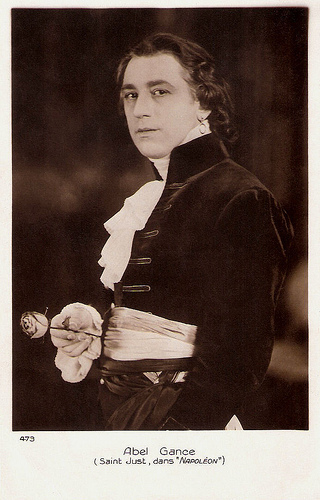
French postcard by Cinémagazine-Edition, no. 473. Photo: Abel Gance himself as Saint-Just in Napoléon (Abel Gance, 1927).
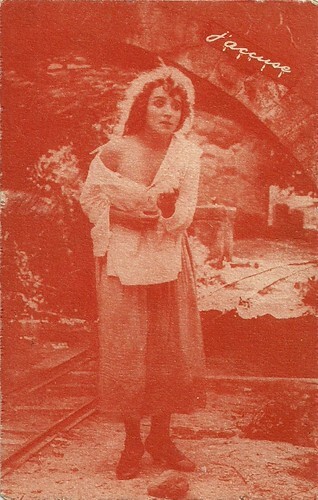
French postcard by Sadag de France, Imp., Paris, no 109. Maryse Dauvray as Edith Laurin, after being raped by a German soldier, in J'accuse/I Accuse (Abel Gance, 1919).
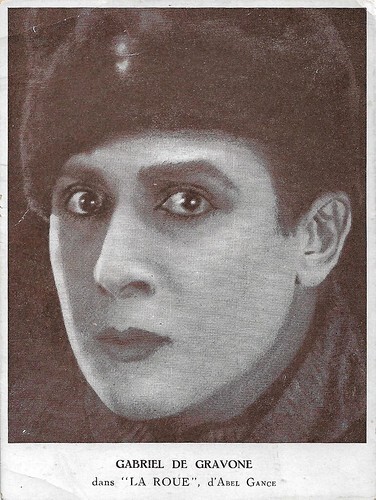
French postcard. Gabriel de Gravone in La Roue/The Wheel (Abel Gance, 1923).
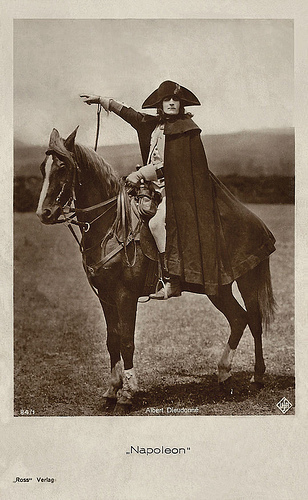
Albert Dieudonné in Napoléon (Abel Gance, 1927). German postcard by Ross Verlag, no. 84/1. Photo: Ufa.
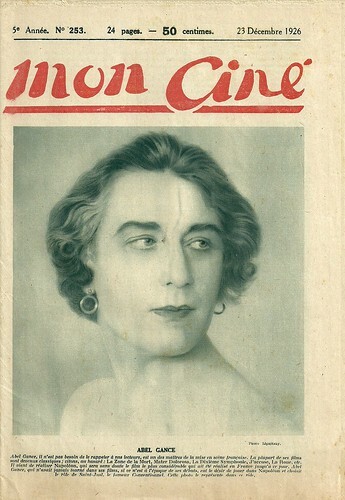
Director/actor Abel Gance on the cover of the French film journal Mon Ciné, 253, V, 23 December 1926. Gance is groomed as the character he played in his film Napoléon (1927), that of Saint-Just, one of the leading men of the French Terror.
Love of literature and art
Abel Gance was born Abel Eugène Alexandre Péréthon in Paris in 1889. He was the illegitimate son of a wealthy doctor, Abel Flamant, and a working-class mother, Françoise Péréthon (or Perthon). Initially taking his mother's name, he was brought up until the age of eight by his maternal grandparents in the coal mining town of Commentry in central France. He then returned to Paris to rejoin his mother who had married Adolphe Gance, a chauffeur and mechanic, whose name Abel then adopted. Although he later fabricated the history of a brilliant school career and middle-class background, Gance left school at the age of 14, and the love of literature and art which sustained him throughout his life was the result of self-education.
He started working as a clerk in a solicitor's office, but after a couple of years, he turned to acting in the theatre. When he was 18, he was given a season's contract at the Théâtre Royal du Parc in Brussels, where he developed a friendship with the actor Victor Francen . While in Brussels, Gance wrote his first film scenarios, which he sold to director Léonce Perret. Back in Paris in 1909, he acted in his first film, Molière (Léonce Perret, 1909).
At that stage, he regarded the cinema as ‘infantile and stupid’ and was only drawn into film jobs by his poverty, but he nevertheless continued to write scenarios and often sold them to Gaumont. During this period he was diagnosed with tuberculosis, often fatal at that time, but after a period of retreat in Vittel, he overcame the disease. With some friends, he established a production company, Le Film Français, and began directing his own films in 1911. His first effort was La Digue/The Dam (Abel Gance, 1911), a historical film which featured the first screen appearance of Pierre Renoir . The film was never released.
Gance tried to maintain a connection with the theatre and he finished writing a monumental tragedy entitled 'Victoire de Samothrace', in which he hoped that Sarah Bernhardt would star. Its five-hour length, and Gance's refusal to cut it, proved to be a stumbling block. With the outbreak of World War I, Gance was rejected from the army on medical grounds and in 1915 he started writing and directing for a new film company, Film d'Art. He soon caused controversy with La Folie du docteur Tube/The Madness of Dr. Tube (Abel Gance, 1915), in which a scientist ( Albert Dieudonné ) takes a white powder, and then hallucinates. Gance and his cameraman Léonce-Henry Burel created the arresting hallucinations with distorting mirrors. According to Wikipedia , the producers were outraged and refused to show the film. A print of the film survives and Gance continued working for Film d'Art until 1918, making over a dozen commercially successful films.
His experiments included tracking shots, extreme close-ups, low-angle shots, and split-screen images. His subjects moved steadily away from simple action films towards psychological melodramas, such as Mater dolorosa/The Torture of Silence (Abel Gance, 1917) starring Emmy Lynn as a neglected wife who has an affair with her husband's brother. The film was a great commercial success, and it was followed by La Dixième Symphonie/The Tenth Symphony (Abel Gance, 1918), another marital drama featuring Emmy Lynn . Here Gance's mastery of lighting, composition and editing was accompanied by a range of literary and artistic references which some critics found pretentious and alienating. In 1917, Gance was at last drafted into the Army, in its Service Cinématographique. It deepened his preoccupation with the impact of the war and the depression which was caused by the deaths of many of his friends. He was discharged shortly after due to mustard gas poisoning.
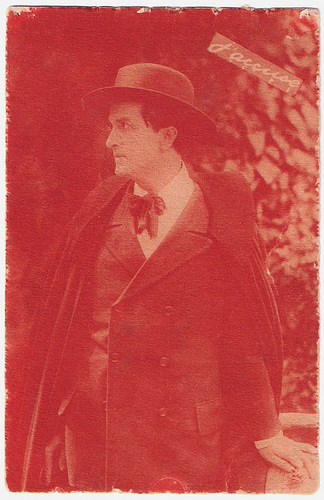
French postcard by Sadag de France, Imp., Paris, no. 109. Photo: Romuald Joubé in J'accuse/I Accuse (Abel Gance, 1919).
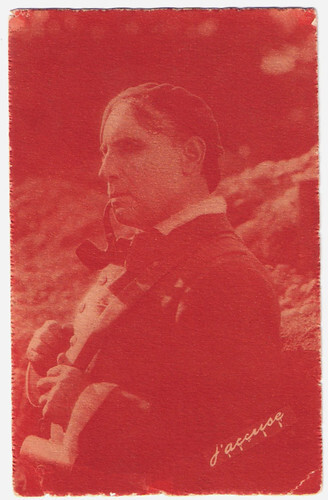
French postcard by Sadag de France, Imp., Paris, no. 109. Photo: Séverin-Mars in J'accuse/I Accuse (Abel Gance, 1919).
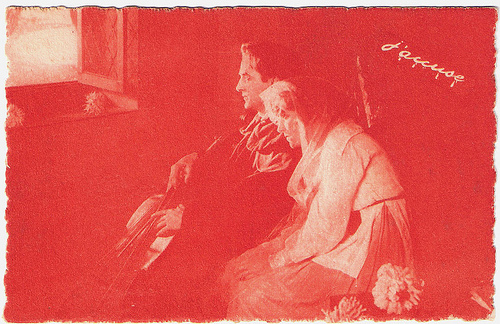
French postcard by Sadag de France, Imp., Paris, no. 109. Photo: Romuald Joubé and Maryse Dauvray in J'accuse/I Accuse Abel Gance, 1919).
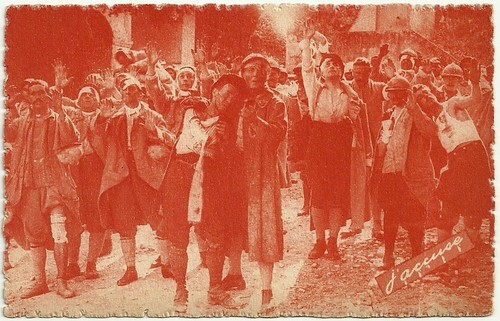
French postcard by Sadag de France, Imp., Paris, no. 109. Photo: publicity still for J'accuse/I Accuse (Abel Gance, 1919).
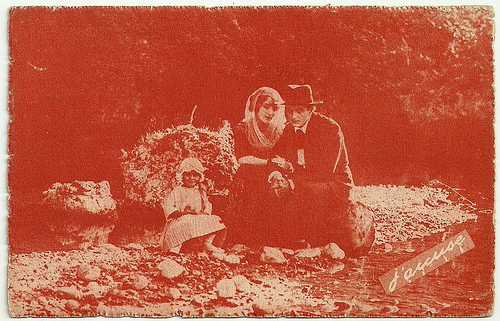
French postcard by Sadag de France, Imp., Paris, no. 109. Photo: Edith (Marise Dauvray), Jean Diaz ( Romuald Joubé ) and little Angele (Angèle Guys) towards the end of J'accuse/I Accuse (Abel Gance, 1919).
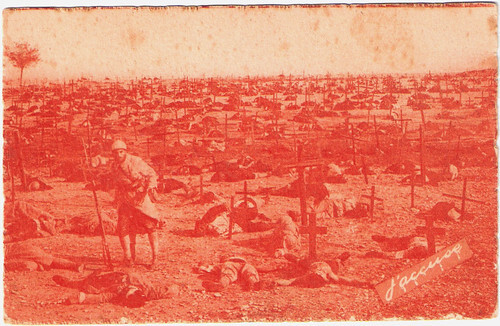
French postcard by Sadag de France, Imp., Paris, no. 109. Photo: publicity still for J'accuse/I Accuse (Abel Gance, 1919).
The horror and absurdity of war
When Abel Gance parted company with Film d'Art over a shortage of funds, Charles Pathé stepped in and produced his next film, J'accuse/I Accuse (Abel Gance, 1919) with Romuald Joubé and Séverin-Mars . Gance juxtaposed a romantic drama with the background of the waste and suffering of World War I. He re-enlisted himself in the Service Cinématographique to be able to film some scenes on a real battlefield at the front. The film's powerful depiction of wartime horrors, and particularly its climactic sequence of the ‘return of the dead’, made it an international success, and confirmed Gance as one of the most important directors in Europe.
James Travers at French Films : "Abel Gance’s powerful anti-war film still has the power to move and shock. Through the intimate microcosm of two soldiers united on the battlefield, Gance shows the horror and absurdity of war for all its worth. The question he poses is: if two rivals in love can settle their differences in peace, why cannot political leaders?"
In 1920 he developed his next project, La Roue/The Wheel (Abel Gance, 1923), while recuperating in Nice from Spanish flu, and its progress was deeply affected by the knowledge that his companion Ida Danis was dying of tuberculosis. His leading man and friend Séverin-Mars was also seriously ill - and died soon after the completion of the film. Nevertheless, Gance brought an unprecedented level of energy and imagination to the technical realisation of his film. The story is about a father ( Séverin-Mars ) and his son ( Gabriel de Gravone ) who both fall for the lovely adopted Norma ( Ivy Close ). This love triangle is set firstly against the dark and grimy background of locomotives and railway yards, and then among the snow-covered landscapes of the Alps. Gance employed elaborate editing techniques and innovative use of rapid cutting which made the film highly influential among other contemporary directors. The film cost 3 million French francs and took five years to complete, an extraordinarily risky venture at the time, and a major cause of anxiety for the film’s production company, Pathé. The finished film was originally in 32 reels and ran for nearly 9 hours, but it was subsequently edited down for distribution and these shorter versions have survived.
Gance had a brief change of pace with Au secours/Help! (Abel Gance, 1924), a short haunted house comedy with Max Linder , which he filmed in only three days. Then he embarked on his greatest project, a six-part life of Napoléon Bonaparte. Only the first part was completed, tracing Bonaparte's early life, through the Revolution, and up to the invasion of Italy, but even this occupied a vast canvas with meticulously recreated historical scenes and scores of characters. Napoléon (Abel Gance, 1927), featuring Albert Dieudonné , is full of experimental techniques, combining rapid cutting, hand-held cameras, superimposition of images, and, most famously, his wide-screen sequences.
Abel Gance achieved them with a system he called Polyvision, by using triple cameras (and projectors) to create a spectacular panoramic effect. In the climactic finale, he created a widescreen image of a French flag with the outer two film panels tinted blue and red. The original version of Napoléon ran for 6 hours. A shortened version received a triumphant première at the Paris Opéra in April 1927 before a distinguished audience that included the future General de Gaulle. The length was reduced still further for French and European distribution, and it became even shorter when it was shown in America. This was not the end of the film's career, however. Gance re-used material from it in later films, and the triumphant restoration of the silent film in the 1980s confirmed it as his most famous work. James Travers: "Napoléon is both a stunningly visual work of cinema and a poetically beautiful telling of the life of France’s most famous general."
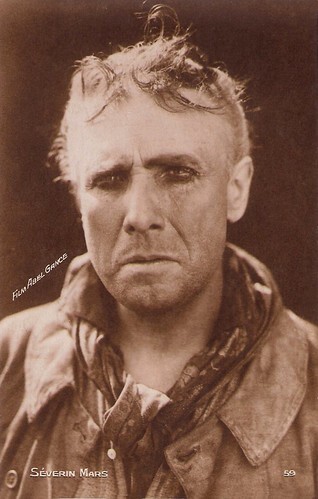
French postcard by Cinémagazine-Edition, no. 59. Photo: Film Abel Gance. Séverin-Mars in La Roue/The Wheel (Abel Gance, 1923).
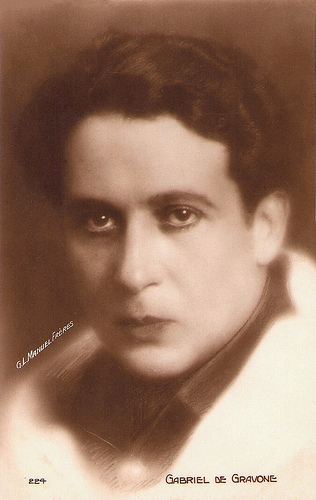
French postcard by Cinémagazine-Edition, no. 224. Photo: G.L. Manuel Frères. Gabriel de Gravone .
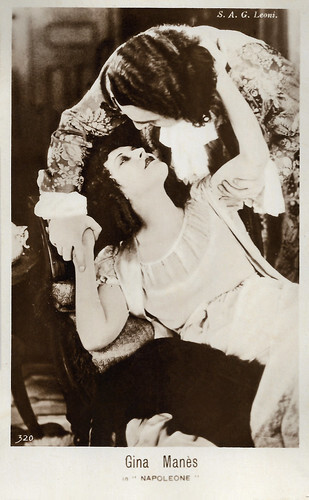
Italian postcard by G.B. Falci Editore, Milano, no. 320. Photoi: S.A.G. Leoni. Gina Manès as Josephine de Beauharnais in Napoléon (Abel Gance, 1927).
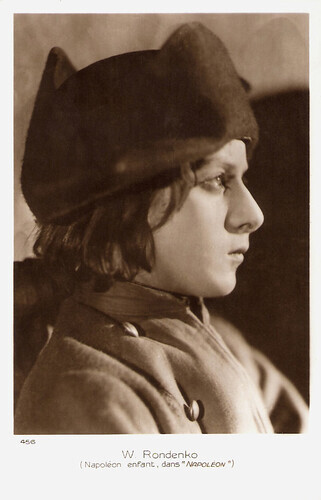
French postcard by Cinémagazine-Edition, no. 456. Photo: Vladimir Roudenko as the young Napoléon in Napoléon (Abel Gance, 1927).
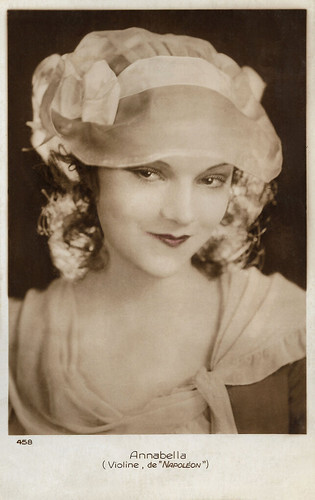
French postcard by Cinémagazine-Edition, Paris, no. 458. Annabella as Violine in Napoléon (Abel Gance, 1927).
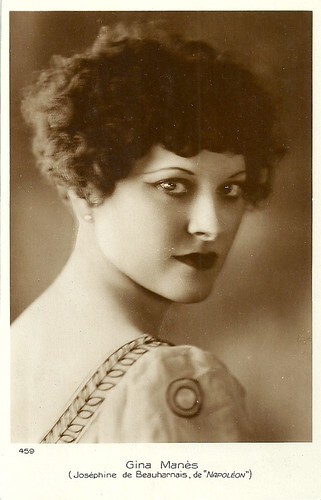
French postcard by Cinémagazine-Edition, no. 459. Gina Manès as Joséphine de Beauharnais in Napoléon (Abel Gance, 1927).
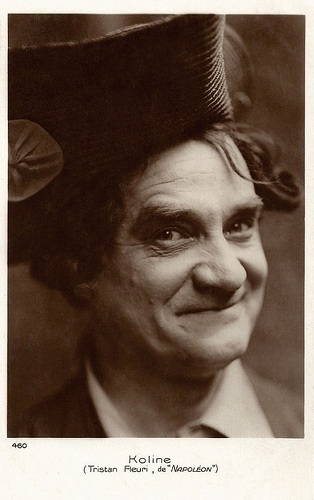
French postcard by Editions Cinémagazine, no. 460. Nicolas Koline as Tristan Fleuri in Napoléon (Abel Gance, 1927).
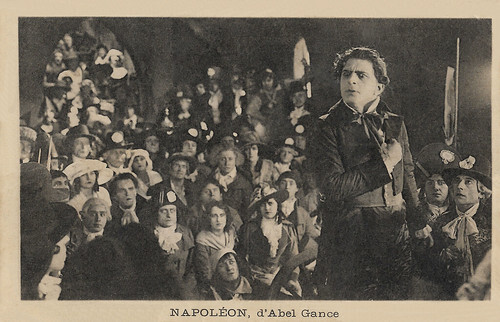
French postcard by Imp. Catala Frères, Paris. Photo: Socété Générale de Films, Paris. Acho Chakatouny as Pozzo di Borgo in Napoléon (Abel Gance, 1927).
A critical and commercial disaster
Abel Gance embraced the arrival of sound with enthusiasm and his first production was La Fin du monde/End of the World (Abel Gance, 1931) starring Victor Francen and Gance himself. This was an expensive Science-Fiction film about a comet hurling toward Earth on a collision course and the different reactions to people on the impending disaster. Gance had edited it to a running time of just over three hours. When the backers felt that the film was becoming far too long, they took production control away from Gance and cut the film to a shorter length. The result was a critical and commercial disaster.
Thereafter the creative independence that Gance had enjoyed in the previous decade was seriously curtailed. He continued to be a busy filmmaker throughout the 1930s, but he characterised most of the films made during this period as ones that he did ‘not to live, but in order not to die’. In 1932 he tried to demonstrate his credentials as a reliable and efficient director by filming a remake of Mater dolorosa which he completed within 18 days and within budget. Among the other 'commercial' works that followed were Lucrèce Borgia/Lucretia Borgia (Abel Gance, 1935) with Edwige Feuillère , and Un Grand Amour de Beethoven/Beethoven's Great Love (1937), with Harry Baur as the composer.
One of the more personal projects that he was able to undertake was a new version of J'accuse/I Accuse (Abel Gance, 1939) starring Victor Francen , not so much a remake of his 1919 film as a continuation of it. Gance conceived it as a warning against the new war that he saw impending. In the upheaval following the German invasion of France in the summer of 1940, Gance went to the Free Zone in the south. He arranged a contract to make a film, Vénus aveugle/Blind Venus (Abel Gance, 1941) featuring Viviane Romance , at the Victorine studios in Nice. He saw it as an allegory of the current state of France and a message of hope directed to the ordinary French people in their time of misfortune. At this period Gance was among those who saw Philippe Pétain as the means of the country's salvation, and in September 1941 Vénus aveugle had its first screening in Vichy, preceded by a speech in which Gance paid tribute to Pétain. On the other hand, even before its première, the film became the object of an attack from the collaborationist and anti-Semitic newspaper Aujourd'hui, which insinuated that the freedoms of film-making in the unoccupied zone in the south of France were being exploited by Jews: the producer Jean-Jacques Mecatti, Viviane Romance , and Gance himself were singled out for derisive references to their Jewish connections.
After completing one more film, Le Capitaine Fracasse/Captain Fracasse (Abel Gance, 1943) with Fernand Gravey , Gance went to Spain in August 1943, citing growing hostility from the German authorities in France. He remained there until October 1945. After the war, his difficulties in getting support for his projects increased and he made few films. The historical melodrama La Tour de Nesle/Tower of Nesle (Abel Gance, 1954) with Silvana Pampanini and Pierre Brasseur was his first film in colour. It provoked some revival of interest in his work, and François Truffaut named Gance "a neglected auteur of genius". Gance returned to the Napoleonic spectacle with Austerlitz/The Battle of Austerlitz (Abel Gance, 1960) starring Pierre Mondy as Napoleon. He made a further historical pageant in Cyrano et D'Artagnan/Cyrano and D'Artagnan (Abel Gance, 1963) starring José Ferrer and Jean-Pierre Cassel , and then moved into television for his final works, also on historical subjects.
Throughout his life, Gance kept returning to Napoléon, often editing his own footage into shorter versions, adding a soundtrack, and sometimes filming new material, and as a result, the original 1927 film was lost from view for decades. After various attempts at reconstruction, the dedicated work of the film historian Kevin Brownlow produced a five-hour version of the film, still incomplete but fuller than anyone had seen since the 1920s. This version was presented at the Telluride Film Festival in August 1979, with the frail 89-year-old director in attendance. The occasion brought a belated triumph to Gance's career, and subsequent performances and further restoration made his name known to a worldwide audience. Abel Gance married three times: in 1912 to Mathilde Thizeau; in 1922 to Marguerite Danis (sister of Ida); in 1933 to Marie-Odette Vérité (Sylvie Grenade), who died in 1978. Gance died of tuberculosis in Paris in 1981 at the age of 92. He still had plans to make an epic film about Christopher Columbus.
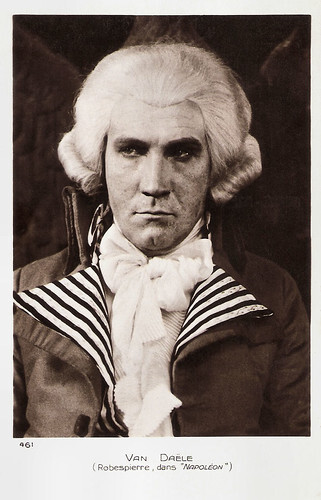
French postcard by Cinémagazine-Edition, no. 461. Edmond Van Daële as Robespierre in Napoléon (Abel Gance, 1927).
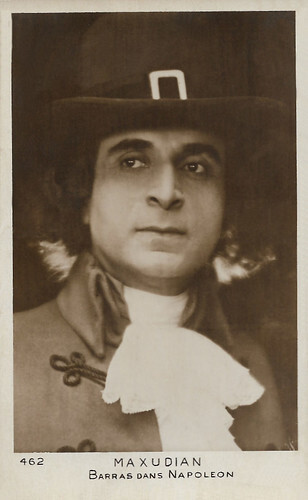
French postcard by Cinémagazine-Edition, no. 462. Photo: Max Maxudian as Barras in Napoléon (Abel Gance, 1927).
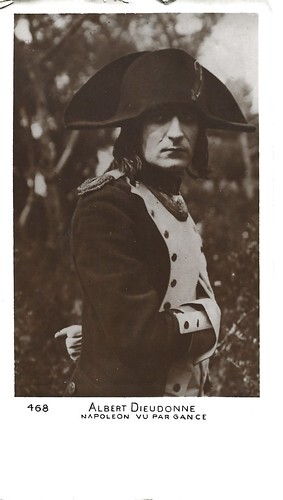
French postcard by Cinémagazine-Edition, no. 468. Albert Dieudonné as Napoleon in Napoléon/Napoléon vu par Abel Gance (Abel Gance, 1927).
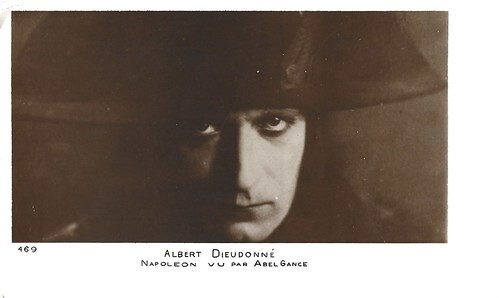
French postcard by Cinémagazine-Edition, no. 469. Albert Dieudonné as Napoleon in Napoléon/Napoléon vu par Abel Gance (Abel Gance, 1927).
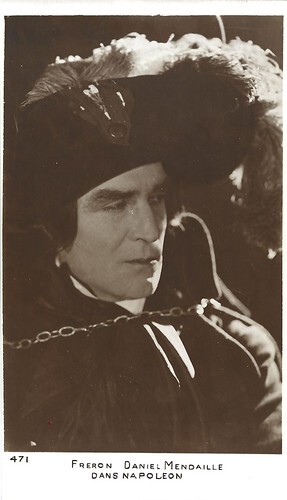
French postcard by Cinémagazine-Edition, no. 471. Daniel Mendaille as Louis Fréron in Napoléon/Napoléon vu par Abel Gance (Abel Gance, 1927).
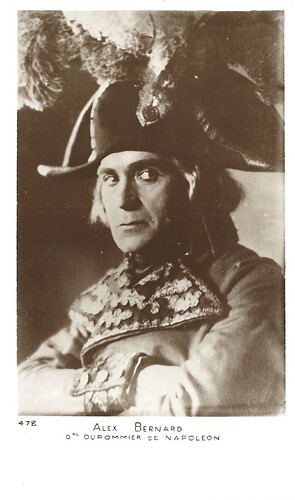
French postcard for Cinémagazine-Edition, no. 472. Alex Bernard as General Dupommier in Napoléon/ Napoléon vu par Abel Gance (Abel Gance, 1927).
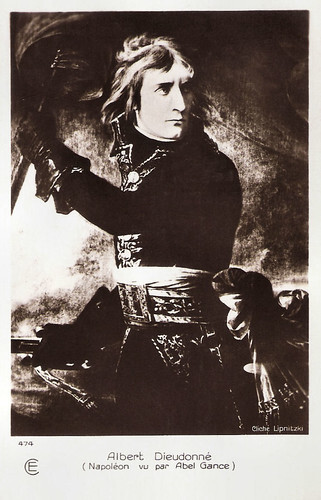
French postcard by Cinémagazine-Edition, no. 474. Photo: Lipnitzky. Albert Dieudonné in Napoléon (Abel Gance. 1927). The postcard is a pastiche of the famous portrait of Bonaparte at Arcole, 1796, by Baron Antoine-Jean Gros.
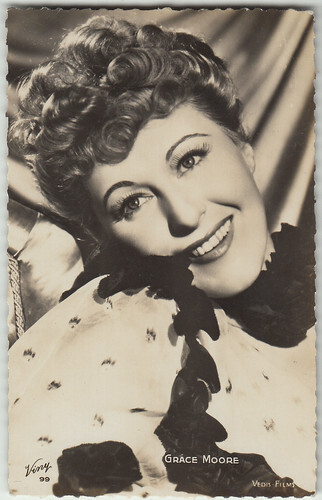
French postcard by Viny, no. 99. Photo: Vedis Films. Grace Moore in Louise (Abel Gance, 1939). Collection: Marlene Pilaete.
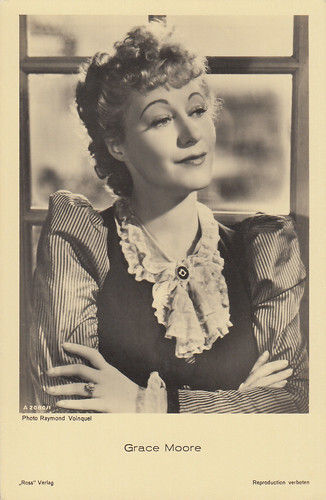
German postcard by Ross Verlag, no. A 2080/1, 1939-1940. Photo: Raymond Voinquel. Grace Moore in Louise (Abel Gance, 1939). Collection: Marlene Pilaete.
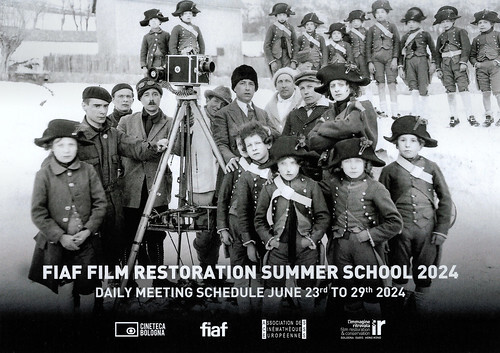
Italian card by Cineteca Bologna to promote the FIAF Film Restoration Summer School 2024. Photo: at the set of Napoléon (Abel Gance, 1927). The screening of the new reconstruction Napoléon, as seen by Abel Gance at Cinema Modernissimo, was one of the highlights of Il Cinema Ritrovato 2024. Napoléon as seen by Abel Gance was in May 2024 the opening of Cannes Classics. The reconstruction of the monumental film by the Cinémathèque Française took 15 years.
Sources: James Travers (French Films), Wikipedia, AllMovie and .

French postcard by Cinémagazine-Edition, no. 473. Photo: Abel Gance himself as Saint-Just in Napoléon (Abel Gance, 1927).

French postcard by Sadag de France, Imp., Paris, no 109. Maryse Dauvray as Edith Laurin, after being raped by a German soldier, in J'accuse/I Accuse (Abel Gance, 1919).

French postcard. Gabriel de Gravone in La Roue/The Wheel (Abel Gance, 1923).

Albert Dieudonné in Napoléon (Abel Gance, 1927). German postcard by Ross Verlag, no. 84/1. Photo: Ufa.

Director/actor Abel Gance on the cover of the French film journal Mon Ciné, 253, V, 23 December 1926. Gance is groomed as the character he played in his film Napoléon (1927), that of Saint-Just, one of the leading men of the French Terror.
Love of literature and art
Abel Gance was born Abel Eugène Alexandre Péréthon in Paris in 1889. He was the illegitimate son of a wealthy doctor, Abel Flamant, and a working-class mother, Françoise Péréthon (or Perthon). Initially taking his mother's name, he was brought up until the age of eight by his maternal grandparents in the coal mining town of Commentry in central France. He then returned to Paris to rejoin his mother who had married Adolphe Gance, a chauffeur and mechanic, whose name Abel then adopted. Although he later fabricated the history of a brilliant school career and middle-class background, Gance left school at the age of 14, and the love of literature and art which sustained him throughout his life was the result of self-education.
He started working as a clerk in a solicitor's office, but after a couple of years, he turned to acting in the theatre. When he was 18, he was given a season's contract at the Théâtre Royal du Parc in Brussels, where he developed a friendship with the actor Victor Francen . While in Brussels, Gance wrote his first film scenarios, which he sold to director Léonce Perret. Back in Paris in 1909, he acted in his first film, Molière (Léonce Perret, 1909).
At that stage, he regarded the cinema as ‘infantile and stupid’ and was only drawn into film jobs by his poverty, but he nevertheless continued to write scenarios and often sold them to Gaumont. During this period he was diagnosed with tuberculosis, often fatal at that time, but after a period of retreat in Vittel, he overcame the disease. With some friends, he established a production company, Le Film Français, and began directing his own films in 1911. His first effort was La Digue/The Dam (Abel Gance, 1911), a historical film which featured the first screen appearance of Pierre Renoir . The film was never released.
Gance tried to maintain a connection with the theatre and he finished writing a monumental tragedy entitled 'Victoire de Samothrace', in which he hoped that Sarah Bernhardt would star. Its five-hour length, and Gance's refusal to cut it, proved to be a stumbling block. With the outbreak of World War I, Gance was rejected from the army on medical grounds and in 1915 he started writing and directing for a new film company, Film d'Art. He soon caused controversy with La Folie du docteur Tube/The Madness of Dr. Tube (Abel Gance, 1915), in which a scientist ( Albert Dieudonné ) takes a white powder, and then hallucinates. Gance and his cameraman Léonce-Henry Burel created the arresting hallucinations with distorting mirrors. According to Wikipedia , the producers were outraged and refused to show the film. A print of the film survives and Gance continued working for Film d'Art until 1918, making over a dozen commercially successful films.
His experiments included tracking shots, extreme close-ups, low-angle shots, and split-screen images. His subjects moved steadily away from simple action films towards psychological melodramas, such as Mater dolorosa/The Torture of Silence (Abel Gance, 1917) starring Emmy Lynn as a neglected wife who has an affair with her husband's brother. The film was a great commercial success, and it was followed by La Dixième Symphonie/The Tenth Symphony (Abel Gance, 1918), another marital drama featuring Emmy Lynn . Here Gance's mastery of lighting, composition and editing was accompanied by a range of literary and artistic references which some critics found pretentious and alienating. In 1917, Gance was at last drafted into the Army, in its Service Cinématographique. It deepened his preoccupation with the impact of the war and the depression which was caused by the deaths of many of his friends. He was discharged shortly after due to mustard gas poisoning.

French postcard by Sadag de France, Imp., Paris, no. 109. Photo: Romuald Joubé in J'accuse/I Accuse (Abel Gance, 1919).

French postcard by Sadag de France, Imp., Paris, no. 109. Photo: Séverin-Mars in J'accuse/I Accuse (Abel Gance, 1919).

French postcard by Sadag de France, Imp., Paris, no. 109. Photo: Romuald Joubé and Maryse Dauvray in J'accuse/I Accuse Abel Gance, 1919).

French postcard by Sadag de France, Imp., Paris, no. 109. Photo: publicity still for J'accuse/I Accuse (Abel Gance, 1919).

French postcard by Sadag de France, Imp., Paris, no. 109. Photo: Edith (Marise Dauvray), Jean Diaz ( Romuald Joubé ) and little Angele (Angèle Guys) towards the end of J'accuse/I Accuse (Abel Gance, 1919).

French postcard by Sadag de France, Imp., Paris, no. 109. Photo: publicity still for J'accuse/I Accuse (Abel Gance, 1919).
The horror and absurdity of war
When Abel Gance parted company with Film d'Art over a shortage of funds, Charles Pathé stepped in and produced his next film, J'accuse/I Accuse (Abel Gance, 1919) with Romuald Joubé and Séverin-Mars . Gance juxtaposed a romantic drama with the background of the waste and suffering of World War I. He re-enlisted himself in the Service Cinématographique to be able to film some scenes on a real battlefield at the front. The film's powerful depiction of wartime horrors, and particularly its climactic sequence of the ‘return of the dead’, made it an international success, and confirmed Gance as one of the most important directors in Europe.
James Travers at French Films : "Abel Gance’s powerful anti-war film still has the power to move and shock. Through the intimate microcosm of two soldiers united on the battlefield, Gance shows the horror and absurdity of war for all its worth. The question he poses is: if two rivals in love can settle their differences in peace, why cannot political leaders?"
In 1920 he developed his next project, La Roue/The Wheel (Abel Gance, 1923), while recuperating in Nice from Spanish flu, and its progress was deeply affected by the knowledge that his companion Ida Danis was dying of tuberculosis. His leading man and friend Séverin-Mars was also seriously ill - and died soon after the completion of the film. Nevertheless, Gance brought an unprecedented level of energy and imagination to the technical realisation of his film. The story is about a father ( Séverin-Mars ) and his son ( Gabriel de Gravone ) who both fall for the lovely adopted Norma ( Ivy Close ). This love triangle is set firstly against the dark and grimy background of locomotives and railway yards, and then among the snow-covered landscapes of the Alps. Gance employed elaborate editing techniques and innovative use of rapid cutting which made the film highly influential among other contemporary directors. The film cost 3 million French francs and took five years to complete, an extraordinarily risky venture at the time, and a major cause of anxiety for the film’s production company, Pathé. The finished film was originally in 32 reels and ran for nearly 9 hours, but it was subsequently edited down for distribution and these shorter versions have survived.
Gance had a brief change of pace with Au secours/Help! (Abel Gance, 1924), a short haunted house comedy with Max Linder , which he filmed in only three days. Then he embarked on his greatest project, a six-part life of Napoléon Bonaparte. Only the first part was completed, tracing Bonaparte's early life, through the Revolution, and up to the invasion of Italy, but even this occupied a vast canvas with meticulously recreated historical scenes and scores of characters. Napoléon (Abel Gance, 1927), featuring Albert Dieudonné , is full of experimental techniques, combining rapid cutting, hand-held cameras, superimposition of images, and, most famously, his wide-screen sequences.
Abel Gance achieved them with a system he called Polyvision, by using triple cameras (and projectors) to create a spectacular panoramic effect. In the climactic finale, he created a widescreen image of a French flag with the outer two film panels tinted blue and red. The original version of Napoléon ran for 6 hours. A shortened version received a triumphant première at the Paris Opéra in April 1927 before a distinguished audience that included the future General de Gaulle. The length was reduced still further for French and European distribution, and it became even shorter when it was shown in America. This was not the end of the film's career, however. Gance re-used material from it in later films, and the triumphant restoration of the silent film in the 1980s confirmed it as his most famous work. James Travers: "Napoléon is both a stunningly visual work of cinema and a poetically beautiful telling of the life of France’s most famous general."

French postcard by Cinémagazine-Edition, no. 59. Photo: Film Abel Gance. Séverin-Mars in La Roue/The Wheel (Abel Gance, 1923).

French postcard by Cinémagazine-Edition, no. 224. Photo: G.L. Manuel Frères. Gabriel de Gravone .

Italian postcard by G.B. Falci Editore, Milano, no. 320. Photoi: S.A.G. Leoni. Gina Manès as Josephine de Beauharnais in Napoléon (Abel Gance, 1927).

French postcard by Cinémagazine-Edition, no. 456. Photo: Vladimir Roudenko as the young Napoléon in Napoléon (Abel Gance, 1927).

French postcard by Cinémagazine-Edition, Paris, no. 458. Annabella as Violine in Napoléon (Abel Gance, 1927).

French postcard by Cinémagazine-Edition, no. 459. Gina Manès as Joséphine de Beauharnais in Napoléon (Abel Gance, 1927).

French postcard by Editions Cinémagazine, no. 460. Nicolas Koline as Tristan Fleuri in Napoléon (Abel Gance, 1927).

French postcard by Imp. Catala Frères, Paris. Photo: Socété Générale de Films, Paris. Acho Chakatouny as Pozzo di Borgo in Napoléon (Abel Gance, 1927).
A critical and commercial disaster
Abel Gance embraced the arrival of sound with enthusiasm and his first production was La Fin du monde/End of the World (Abel Gance, 1931) starring Victor Francen and Gance himself. This was an expensive Science-Fiction film about a comet hurling toward Earth on a collision course and the different reactions to people on the impending disaster. Gance had edited it to a running time of just over three hours. When the backers felt that the film was becoming far too long, they took production control away from Gance and cut the film to a shorter length. The result was a critical and commercial disaster.
Thereafter the creative independence that Gance had enjoyed in the previous decade was seriously curtailed. He continued to be a busy filmmaker throughout the 1930s, but he characterised most of the films made during this period as ones that he did ‘not to live, but in order not to die’. In 1932 he tried to demonstrate his credentials as a reliable and efficient director by filming a remake of Mater dolorosa which he completed within 18 days and within budget. Among the other 'commercial' works that followed were Lucrèce Borgia/Lucretia Borgia (Abel Gance, 1935) with Edwige Feuillère , and Un Grand Amour de Beethoven/Beethoven's Great Love (1937), with Harry Baur as the composer.
One of the more personal projects that he was able to undertake was a new version of J'accuse/I Accuse (Abel Gance, 1939) starring Victor Francen , not so much a remake of his 1919 film as a continuation of it. Gance conceived it as a warning against the new war that he saw impending. In the upheaval following the German invasion of France in the summer of 1940, Gance went to the Free Zone in the south. He arranged a contract to make a film, Vénus aveugle/Blind Venus (Abel Gance, 1941) featuring Viviane Romance , at the Victorine studios in Nice. He saw it as an allegory of the current state of France and a message of hope directed to the ordinary French people in their time of misfortune. At this period Gance was among those who saw Philippe Pétain as the means of the country's salvation, and in September 1941 Vénus aveugle had its first screening in Vichy, preceded by a speech in which Gance paid tribute to Pétain. On the other hand, even before its première, the film became the object of an attack from the collaborationist and anti-Semitic newspaper Aujourd'hui, which insinuated that the freedoms of film-making in the unoccupied zone in the south of France were being exploited by Jews: the producer Jean-Jacques Mecatti, Viviane Romance , and Gance himself were singled out for derisive references to their Jewish connections.
After completing one more film, Le Capitaine Fracasse/Captain Fracasse (Abel Gance, 1943) with Fernand Gravey , Gance went to Spain in August 1943, citing growing hostility from the German authorities in France. He remained there until October 1945. After the war, his difficulties in getting support for his projects increased and he made few films. The historical melodrama La Tour de Nesle/Tower of Nesle (Abel Gance, 1954) with Silvana Pampanini and Pierre Brasseur was his first film in colour. It provoked some revival of interest in his work, and François Truffaut named Gance "a neglected auteur of genius". Gance returned to the Napoleonic spectacle with Austerlitz/The Battle of Austerlitz (Abel Gance, 1960) starring Pierre Mondy as Napoleon. He made a further historical pageant in Cyrano et D'Artagnan/Cyrano and D'Artagnan (Abel Gance, 1963) starring José Ferrer and Jean-Pierre Cassel , and then moved into television for his final works, also on historical subjects.
Throughout his life, Gance kept returning to Napoléon, often editing his own footage into shorter versions, adding a soundtrack, and sometimes filming new material, and as a result, the original 1927 film was lost from view for decades. After various attempts at reconstruction, the dedicated work of the film historian Kevin Brownlow produced a five-hour version of the film, still incomplete but fuller than anyone had seen since the 1920s. This version was presented at the Telluride Film Festival in August 1979, with the frail 89-year-old director in attendance. The occasion brought a belated triumph to Gance's career, and subsequent performances and further restoration made his name known to a worldwide audience. Abel Gance married three times: in 1912 to Mathilde Thizeau; in 1922 to Marguerite Danis (sister of Ida); in 1933 to Marie-Odette Vérité (Sylvie Grenade), who died in 1978. Gance died of tuberculosis in Paris in 1981 at the age of 92. He still had plans to make an epic film about Christopher Columbus.

French postcard by Cinémagazine-Edition, no. 461. Edmond Van Daële as Robespierre in Napoléon (Abel Gance, 1927).

French postcard by Cinémagazine-Edition, no. 462. Photo: Max Maxudian as Barras in Napoléon (Abel Gance, 1927).

French postcard by Cinémagazine-Edition, no. 468. Albert Dieudonné as Napoleon in Napoléon/Napoléon vu par Abel Gance (Abel Gance, 1927).

French postcard by Cinémagazine-Edition, no. 469. Albert Dieudonné as Napoleon in Napoléon/Napoléon vu par Abel Gance (Abel Gance, 1927).

French postcard by Cinémagazine-Edition, no. 471. Daniel Mendaille as Louis Fréron in Napoléon/Napoléon vu par Abel Gance (Abel Gance, 1927).

French postcard for Cinémagazine-Edition, no. 472. Alex Bernard as General Dupommier in Napoléon/ Napoléon vu par Abel Gance (Abel Gance, 1927).

French postcard by Cinémagazine-Edition, no. 474. Photo: Lipnitzky. Albert Dieudonné in Napoléon (Abel Gance. 1927). The postcard is a pastiche of the famous portrait of Bonaparte at Arcole, 1796, by Baron Antoine-Jean Gros.

French postcard by Viny, no. 99. Photo: Vedis Films. Grace Moore in Louise (Abel Gance, 1939). Collection: Marlene Pilaete.

German postcard by Ross Verlag, no. A 2080/1, 1939-1940. Photo: Raymond Voinquel. Grace Moore in Louise (Abel Gance, 1939). Collection: Marlene Pilaete.

Italian card by Cineteca Bologna to promote the FIAF Film Restoration Summer School 2024. Photo: at the set of Napoléon (Abel Gance, 1927). The screening of the new reconstruction Napoléon, as seen by Abel Gance at Cinema Modernissimo, was one of the highlights of Il Cinema Ritrovato 2024. Napoléon as seen by Abel Gance was in May 2024 the opening of Cannes Classics. The reconstruction of the monumental film by the Cinémathèque Française took 15 years.
Sources: James Travers (French Films), Wikipedia, AllMovie and .
Published on July 06, 2024 22:00
July 5, 2024
Forrest Tucker
American film and stage actor Forrest Tucker (1919-1986) appeared in over 100 films, including several Westerns and action films. He is known to the Baby Boom generation as the manipulative Sergeant Morgan O'Rourke on the classic TV sitcom F Troop (1965).
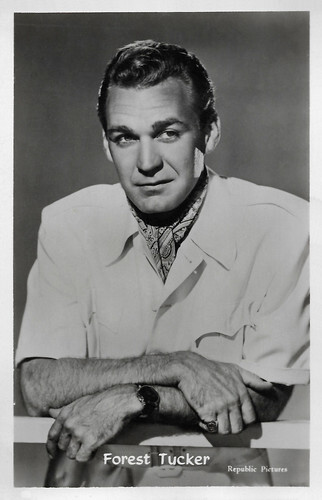
Belgian postcard by Nieuwe Merksemsche Chocolaterie S.P.R.L., Merksem (Antwerp). Photo: Republic Pictures.
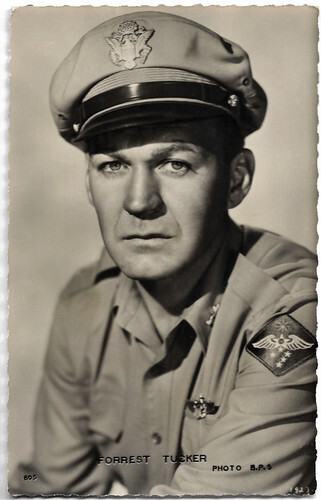
French postcard by Editions P.I., Paris, offered by Les carbones Korès "Carboplane", no. 695. Photo: B.P.S. / Republic. Forrest Tucker in Flight Nurse (Allan Dwan, 1953).
In the mould of large ugly guys
Forrest Meredith Tucker was born in 1919, in Plainfield, Indiana. He began his performing career at age 14 at the 1933 Chicago Century of Progress World's Fair, pushing big wicker tourists' chairs by day and singing at night. His family moved to Arlington, Virginia, where he attended Washington-Lee High School in 1938.
Big for his age, 1.93 m, young Tucker attracted the attention of Jimmy Lake, the owner of the Old Gaiety Burlesque Theater, by winning its Saturday night amateur contest on consecutive weeks. After his second win, Tucker was hired full-time as Master of Ceremonies but left when it was discovered that he was still underage.
When he turned 18, he was rehired by the Old Gayety. After graduating from high school in 1938, the long Tucker played semi-pro football in the Washington, DC, area. He also enlisted in the National Guard and was assigned to a cavalry unit in Ft. Myers, Virginia. When the Old Gayety shut down in the Summer of 1939 due to the District of Columbia's horrible summers in the days before air conditioning was common, a wealthy mentor helped Tucker travel to California and try to break into film acting. He made a successful screen test and began auditioning for film roles.
Tucker estimated that he was in the mould of large 'ugly guys' such as Wallace Beery , Ward Bond and Victor McLaglen , rather than a matinee idol. His debut was as a powerfully built farmer who clashes with the hero in The Westerner (William Wyler, 1940), which starred Gary Cooper and Walter Brennan. Tucker stood out in a fight scene with Cooper. After this start at the top of the film industry, it was off to Poverty Row. He appeared with Evelyn Brent in Emergency Landing (William Beaudine, 1941) at rock-bottom PRC (Producers Releasing Corp.).
He was soon signed by Columbia and assigned to the B-pictures unit. Tucker was lent to MGM for the Spencer Tracy - Katharine Hepburn drama Keeper of the Flame (George Cukor, 1942), his last film before going off to World War II. Enlisted in the army, he eventually became a second lieutenant He was discharged in 1945 and returned to Columbia. He resumed his acting career with an appearance in the classic film The Yearling (Clarence Brown, 1946), starring Gregory Peck . Warners borrowed him to play Errol Flynn 's love rival with Eleanor Parker in the romantic comedy Never Say Goodbye (James V. Kern, 1946). He signed with Republic Pictures in 1948, which brought him one of his greatest roles, that of the Marine corporal bearing a grudge against gung-ho sergeant John Wayne in Sands of Iwo Jima (Allan Dwan, 1949).
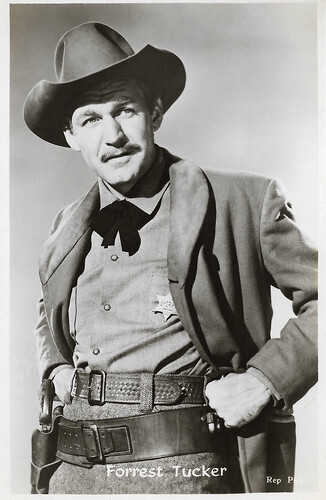
Vintage postcard. Photo: Republic Pictures. Forrest Tucker in Brimstone (Joseph Kane, 1949).
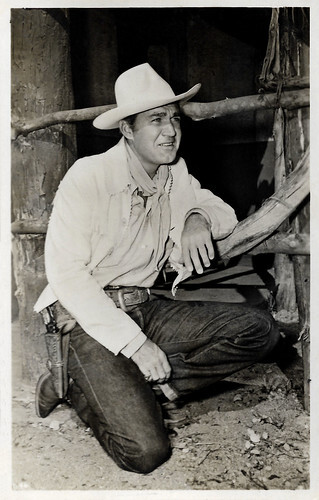
British postcard, no. 46. Photo: Republic. Caption: Greetings from... Republic star Forrest Tucker.
Breaking out of the action pictures
Forrest Tucker returned to Columbia to support Randolph Scott in the Western The Nevadan (Gordon Douglas, 1950). At Republic, Tucker was promoted to star roles in many of the 'B' pictures the studio was famous for, such as the Westerns Rock Island Trail (Joseph Kane, 1950) with Adele Mara , California Passage (Joseph Kane, 1950) and Ride the Man Down (Joseph Kane, 1952) with Brian Donlevy. At Paramount, he co-starred with Sterling Hayden in the Western Flaming Feather (Ray Enright, 1952) and supported as Wild Bill Hickok Charlton Heston 's Buffalo Bill in Pony Express (Jerry Hopper, 1953).
Tucker went to England to support Wendell Corey and British film star Margaret Lockwood in the adventure film Laughing Anne (Herbert Wilcox, 1953), a co-production with Republic. He was top billed in Fox's The Quiet Gun (William F. Claxton, 1957) and supported Charlton Heston in Three Violent People (Rudolph Maté, 1957).
In 1958 Tucker broke out of the action pictures and played Beauregard Burnside, Mame's first husband in Auntie Mame (Morton DaCosta, 1958), starring Rosalind Russell . It was the highest-grossing US film of the year and showed that Tucker could perform in light comedy. Morton DaCosta cast Tucker as "Professor" Harold Hill in the national touring production of 'The Music Man' (1962), and he was a more than credible substitute for Broadway star Robert Preston, who originated the role. Tucker made 2,008 appearances in 'The Music Man' over the next five years, then starred in 'Fair Game for Lovers' on Broadway in 1964.
Television provided Tucker with his most famous role: scheming cavalry sergeant Morgan O'Rourke in the Western spoof F Troop, a TV series which ran from 1965 to 1967 on ABC. Ably supported by Larry Storch, Ken Berry and James Hampton, Tucker showed a flair for comedy and he and Storch had great chemistry. Tucker returned to films in supporting parts. He had a good turn as the villain in the John Wayne Western Chisum (Andrew V. McLaglen, 1970). He played a lead role in the romantic drama The Wild McCullochs (Max Baer Jr., 1975). On television he was a regular on three series: Dusty's Trail (1973) with Bob Denver, The Ghost Busters (1975), which reunited him with Larry Storch, and Filthy Rich (1982). Tucker was also a frequent guest star in series such as Gunsmoke (1955), Alice (1976) and its spin-off, Flo (1980). He continued to be active on stage as well, starring in the national productions of 'Plaza Suite' (1971), 'Show Boat' (1936), and 'That Championship Season' (1982). He also toured with 'Roy Radin's Vaudeville Revue', a variety show in which, as a headliner, he told Irish stories and jokes and sang Irish songs.
Forrest Tucker struggled with a drinking problem that began to affect his performance in the later years of his career. He returned to the big screen after an absence of several years in 1986, playing Korea veteran and hero trucker Charlie Morrison in the action film Thunder Run (Gary Hudson, 1986) with John Ireland. His comeback to features was short-lived, however, as he died in 1986, in the Los Angeles suburb of Woodland Hills, of complications from lung cancer and emphysema. He was 67 years old. Tucker was buried in Forest Lawn-Hollywood Hills Cemetery in Los Angeles. His final film appearance was in Outtakes (Jack M. Sell, 1987), a low-budget comedy featuring skits, parodies and naked women. Forrest Tucker was married four times. His wives were Sandra Jolley (1940-1950; divorced, one daughter, actress Brooke Tucker (1944-2023)), Marilyn Johnson (1951-1960; her death), Marilyn Fisk (1961-1985; divorced, 2 children) and Sheila Forbes (1986-his death).
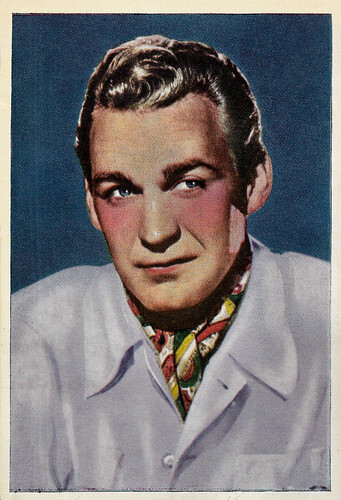
Belgian postcard, no. KF 27. Photo: Republic Pictures.
Sources: (IMDb), Uncle Odie's Collectibles, Wikipedia and .

Belgian postcard by Nieuwe Merksemsche Chocolaterie S.P.R.L., Merksem (Antwerp). Photo: Republic Pictures.

French postcard by Editions P.I., Paris, offered by Les carbones Korès "Carboplane", no. 695. Photo: B.P.S. / Republic. Forrest Tucker in Flight Nurse (Allan Dwan, 1953).
In the mould of large ugly guys
Forrest Meredith Tucker was born in 1919, in Plainfield, Indiana. He began his performing career at age 14 at the 1933 Chicago Century of Progress World's Fair, pushing big wicker tourists' chairs by day and singing at night. His family moved to Arlington, Virginia, where he attended Washington-Lee High School in 1938.
Big for his age, 1.93 m, young Tucker attracted the attention of Jimmy Lake, the owner of the Old Gaiety Burlesque Theater, by winning its Saturday night amateur contest on consecutive weeks. After his second win, Tucker was hired full-time as Master of Ceremonies but left when it was discovered that he was still underage.
When he turned 18, he was rehired by the Old Gayety. After graduating from high school in 1938, the long Tucker played semi-pro football in the Washington, DC, area. He also enlisted in the National Guard and was assigned to a cavalry unit in Ft. Myers, Virginia. When the Old Gayety shut down in the Summer of 1939 due to the District of Columbia's horrible summers in the days before air conditioning was common, a wealthy mentor helped Tucker travel to California and try to break into film acting. He made a successful screen test and began auditioning for film roles.
Tucker estimated that he was in the mould of large 'ugly guys' such as Wallace Beery , Ward Bond and Victor McLaglen , rather than a matinee idol. His debut was as a powerfully built farmer who clashes with the hero in The Westerner (William Wyler, 1940), which starred Gary Cooper and Walter Brennan. Tucker stood out in a fight scene with Cooper. After this start at the top of the film industry, it was off to Poverty Row. He appeared with Evelyn Brent in Emergency Landing (William Beaudine, 1941) at rock-bottom PRC (Producers Releasing Corp.).
He was soon signed by Columbia and assigned to the B-pictures unit. Tucker was lent to MGM for the Spencer Tracy - Katharine Hepburn drama Keeper of the Flame (George Cukor, 1942), his last film before going off to World War II. Enlisted in the army, he eventually became a second lieutenant He was discharged in 1945 and returned to Columbia. He resumed his acting career with an appearance in the classic film The Yearling (Clarence Brown, 1946), starring Gregory Peck . Warners borrowed him to play Errol Flynn 's love rival with Eleanor Parker in the romantic comedy Never Say Goodbye (James V. Kern, 1946). He signed with Republic Pictures in 1948, which brought him one of his greatest roles, that of the Marine corporal bearing a grudge against gung-ho sergeant John Wayne in Sands of Iwo Jima (Allan Dwan, 1949).

Vintage postcard. Photo: Republic Pictures. Forrest Tucker in Brimstone (Joseph Kane, 1949).

British postcard, no. 46. Photo: Republic. Caption: Greetings from... Republic star Forrest Tucker.
Breaking out of the action pictures
Forrest Tucker returned to Columbia to support Randolph Scott in the Western The Nevadan (Gordon Douglas, 1950). At Republic, Tucker was promoted to star roles in many of the 'B' pictures the studio was famous for, such as the Westerns Rock Island Trail (Joseph Kane, 1950) with Adele Mara , California Passage (Joseph Kane, 1950) and Ride the Man Down (Joseph Kane, 1952) with Brian Donlevy. At Paramount, he co-starred with Sterling Hayden in the Western Flaming Feather (Ray Enright, 1952) and supported as Wild Bill Hickok Charlton Heston 's Buffalo Bill in Pony Express (Jerry Hopper, 1953).
Tucker went to England to support Wendell Corey and British film star Margaret Lockwood in the adventure film Laughing Anne (Herbert Wilcox, 1953), a co-production with Republic. He was top billed in Fox's The Quiet Gun (William F. Claxton, 1957) and supported Charlton Heston in Three Violent People (Rudolph Maté, 1957).
In 1958 Tucker broke out of the action pictures and played Beauregard Burnside, Mame's first husband in Auntie Mame (Morton DaCosta, 1958), starring Rosalind Russell . It was the highest-grossing US film of the year and showed that Tucker could perform in light comedy. Morton DaCosta cast Tucker as "Professor" Harold Hill in the national touring production of 'The Music Man' (1962), and he was a more than credible substitute for Broadway star Robert Preston, who originated the role. Tucker made 2,008 appearances in 'The Music Man' over the next five years, then starred in 'Fair Game for Lovers' on Broadway in 1964.
Television provided Tucker with his most famous role: scheming cavalry sergeant Morgan O'Rourke in the Western spoof F Troop, a TV series which ran from 1965 to 1967 on ABC. Ably supported by Larry Storch, Ken Berry and James Hampton, Tucker showed a flair for comedy and he and Storch had great chemistry. Tucker returned to films in supporting parts. He had a good turn as the villain in the John Wayne Western Chisum (Andrew V. McLaglen, 1970). He played a lead role in the romantic drama The Wild McCullochs (Max Baer Jr., 1975). On television he was a regular on three series: Dusty's Trail (1973) with Bob Denver, The Ghost Busters (1975), which reunited him with Larry Storch, and Filthy Rich (1982). Tucker was also a frequent guest star in series such as Gunsmoke (1955), Alice (1976) and its spin-off, Flo (1980). He continued to be active on stage as well, starring in the national productions of 'Plaza Suite' (1971), 'Show Boat' (1936), and 'That Championship Season' (1982). He also toured with 'Roy Radin's Vaudeville Revue', a variety show in which, as a headliner, he told Irish stories and jokes and sang Irish songs.
Forrest Tucker struggled with a drinking problem that began to affect his performance in the later years of his career. He returned to the big screen after an absence of several years in 1986, playing Korea veteran and hero trucker Charlie Morrison in the action film Thunder Run (Gary Hudson, 1986) with John Ireland. His comeback to features was short-lived, however, as he died in 1986, in the Los Angeles suburb of Woodland Hills, of complications from lung cancer and emphysema. He was 67 years old. Tucker was buried in Forest Lawn-Hollywood Hills Cemetery in Los Angeles. His final film appearance was in Outtakes (Jack M. Sell, 1987), a low-budget comedy featuring skits, parodies and naked women. Forrest Tucker was married four times. His wives were Sandra Jolley (1940-1950; divorced, one daughter, actress Brooke Tucker (1944-2023)), Marilyn Johnson (1951-1960; her death), Marilyn Fisk (1961-1985; divorced, 2 children) and Sheila Forbes (1986-his death).

Belgian postcard, no. KF 27. Photo: Republic Pictures.
Sources: (IMDb), Uncle Odie's Collectibles, Wikipedia and .
Published on July 05, 2024 22:00
July 4, 2024
Lillebil Ibsen a.k.a. Lillebil Christensen
Norwegian actress and dancer Lillebil Ibsen (1899-1989) started her career as a young talented dancer and later became one of Norway's most distinguished stage actresses ever. As Lillebil Christensen, she acted in a few European silent films by major directors.
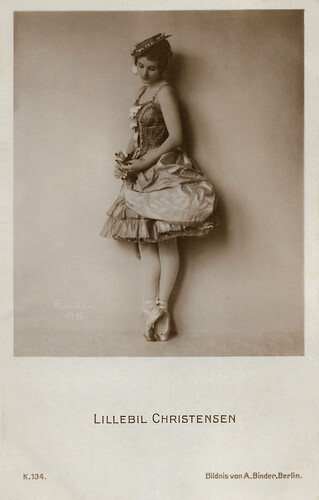
German postcard by Photochemie, Berlin, no. K. 134. Photo: Alex Binder, 1916.
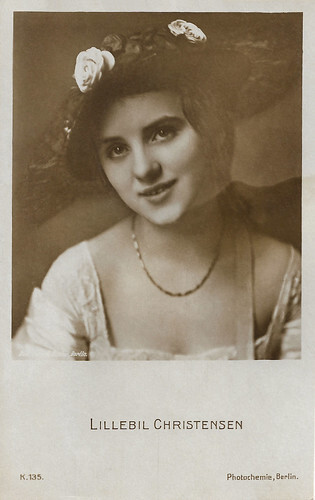
German postcard by Photochemie, Berlin, no. K. 135.
Internationally famous for her sensitive and dramatic dancing
Lillebil Ibsen was born Sofie Parelius Monrad Krohn in 1899 in Öre Aker (Christiania, now Oslo), Norway. She was the daughter of engineer Georg Monrad Krohn and actress Gyda Andersen (Gyda Monrad Krohn). Later on, her mother married Halfdan Christensen, the managing director of Nationaltheatret in Oslo, the national theatre stage in Norway. Lillebil received ballet training from her mother, who was a professional choreographer and ballet instructor.
At the age of ten, she made her debut as a dancer at Nationaltheatret in the ballet pantomime 'Prinsessen på erten' (1911), directed by her mother. It was an adaptation of the fairytale 'The Princess and the Pea' by Hans Christian Andersen. Over the next few years, ‘Madame Lillebil’ had an adventurous career abroad. She studied ballet with Hans Beck in Copenhagen, and later with Russian choreographer Mikhail Fokine in Paris. In 1912, she went on a music tour to Berlin with her mother and conductor Johan Halvorsen. Later, she would also dance to Halvorsen's 'Danse visionaire', in 'Krokodilletaarer' (1914) and 'Dukken' (1915), the Norwegian version of 'Coppélia' by Léo Delibes.
Her sensitive and dramatic dancing made her famous far beyond Norway. She made her debut as a stage actress in 'Den uskikkelige Lille princesses' (The Naughty Little Princess). When she was sixteen years old, German stage director Max Reinhardt engaged her as prima ballerina ‘Lillebil Christensen’ for the theatres he managed. From 1915 to 1918, Lillebil played leading roles in Reinhardt's pantomimes 'Die Schäferin', 'Lillebils Hochzeitsreise', 'Prima Ballerina', 'Sumurun' and 'Die grüne Flöte' (The Green Flute).
In Berlin, Lillebil Christensen made her film debut with a supporting role in E. A. Dupont's crime story Europa postlagernd/Europe Mail Storage (Ewald André Dupont, 1918) starring Max Landa and Lu Synd . In 1919, she married writer-director Tancred Ibsen, the grandson of Henrik Ibsen and Nobel laureate Bjørnstjerne Bjørnson. The young couple travelled through Europe. Lillebil played one of the two leading female roles in the Swedish film drama Sången om den eldröda blomman/Song of the Scarlet Flower (Mauritz Stiller, 1919), with Lars Hanson . It was a huge success. A year later, the Danish director Urban Gad brought her back to Berlin to play the central role of Paris dancer Eva Sorel alongside Conrad Veidt and Fritz Kortner in the two-part film Christian Wahnschaffe (Urban Gad, 1920-1921).
She also appeared in the Norwegian film Pan (Harald Schwenzen, 1922) with Gerd Egede Nissen , based on a novel by Knut Hamsun. In 1921, her son Tancred was born and in 1923, the family settled permanently in Norway. She was engaged by the Centralteatret, first for the pantomime 'Scaramouche' (1923) with music by Jean Sibelius, then for the play 'Kameliadamen', a production of Alexandre Dumas fils' 'The Lady of the Camellias', and a year later Ibsen appeared in the revue theatre Chat Noir. Her songs, dances and parodies became very popular and she gave guest performances in London, Paris, Stockholm and Copenhagen.
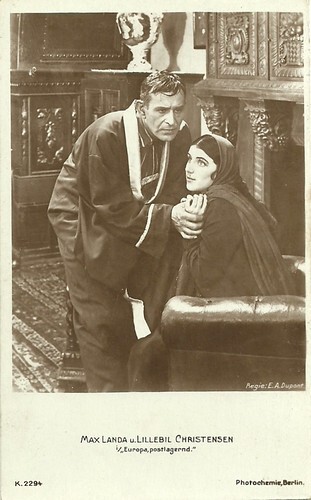
German postcard by Photochemie, no.K. 2294. Max Landa as detective Joe Deebs and Lillebil Christensen in Europa postlagerend/Europe poste restante (Ewald André Dupont, 1918).
One of Norway's most distinguished stage actresses ever
From 1928 to 1956, Lillebil Ibsen was a member of the ensemble at Oslo's Det Nye Teater (The New Theatre). She played classical comedy roles as well as a series of Ibsen characters, such as Nora in 'Nora or A Doll's House' or Mrs Alving in 'Ghosts'. She became one of Norway's most distinguished stage actresses ever. In 1931, Tancred Ibsen directed Norway's first feature-length sound film, the comedy Den store barnedåpen/The Great Christening (Tancred Ibsen, 1931). Lillebil did not appear in this film but she starred in her husband's experimental comedy Op med hodet/Cheer Up! (Tancred Ibsen, 1934). The film title is a reference to the opening line of a poem in Bjørnstjerne Bjørnson's novel 'En glad Gut' (A Happy Boy).
She also appeared in the Swedish melodrama Lika inför lagen (Gustaf Bergman, 1931) with Karin Swanström and Unno Henning . It was an alternative language version of the Paramount production Manslaughter (George Abbott, 1930) and was filmed at Les Studios Paramount in Joinville-le-Pont, France. Tancred Ibsen would 'dominate the Norwegian film industry in the 1930s. During the Occupation of Norway by Nazi Germany, Tancred was arrested in 1943. He was imprisoned in Schildberg and then Luckenwalde until the camp was liberated.
Lillebil and Tancred Ibsen co-directed the film Et spøkelse forelsker seg/A ghost falls in love (1946) starring Per Aabel. She also acted in a few more films, including the Swedish mystery Mannekäng i rött/Mannequin in Red (Arne Mattsson, 1958) with Anita Björk , where she played a notable supporting role as a fashion house mogul. This popular film is part of the Hillman-thriller series, directed by Arne Mattsson and written by Folke Mellvig. The cult series contains five mysteries with the name of a colour in the title. In 1979, she reunited with director Mattson for her final film, Somewhere, Sometime (Arne Mattson, 1979).
From 1956 to 1969, Lillebil was a permanent member of Oslo's Nationaltheatret. She appeared in many classic plays by G.B. Shaw, Moliére, Henrik Ibsen and William Shakespeare . She enjoyed particular success in Friedrich Dürrenmatt's revenge drama 'Der Besuch der alten Dame' (The Visit of the Old Lady, 1957) and Edward Albee's 'Who's Afraid of Virginia Woolf?' (1964). She also successfully played the part of Abby Brewster in Joseph Kesselring's comedy 'Arsenic and Old Lace' (1968). In 1961, she received a Critics' Award for her role as Mrs. Patrick Campbell in Jerome Kilty's two-person play 'Dear Liar' with Per Aabel. She played 'Mrs. Pat' more than 300 times in Norway and neighbouring countries since its premiere in 1961, both on stage and in radio and television theatre versions.
Lillebil Ibsen published her autobiography 'Det begynte med dansen' (It began with the dance) in 1961. Ibsen was decorated Commander of the Royal Norwegian Order of St. Olav in 1969. When Ibsen celebrated her seventieth anniversary as a performing artist in 1981, she once again played Mrs Pat in 'Dear Liar'. In 1983, she received the Karl Gerhards Hederspris, a Scandinavian art award. Lillebil Ibsen died in Oslo in 1989 aged 90. She was married to Tancred Ibsen from 1919 till his death in 1978. Their son Tancred Ibsen Jr. (1921-2015) was a Norwegian diplomat. Tancred and Lillebil Ibsen are buried at Vår Frelsers gravlund, Oslo.
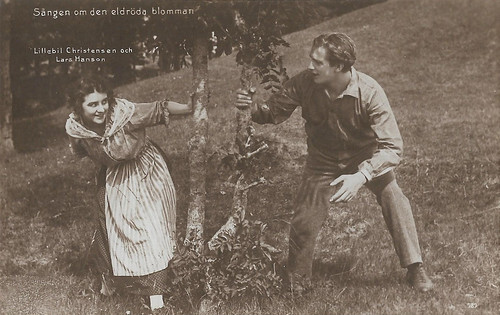
Swedish postcard by Forlag Nordisk Konst, Stockholm, no. 989. Photo: Svenska Biografteatern, Stockholm. Lars Hanson and Lillebil Christensen in Sången om den eldröda blomman/Song of the Scarlet Flower (Mauritz Stiller, 1919).
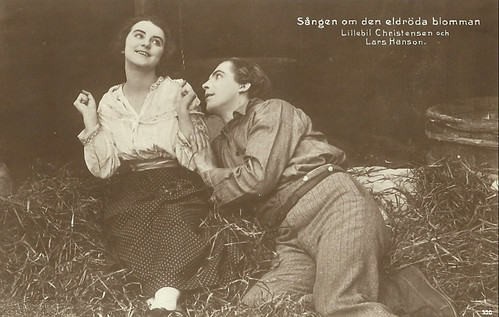
Swedish postcard by Forlag Nordisk Konst, Stockholm, no. 990. Photo: Svenska Biografteatern, Stockholm. Lars Hanson and Lillebil Christensen in Sången om den eldröda blomman/Song of the Red Flower (Mauritz Stiller, 1919).
Sources: (IMDb), Store Norske Leksikon (Norwegian) Wikipedia (Dutch, German and English) and .

German postcard by Photochemie, Berlin, no. K. 134. Photo: Alex Binder, 1916.

German postcard by Photochemie, Berlin, no. K. 135.
Internationally famous for her sensitive and dramatic dancing
Lillebil Ibsen was born Sofie Parelius Monrad Krohn in 1899 in Öre Aker (Christiania, now Oslo), Norway. She was the daughter of engineer Georg Monrad Krohn and actress Gyda Andersen (Gyda Monrad Krohn). Later on, her mother married Halfdan Christensen, the managing director of Nationaltheatret in Oslo, the national theatre stage in Norway. Lillebil received ballet training from her mother, who was a professional choreographer and ballet instructor.
At the age of ten, she made her debut as a dancer at Nationaltheatret in the ballet pantomime 'Prinsessen på erten' (1911), directed by her mother. It was an adaptation of the fairytale 'The Princess and the Pea' by Hans Christian Andersen. Over the next few years, ‘Madame Lillebil’ had an adventurous career abroad. She studied ballet with Hans Beck in Copenhagen, and later with Russian choreographer Mikhail Fokine in Paris. In 1912, she went on a music tour to Berlin with her mother and conductor Johan Halvorsen. Later, she would also dance to Halvorsen's 'Danse visionaire', in 'Krokodilletaarer' (1914) and 'Dukken' (1915), the Norwegian version of 'Coppélia' by Léo Delibes.
Her sensitive and dramatic dancing made her famous far beyond Norway. She made her debut as a stage actress in 'Den uskikkelige Lille princesses' (The Naughty Little Princess). When she was sixteen years old, German stage director Max Reinhardt engaged her as prima ballerina ‘Lillebil Christensen’ for the theatres he managed. From 1915 to 1918, Lillebil played leading roles in Reinhardt's pantomimes 'Die Schäferin', 'Lillebils Hochzeitsreise', 'Prima Ballerina', 'Sumurun' and 'Die grüne Flöte' (The Green Flute).
In Berlin, Lillebil Christensen made her film debut with a supporting role in E. A. Dupont's crime story Europa postlagernd/Europe Mail Storage (Ewald André Dupont, 1918) starring Max Landa and Lu Synd . In 1919, she married writer-director Tancred Ibsen, the grandson of Henrik Ibsen and Nobel laureate Bjørnstjerne Bjørnson. The young couple travelled through Europe. Lillebil played one of the two leading female roles in the Swedish film drama Sången om den eldröda blomman/Song of the Scarlet Flower (Mauritz Stiller, 1919), with Lars Hanson . It was a huge success. A year later, the Danish director Urban Gad brought her back to Berlin to play the central role of Paris dancer Eva Sorel alongside Conrad Veidt and Fritz Kortner in the two-part film Christian Wahnschaffe (Urban Gad, 1920-1921).
She also appeared in the Norwegian film Pan (Harald Schwenzen, 1922) with Gerd Egede Nissen , based on a novel by Knut Hamsun. In 1921, her son Tancred was born and in 1923, the family settled permanently in Norway. She was engaged by the Centralteatret, first for the pantomime 'Scaramouche' (1923) with music by Jean Sibelius, then for the play 'Kameliadamen', a production of Alexandre Dumas fils' 'The Lady of the Camellias', and a year later Ibsen appeared in the revue theatre Chat Noir. Her songs, dances and parodies became very popular and she gave guest performances in London, Paris, Stockholm and Copenhagen.

German postcard by Photochemie, no.K. 2294. Max Landa as detective Joe Deebs and Lillebil Christensen in Europa postlagerend/Europe poste restante (Ewald André Dupont, 1918).
One of Norway's most distinguished stage actresses ever
From 1928 to 1956, Lillebil Ibsen was a member of the ensemble at Oslo's Det Nye Teater (The New Theatre). She played classical comedy roles as well as a series of Ibsen characters, such as Nora in 'Nora or A Doll's House' or Mrs Alving in 'Ghosts'. She became one of Norway's most distinguished stage actresses ever. In 1931, Tancred Ibsen directed Norway's first feature-length sound film, the comedy Den store barnedåpen/The Great Christening (Tancred Ibsen, 1931). Lillebil did not appear in this film but she starred in her husband's experimental comedy Op med hodet/Cheer Up! (Tancred Ibsen, 1934). The film title is a reference to the opening line of a poem in Bjørnstjerne Bjørnson's novel 'En glad Gut' (A Happy Boy).
She also appeared in the Swedish melodrama Lika inför lagen (Gustaf Bergman, 1931) with Karin Swanström and Unno Henning . It was an alternative language version of the Paramount production Manslaughter (George Abbott, 1930) and was filmed at Les Studios Paramount in Joinville-le-Pont, France. Tancred Ibsen would 'dominate the Norwegian film industry in the 1930s. During the Occupation of Norway by Nazi Germany, Tancred was arrested in 1943. He was imprisoned in Schildberg and then Luckenwalde until the camp was liberated.
Lillebil and Tancred Ibsen co-directed the film Et spøkelse forelsker seg/A ghost falls in love (1946) starring Per Aabel. She also acted in a few more films, including the Swedish mystery Mannekäng i rött/Mannequin in Red (Arne Mattsson, 1958) with Anita Björk , where she played a notable supporting role as a fashion house mogul. This popular film is part of the Hillman-thriller series, directed by Arne Mattsson and written by Folke Mellvig. The cult series contains five mysteries with the name of a colour in the title. In 1979, she reunited with director Mattson for her final film, Somewhere, Sometime (Arne Mattson, 1979).
From 1956 to 1969, Lillebil was a permanent member of Oslo's Nationaltheatret. She appeared in many classic plays by G.B. Shaw, Moliére, Henrik Ibsen and William Shakespeare . She enjoyed particular success in Friedrich Dürrenmatt's revenge drama 'Der Besuch der alten Dame' (The Visit of the Old Lady, 1957) and Edward Albee's 'Who's Afraid of Virginia Woolf?' (1964). She also successfully played the part of Abby Brewster in Joseph Kesselring's comedy 'Arsenic and Old Lace' (1968). In 1961, she received a Critics' Award for her role as Mrs. Patrick Campbell in Jerome Kilty's two-person play 'Dear Liar' with Per Aabel. She played 'Mrs. Pat' more than 300 times in Norway and neighbouring countries since its premiere in 1961, both on stage and in radio and television theatre versions.
Lillebil Ibsen published her autobiography 'Det begynte med dansen' (It began with the dance) in 1961. Ibsen was decorated Commander of the Royal Norwegian Order of St. Olav in 1969. When Ibsen celebrated her seventieth anniversary as a performing artist in 1981, she once again played Mrs Pat in 'Dear Liar'. In 1983, she received the Karl Gerhards Hederspris, a Scandinavian art award. Lillebil Ibsen died in Oslo in 1989 aged 90. She was married to Tancred Ibsen from 1919 till his death in 1978. Their son Tancred Ibsen Jr. (1921-2015) was a Norwegian diplomat. Tancred and Lillebil Ibsen are buried at Vår Frelsers gravlund, Oslo.

Swedish postcard by Forlag Nordisk Konst, Stockholm, no. 989. Photo: Svenska Biografteatern, Stockholm. Lars Hanson and Lillebil Christensen in Sången om den eldröda blomman/Song of the Scarlet Flower (Mauritz Stiller, 1919).

Swedish postcard by Forlag Nordisk Konst, Stockholm, no. 990. Photo: Svenska Biografteatern, Stockholm. Lars Hanson and Lillebil Christensen in Sången om den eldröda blomman/Song of the Red Flower (Mauritz Stiller, 1919).
Sources: (IMDb), Store Norske Leksikon (Norwegian) Wikipedia (Dutch, German and English) and .
Published on July 04, 2024 22:00
July 3, 2024
Kurt Schmidtchen
Little Kurt Schmidtchen (1930-2003) was a German actor and comedian. He started his career in East Berlin. After the construction of the Berlin Wall, he continued his career in West Germany.
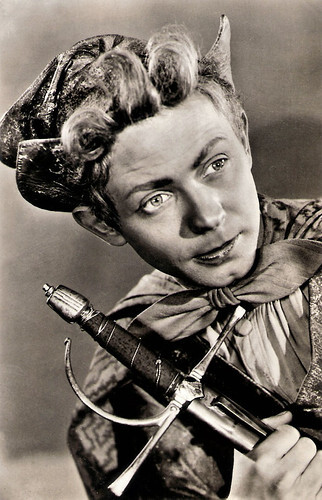
East-German postcard by VEB Progress Film-Vertrieb, no. 79/162, 1956. Photo: DEFA / Pathenheimer Kurt Schmidtchen in Das tapfere Schneiderlein/The Brave Tailor (Helmut Spiess, 1956), based on the fairy tales of the Brothers Grimm.
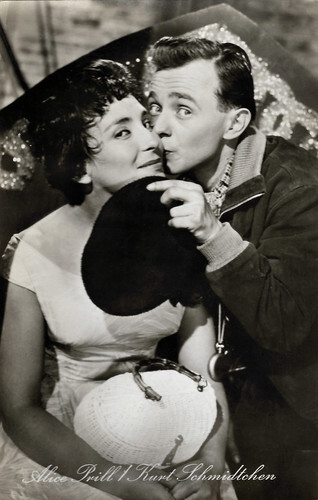
East German postcard by VEB Progress Film-Vertrieb, Berlin, no. 847/615, 1958. Photo: DEFA / Neufeld. Kurt Schmidtchen and Alice Prill in Meine Frau macht Musik/My Wife Makes Music (Hans Heinrich, 1958).
Too close to Western commercial cinema
Kurt Schmidtchen was born in 1930 in Berlin, Germany. After finishing primary school, Schmidtchen took private drama lessons from Otto Stoeckl. He then worked at various theatres in East Berlin.
After a few TV appearances, he made his debut in the title role of the DEFA production Das Tapfere Schneiderlein/The Brave Tailor (Helmut Spiess, 1956), based on the fairy tale of the Brothers Grimm.
The film was the first of 19 adaptations of Grimm's fairy tales that DEFA realised until 1990. The screenplay deviated from the original fairy tale and, for example, concealed the negative characteristics of the little tailor still present in the Grimms' tale. In addition, the film was given ‘Marxist tendencies’, including new characters such as the scheming Prince Eitel and the maid Traute ( Christel Bodenstein ), and a new ending with the marriage of the little tailor to Traute and the nobility's flight from the country.
In the following years, Schmidtchen acted in several productions by the DEFA, including alongside Götz George in the light-hearted romance Alter Kahn und junge Liebe/Old Barge, Young Love (Hans Heinrich, 1957) and the musical Meine Frau macht Musik/My Wife Makes Music (Hans Heinrich, 1958) starring Lore Frisch and Günther Simon.
The latter film was a hit at the box office but drew criticism from East Germany's communist authorities who regarded its style as too close to Western commercial cinema.
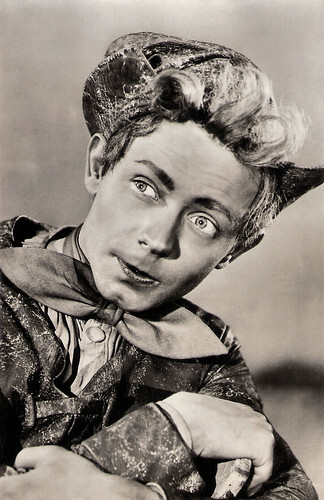
East-German postcard by VEB Progress Film-Vertrieb, no. 81/121, 1956. Photo: DEFA / Pathenheimer Kurt Schmidtchen in Das tapfere Schneiderlein/The Brave Tailor (Helmut Spiess, 1956).
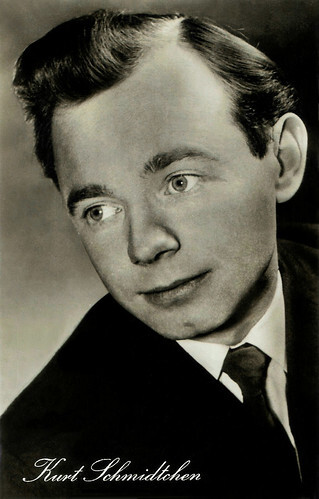
East-German postcard by VEB Progress Film-Vertrieb, Berlin, no. 1/360. Photo: Gerhard Puhlmann.
Nonstop nonsense
Kurt Schmidtchen left for West Berlin after the construction of the Berlin Wall in 1961. After his departure, his East German films were no longer shown in cinemas in the GDR.
In West Germany, he predominantly played in theatres again. By the early 1970s, he was increasingly involved in television, often as a comic type. He played an ongoing role as Shorty Timmermann in the series Fußballtrainer Wulff/Soccer Coach Wulff (1970-1972) with Horst Niendorf.
He also appeared in guest roles in Krimi series such as Kommissariat IX (1979) and Der Alte/The Old Fox (1984).
He is best known in Germany through his collaboration with comedian and actor Dieter Hallervorden. From 1975 to 1980, he belonged to the ensemble of Hallervorden's sketch series Nonstop Nonsens and from 1983 to 1984 to the show Zelleriesalat. Schmidtchen also appeared in other Hallervorden TV productions, including Mein Gott, Willi! (1980) and Onkel & Co. (1981). On stage, he collaborated in programmes by Hallervorden's cabaret Die Wühlmäuse.
One last major role he played as Alwin Bunte in the ZDF series Ein Heim für Tiere/A Home for Animals (1986-1992) as the eternal admirer of Aunt Martha (Angela Pschigode). Kurt Schmidtchen died in 2003 in Berlin, aged 72.
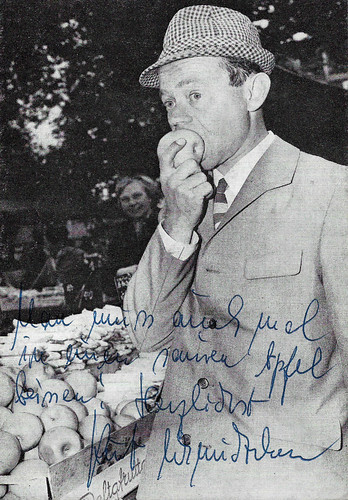
West German autograph card, 1979.
Sources: Wikipedia (Dutch, German and English) and .

East-German postcard by VEB Progress Film-Vertrieb, no. 79/162, 1956. Photo: DEFA / Pathenheimer Kurt Schmidtchen in Das tapfere Schneiderlein/The Brave Tailor (Helmut Spiess, 1956), based on the fairy tales of the Brothers Grimm.

East German postcard by VEB Progress Film-Vertrieb, Berlin, no. 847/615, 1958. Photo: DEFA / Neufeld. Kurt Schmidtchen and Alice Prill in Meine Frau macht Musik/My Wife Makes Music (Hans Heinrich, 1958).
Too close to Western commercial cinema
Kurt Schmidtchen was born in 1930 in Berlin, Germany. After finishing primary school, Schmidtchen took private drama lessons from Otto Stoeckl. He then worked at various theatres in East Berlin.
After a few TV appearances, he made his debut in the title role of the DEFA production Das Tapfere Schneiderlein/The Brave Tailor (Helmut Spiess, 1956), based on the fairy tale of the Brothers Grimm.
The film was the first of 19 adaptations of Grimm's fairy tales that DEFA realised until 1990. The screenplay deviated from the original fairy tale and, for example, concealed the negative characteristics of the little tailor still present in the Grimms' tale. In addition, the film was given ‘Marxist tendencies’, including new characters such as the scheming Prince Eitel and the maid Traute ( Christel Bodenstein ), and a new ending with the marriage of the little tailor to Traute and the nobility's flight from the country.
In the following years, Schmidtchen acted in several productions by the DEFA, including alongside Götz George in the light-hearted romance Alter Kahn und junge Liebe/Old Barge, Young Love (Hans Heinrich, 1957) and the musical Meine Frau macht Musik/My Wife Makes Music (Hans Heinrich, 1958) starring Lore Frisch and Günther Simon.
The latter film was a hit at the box office but drew criticism from East Germany's communist authorities who regarded its style as too close to Western commercial cinema.

East-German postcard by VEB Progress Film-Vertrieb, no. 81/121, 1956. Photo: DEFA / Pathenheimer Kurt Schmidtchen in Das tapfere Schneiderlein/The Brave Tailor (Helmut Spiess, 1956).

East-German postcard by VEB Progress Film-Vertrieb, Berlin, no. 1/360. Photo: Gerhard Puhlmann.
Nonstop nonsense
Kurt Schmidtchen left for West Berlin after the construction of the Berlin Wall in 1961. After his departure, his East German films were no longer shown in cinemas in the GDR.
In West Germany, he predominantly played in theatres again. By the early 1970s, he was increasingly involved in television, often as a comic type. He played an ongoing role as Shorty Timmermann in the series Fußballtrainer Wulff/Soccer Coach Wulff (1970-1972) with Horst Niendorf.
He also appeared in guest roles in Krimi series such as Kommissariat IX (1979) and Der Alte/The Old Fox (1984).
He is best known in Germany through his collaboration with comedian and actor Dieter Hallervorden. From 1975 to 1980, he belonged to the ensemble of Hallervorden's sketch series Nonstop Nonsens and from 1983 to 1984 to the show Zelleriesalat. Schmidtchen also appeared in other Hallervorden TV productions, including Mein Gott, Willi! (1980) and Onkel & Co. (1981). On stage, he collaborated in programmes by Hallervorden's cabaret Die Wühlmäuse.
One last major role he played as Alwin Bunte in the ZDF series Ein Heim für Tiere/A Home for Animals (1986-1992) as the eternal admirer of Aunt Martha (Angela Pschigode). Kurt Schmidtchen died in 2003 in Berlin, aged 72.

West German autograph card, 1979.
Sources: Wikipedia (Dutch, German and English) and .
Published on July 03, 2024 22:00
July 2, 2024
Weekblad Cinema
Weekblad 'Cinema' was a Belgian film journal, published in the city of Antwerp. The journal was written in the Flemish language and was published twice a week in Belgium. It was the journal of the Belgian film business. The first year of publication was 1920 and it was published until 1984. In 1927 (from the 22nd issue), the magazine was renamed 'Cinema- en tooneelwereld'. After a few months, it was named again 'Weekblad Cinema'.
The weekly issued a large series of sepia-tinted film star postcards for its readers. The postcards, published in the late 1920s, were identical to the star postcards by the Vilvorde-based chocolate factory Kivou. Yet, the Kivou cards have often (but not always) the word 'Cliché', followed by a company name on the front. Not to be confused with the quite similar cards of the Antwerp-based company N.V. Universum, which used a smaller typography. Here are our 21 favourite postcards by Weekblad Cinema.
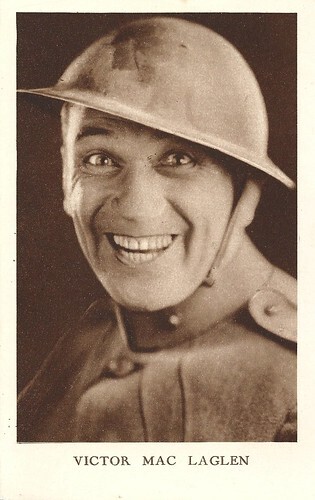
Belgian postcard by Weekblad 'Cinema', Antwerpen. Victor McLaglen in What Price Glory (Raoul Walsh, 1926).
Victor McLaglen (1886-1959) was a Scottish boxer and World War I veteran who became a successful film actor. He started in British silent films, and later became a popular character actor in Hollywood, with a particular knack for playing drunks.
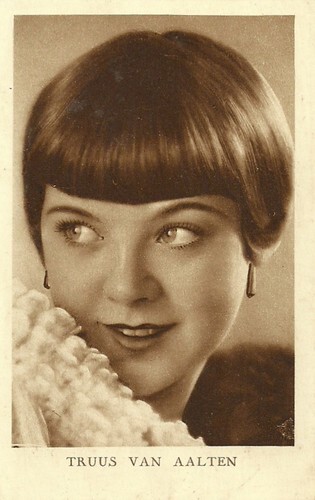
Belgian postcard by Uitgeverij Weekblad 'Cinéma', Antwerpen.
Dutch film star Truus van Aalten (1910-1999) made 29 films in the 1920s and 1930s, and only one of them in the Netherlands. The Germans lovingly called her 'die kleine holländische Käse' (the little Dutch cheese).
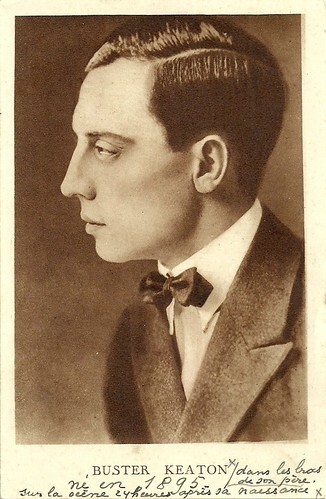
Belgian postcard by Ed. Weekblad Cinema, Antwerpen. French written caption: Buster Keaton, born in 1895, on the stage 24 hours after his birth, in the arms of his father.
Stone-faced Buster Keaton (1895-1966) was one of the three greatest comedians of Silent Hollywood.
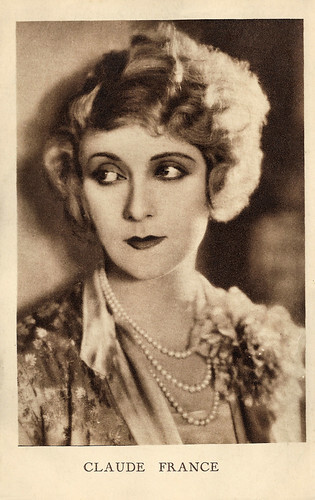
Belgian postcard by Weekblad Cinema, Antwerpen.
Claude France (1893-1928) was a French silent film actress of the 1920s. Two months before her greatest triumph opened in the cinemas, she committed suicide by opening the gas.
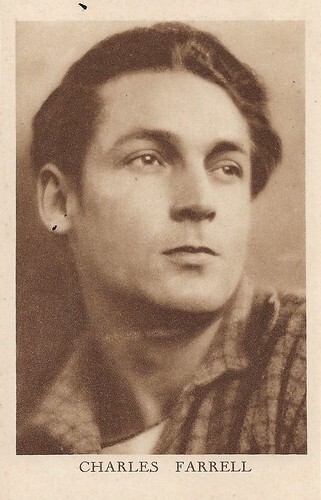
Belgian postcard by Weekblad 'Cinema', Antwerpen. Charles Farrell in 7th Heaven (Frank Borzage, 1927).
Good-looking American actor Charles Farrell (1900-1990) was a Hollywood matinée idol of the Jazz Age and Depression era. He seems now forgotten, but between 1927 and 1934, he was very popular thanks to his teaming with Janet Gaynor in 12 screen romances, including 7th Heaven (1927), Street Angel (1928), and Lucky Star (1929). He retired from films in the early 1940s, but TV audiences of the 1950s would see him as Gale Storm's widower dad in the popular television series My Little Margie (1952-1955).
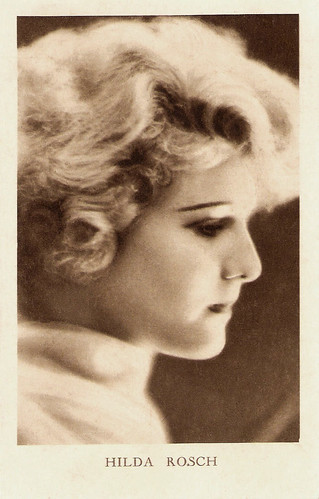
Belgian postcard by Weekblad 'Cinema', Antwerpen.
German actress Hilda Rosch only appeared in eight films between 1928 and 1931. Rosch co-starred in popular silent films with Harry Liedtke and Luciano Albertini, but she was soon forgotten.
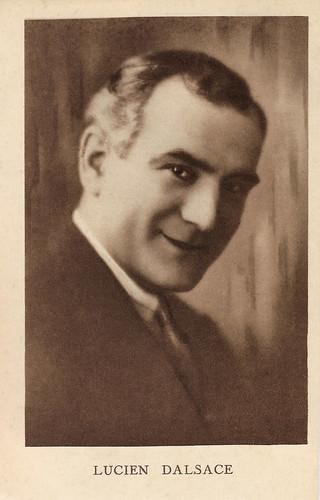
Belgian postcard by Weekblad 'Cinema', Antwerpen.
Lucien Dalsace (1893-1980) was a French stage and screen actor who peaked in French silent cinema of the 1920s. He went from success to success in films directed by Louis Feuillade, René Leprince, Gaston Ravel, René Hervil and Henri Desfontaines.
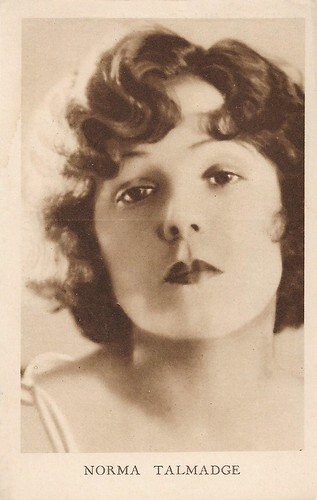
Belgian postcard by Weekblad 'Cinema' Antwerpen.
Norma Talmadge (1894-1957) was an American actress and film producer of the silent era. She made her first films in 1910 at Vitascope. A major box-office draw for over a decade, her career peaked in the early 1920s, when she ranked among the most popular idols on the American screen.
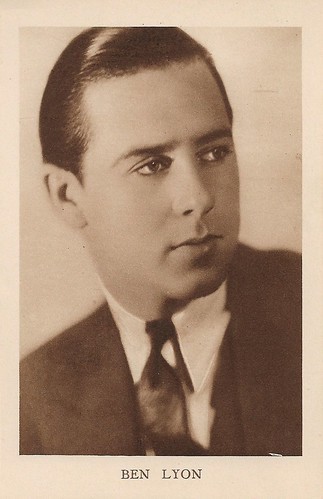
Belgian postcard by Weekblad 'Cinema', Antwerpen.
Ben Lyon (1901- 1979) was an American stage, film, radio and TV performer, as well as a studio manager. He is famous for his part as the war aviator in Hell's Angels (1930).
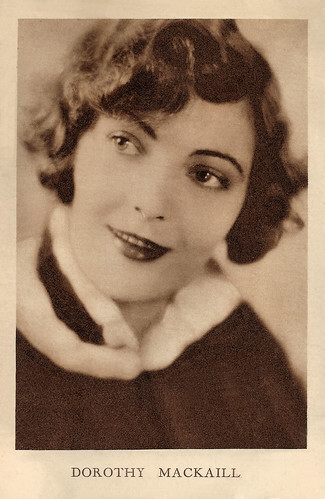
Belgian postcard by Weekblad 'Cinema', Antwerpen.
Dorothy Mackaill (1903–1990) was a British-American actress, most active during the silent-film era and into the pre-Code era of the early 1930s. During the 1930s, her popularity declined and she found herself in B-movies. From 1920 to 1937, she starred in more than 60 films.
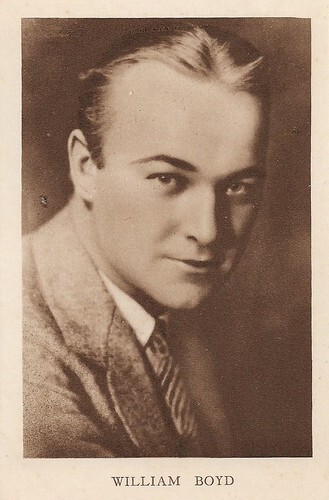
Belgian postcard by Weekblad 'Cinema', Antwerpen.
American film actor William Boyd (1895-1972) with his expressive blue eyes and prematurely silver-gray hair was a sought-after leading man of the silent movie era. He is now best known for his later parts in Westerns and is known primarily as the performer of the cowboy Hopalong Cassidy in the eponymous film and TV series.
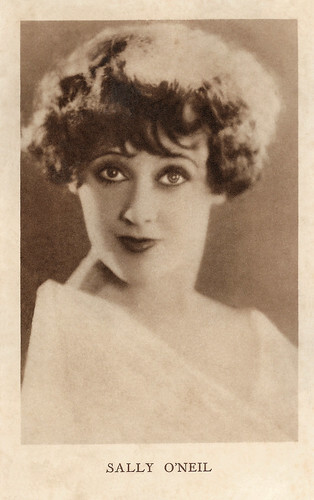
Belgian postcard by Weekblad 'Cinema', Antwerpen.
Cute and petite American actress Sally O'Neill (1908-1968) acted in almost 50 films between the mid-1920s and the mid-1930s. Her starring role in The Brat (1931), directed by John Ford, was a highlight of her career. She also starred in several Broadway productions.
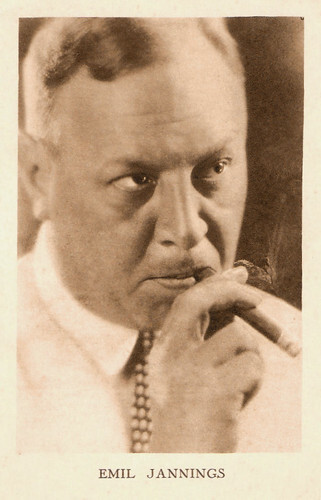
Belgian postcard by Weekblad 'Cinema', Antwerpen.
If Weimar cinema had one film star, then it was Emil Jannings (1884-1950) for sure. He was a great actor in the silent era and won the first Oscar for Best Actor. Too bad that during his later years, he worked as a board member for the Ufa propaganda machine during the Third Reich.
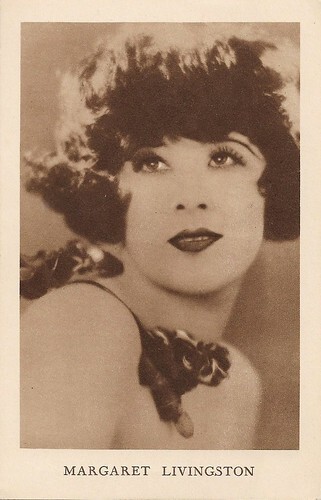
Belgian postcard published by Weekblad 'Cinema', Antwerpen.
Margaret Livingston (1895–1984) was an American film actress and businesswoman, most notable for her work during the silent film era. She remains best known today as 'the Woman from the City' in F.W. Murnau's film Sunrise: A Song of Two Humans (1927).
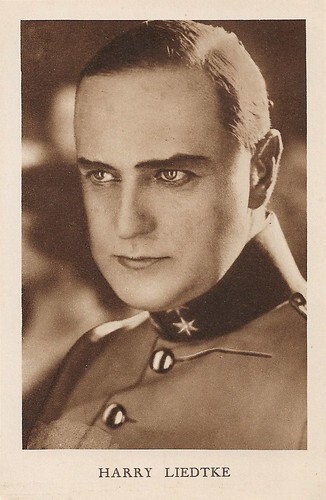
Belgian postcard by Weekblad 'Cinema', Antwerpen.
German actor Harry Liedtke (1882-1945) was the charming ladykiller of many early silent classics. Detective serials like Joe Deebs made him one of the first male stars of the German cinema.
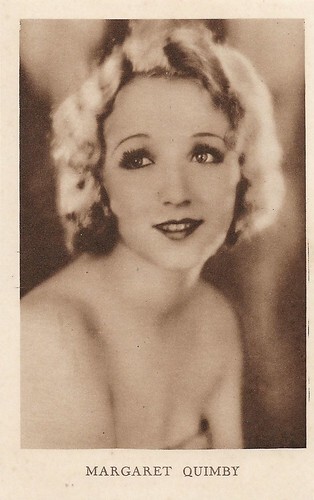
Belgian postcard by Weekblad 'Cinema', Antwerpen.
Margaret Quimby (1904–1965) was an American stage and film actress, who appeared in both lead and supporting roles during the silent and early sound era. She is best remembered for the (lost) serial Perils of the Wild (Francis Ford, 1925) with Joe Bonomo, and such films as The Western Whirlwind (1927) with Jack Hoxie and The Tired Business Man (1927) with Raymond Hitchcock.
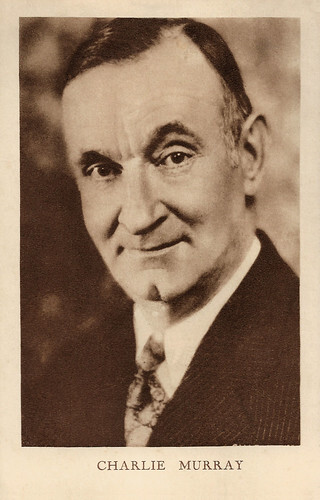
Belgian postcard by Weekblad 'Cinema', Antwerpen.
American comedian Charles Murray (1872-1941) appeared in 283 films between 1912 and 1938 and also directed 5 films. He worked together with George Sidney (1876-1945) on a series of comedies around the Jewish Nate Cohen and the Irish Catholic Patrick Kelly, two business partners who are constantly fighting.
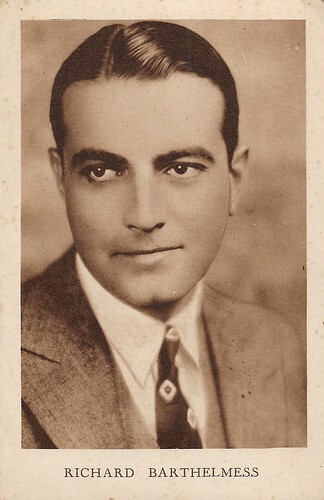
Belgian postcard by Weekblad 'Cinema', Antwerpen.
American actor Richard Barthelmess (1895-1963) is best known for his roles in the films of D.W. Griffith. In 1928, he was nominated for the Academy Award for Best Actor for two films: The Patent Leather Kid and The Noose. Barthelmess made 75 films in the twenty years between his first feature in 1916 and his semi-retirement from the screen in 1936. He appeared in only six more films between 1936 and 1942.
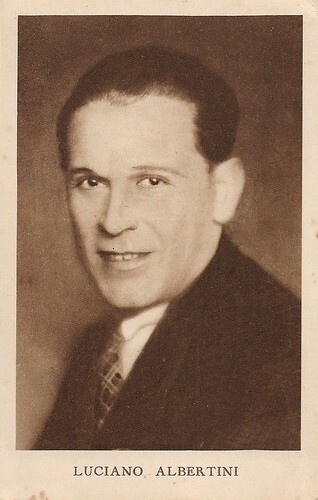
Belgian postcard by Weekblad 'Cinema", Antwerpen.
Italian actor-acrobat Luciano Albertini (1882-1941) had a prolific career in Italian and German silent cinema. He was one of the 'Forzuti', the popular Italian strongmen and acrobats of European film in the 1910s and 1920s.
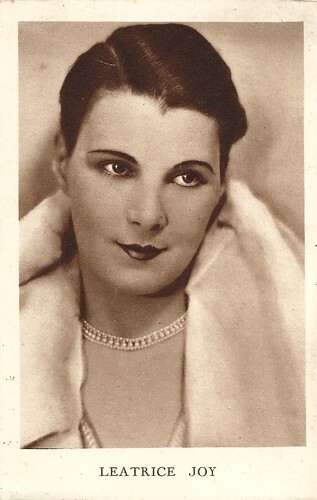
Belgian postcard by Weekblad 'Cinema', Antwerpen, 1920s.
Leatrice Joy (1893-1985) was an American actress of the silent screen. She was known for her roles as a determined and independent lady. From 1922 on, she became one of Cecil B. DeMille's favourites and protégées.
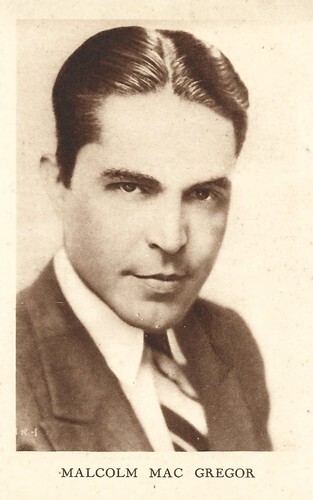
Belgian postcard by Weekblad 'Cinema', Antwerpen.
Handsome Malcolm McGregor (1892-1945) had a rich career in 1920s Hollywood as the male partner to such female stars as Pauline Frederick, Norma Shearer, Corinne Griffith and Colleen Moore. He debuted in The Prisoner of Zenda (Rex Ingram, 1922) as the dashing lieutenant who helps to defend his king. McGregor had his breakthrough as the male lead in Broken Chains (Allen Holubar, 1922) and All the Brothers Were Valiant (Irving Willat, 1923).
Source: Nathalie Hannes (De komst van de geluidsfilm in België: een nieuwe filmindustrie - Flemish).
The weekly issued a large series of sepia-tinted film star postcards for its readers. The postcards, published in the late 1920s, were identical to the star postcards by the Vilvorde-based chocolate factory Kivou. Yet, the Kivou cards have often (but not always) the word 'Cliché', followed by a company name on the front. Not to be confused with the quite similar cards of the Antwerp-based company N.V. Universum, which used a smaller typography. Here are our 21 favourite postcards by Weekblad Cinema.

Belgian postcard by Weekblad 'Cinema', Antwerpen. Victor McLaglen in What Price Glory (Raoul Walsh, 1926).
Victor McLaglen (1886-1959) was a Scottish boxer and World War I veteran who became a successful film actor. He started in British silent films, and later became a popular character actor in Hollywood, with a particular knack for playing drunks.

Belgian postcard by Uitgeverij Weekblad 'Cinéma', Antwerpen.
Dutch film star Truus van Aalten (1910-1999) made 29 films in the 1920s and 1930s, and only one of them in the Netherlands. The Germans lovingly called her 'die kleine holländische Käse' (the little Dutch cheese).

Belgian postcard by Ed. Weekblad Cinema, Antwerpen. French written caption: Buster Keaton, born in 1895, on the stage 24 hours after his birth, in the arms of his father.
Stone-faced Buster Keaton (1895-1966) was one of the three greatest comedians of Silent Hollywood.

Belgian postcard by Weekblad Cinema, Antwerpen.
Claude France (1893-1928) was a French silent film actress of the 1920s. Two months before her greatest triumph opened in the cinemas, she committed suicide by opening the gas.

Belgian postcard by Weekblad 'Cinema', Antwerpen. Charles Farrell in 7th Heaven (Frank Borzage, 1927).
Good-looking American actor Charles Farrell (1900-1990) was a Hollywood matinée idol of the Jazz Age and Depression era. He seems now forgotten, but between 1927 and 1934, he was very popular thanks to his teaming with Janet Gaynor in 12 screen romances, including 7th Heaven (1927), Street Angel (1928), and Lucky Star (1929). He retired from films in the early 1940s, but TV audiences of the 1950s would see him as Gale Storm's widower dad in the popular television series My Little Margie (1952-1955).

Belgian postcard by Weekblad 'Cinema', Antwerpen.
German actress Hilda Rosch only appeared in eight films between 1928 and 1931. Rosch co-starred in popular silent films with Harry Liedtke and Luciano Albertini, but she was soon forgotten.

Belgian postcard by Weekblad 'Cinema', Antwerpen.
Lucien Dalsace (1893-1980) was a French stage and screen actor who peaked in French silent cinema of the 1920s. He went from success to success in films directed by Louis Feuillade, René Leprince, Gaston Ravel, René Hervil and Henri Desfontaines.

Belgian postcard by Weekblad 'Cinema' Antwerpen.
Norma Talmadge (1894-1957) was an American actress and film producer of the silent era. She made her first films in 1910 at Vitascope. A major box-office draw for over a decade, her career peaked in the early 1920s, when she ranked among the most popular idols on the American screen.

Belgian postcard by Weekblad 'Cinema', Antwerpen.
Ben Lyon (1901- 1979) was an American stage, film, radio and TV performer, as well as a studio manager. He is famous for his part as the war aviator in Hell's Angels (1930).

Belgian postcard by Weekblad 'Cinema', Antwerpen.
Dorothy Mackaill (1903–1990) was a British-American actress, most active during the silent-film era and into the pre-Code era of the early 1930s. During the 1930s, her popularity declined and she found herself in B-movies. From 1920 to 1937, she starred in more than 60 films.

Belgian postcard by Weekblad 'Cinema', Antwerpen.
American film actor William Boyd (1895-1972) with his expressive blue eyes and prematurely silver-gray hair was a sought-after leading man of the silent movie era. He is now best known for his later parts in Westerns and is known primarily as the performer of the cowboy Hopalong Cassidy in the eponymous film and TV series.

Belgian postcard by Weekblad 'Cinema', Antwerpen.
Cute and petite American actress Sally O'Neill (1908-1968) acted in almost 50 films between the mid-1920s and the mid-1930s. Her starring role in The Brat (1931), directed by John Ford, was a highlight of her career. She also starred in several Broadway productions.

Belgian postcard by Weekblad 'Cinema', Antwerpen.
If Weimar cinema had one film star, then it was Emil Jannings (1884-1950) for sure. He was a great actor in the silent era and won the first Oscar for Best Actor. Too bad that during his later years, he worked as a board member for the Ufa propaganda machine during the Third Reich.

Belgian postcard published by Weekblad 'Cinema', Antwerpen.
Margaret Livingston (1895–1984) was an American film actress and businesswoman, most notable for her work during the silent film era. She remains best known today as 'the Woman from the City' in F.W. Murnau's film Sunrise: A Song of Two Humans (1927).

Belgian postcard by Weekblad 'Cinema', Antwerpen.
German actor Harry Liedtke (1882-1945) was the charming ladykiller of many early silent classics. Detective serials like Joe Deebs made him one of the first male stars of the German cinema.

Belgian postcard by Weekblad 'Cinema', Antwerpen.
Margaret Quimby (1904–1965) was an American stage and film actress, who appeared in both lead and supporting roles during the silent and early sound era. She is best remembered for the (lost) serial Perils of the Wild (Francis Ford, 1925) with Joe Bonomo, and such films as The Western Whirlwind (1927) with Jack Hoxie and The Tired Business Man (1927) with Raymond Hitchcock.

Belgian postcard by Weekblad 'Cinema', Antwerpen.
American comedian Charles Murray (1872-1941) appeared in 283 films between 1912 and 1938 and also directed 5 films. He worked together with George Sidney (1876-1945) on a series of comedies around the Jewish Nate Cohen and the Irish Catholic Patrick Kelly, two business partners who are constantly fighting.

Belgian postcard by Weekblad 'Cinema', Antwerpen.
American actor Richard Barthelmess (1895-1963) is best known for his roles in the films of D.W. Griffith. In 1928, he was nominated for the Academy Award for Best Actor for two films: The Patent Leather Kid and The Noose. Barthelmess made 75 films in the twenty years between his first feature in 1916 and his semi-retirement from the screen in 1936. He appeared in only six more films between 1936 and 1942.

Belgian postcard by Weekblad 'Cinema", Antwerpen.
Italian actor-acrobat Luciano Albertini (1882-1941) had a prolific career in Italian and German silent cinema. He was one of the 'Forzuti', the popular Italian strongmen and acrobats of European film in the 1910s and 1920s.

Belgian postcard by Weekblad 'Cinema', Antwerpen, 1920s.
Leatrice Joy (1893-1985) was an American actress of the silent screen. She was known for her roles as a determined and independent lady. From 1922 on, she became one of Cecil B. DeMille's favourites and protégées.

Belgian postcard by Weekblad 'Cinema', Antwerpen.
Handsome Malcolm McGregor (1892-1945) had a rich career in 1920s Hollywood as the male partner to such female stars as Pauline Frederick, Norma Shearer, Corinne Griffith and Colleen Moore. He debuted in The Prisoner of Zenda (Rex Ingram, 1922) as the dashing lieutenant who helps to defend his king. McGregor had his breakthrough as the male lead in Broken Chains (Allen Holubar, 1922) and All the Brothers Were Valiant (Irving Willat, 1923).
Source: Nathalie Hannes (De komst van de geluidsfilm in België: een nieuwe filmindustrie - Flemish).
Published on July 02, 2024 22:00
July 1, 2024
Ruth Roman
In a career of five decades, American actress Ruth Roman (1922–1999) transitioned flawlessly from ingénue to leading lady to character actress. She is memorable as the murderous villain in the classic Film Noir The Window (1949) and as Farley Granger's elegant girlfriend in Alfred Hitchcock's thriller Strangers on a Train (1951).
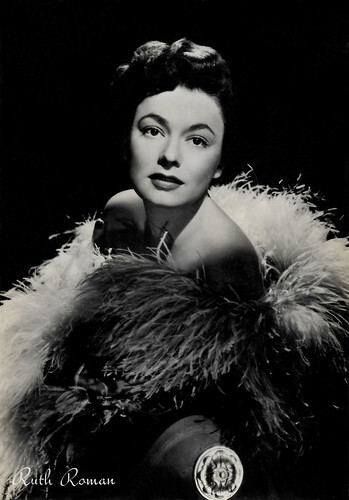
Italian postcard by Rotalfoto, Milano, no. 71.
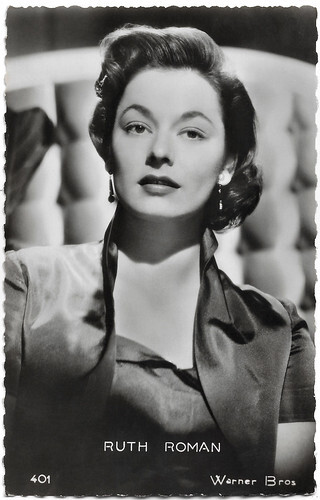
French postcard by Editions P.I., Paris, offered by Hardy, France, no. 401. Photo: Warner.
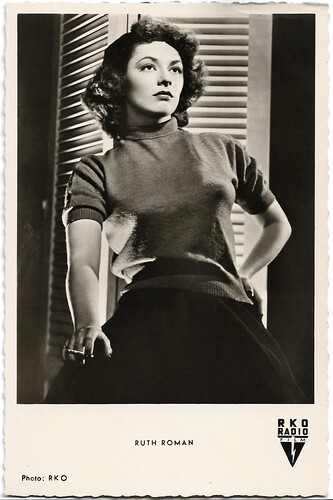
West German postcard by Kunst und Bild, Berlin, no. A 429. Photo: R.K.O. Ruth Roman in Lightning Strikes Twice (King Vidor, 1951).
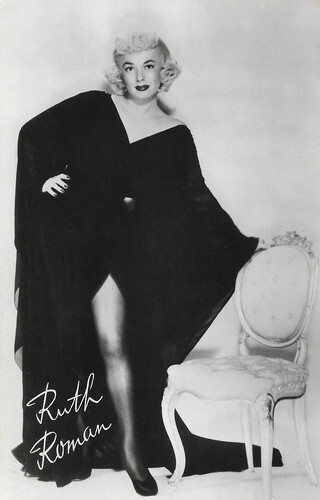
Dutch postcard by DRC, no. F 152. Photo: Warner Bros. Ruth Roman in Tomorrow is Another Day (Felix E. Feist, 1951).
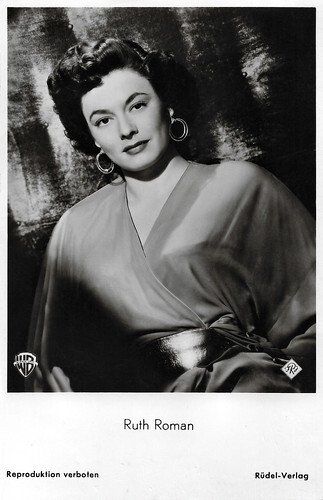
West German postcard by Rüdel Verlag, no. 345. Photo: Warner Bros.
Strangers on a Train
Ruth Roman was born Norma Roman in Lynn, Massachusetts in 1922. Her Lithuanian Jewish parents were Mary Pauline (née Gold) and Abraham 'Anthony' Roman. Her mother was a dancer, and her father a barker in a carnival sideshow that they owned at Revere Beach, Massachusetts. She had two older sisters, Ann and Eve. She was renamed 'Ruth' when a fortune-teller told her mother that 'Norma' was an unlucky name. Her father died when Ruth was eight. Her mother sold the sideshow and supported the family by working as a waitress and cleaning woman.
As a girl, Ruth pursued her dream to become an actress by enrolling in the prestigious Bishop Lee Dramatic School in Boston. Roman moved to New York City, where she hoped to find success on Broadway. Instead, she worked as a cigarette girl, a hat check girl at a night club and a model for a crime magazine to make a living and save money. After playing stage roles on the East Coast, Roman moved to Hollywood to pursue a career in films.
She appeared in several uncredited bit parts before she was cast as the leading lady in the Western Harmony Trail (Robert Emmett Tansey, 1944) opposite Ken Maynard. She was cast in the title role in the thirteen-episode serial Jungle Queen (Lewis D. Collins, Ray Taylor, 1945). Roman's career began to improve in the late 1940s when she was cast in a featured role in Good Sam (Leo McCarey, 1948) starring Gary Cooper .
She first starred in the title role of Belle Starr's Daughter (Lesley Selander, 1948). She achieved her first notable success with a role as a murderess in the Film Noir The Window (Ted Tetzlaff, 1949) both a critical success and a box office hit. She played another important role as the dependable wife of the fighter ( Kirk Douglas ) in the boxing drama Champion (Mark Robson, 1949). A year later she was nominated for the Golden Globe Award for New Star of the Year – Actress for her performance.
Ruth Roman was under contract to Warner Bros., where she starred in a variety of films. Look Magazine billed her as the 'Big Time Movie Personality of 1950', and by the following year, she was receiving some 500 fan letters per week. In Three Secrets (Robert Wise, 1950), she played a distraught mother waiting to learn whether or not her child survived an aeroplane crash. In one of her most memorable roles, Roman co-starred with Farley Granger and Robert Walker in the Alfred Hitchcock thriller Strangers on a Train (1951).
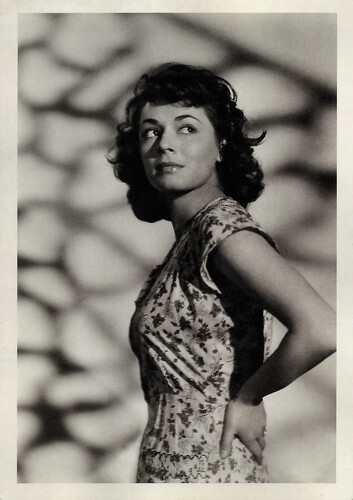
Spanish postcard in the Colleccíon 'Mitos Cinematográficos', CACITEL S.L., no. 84.
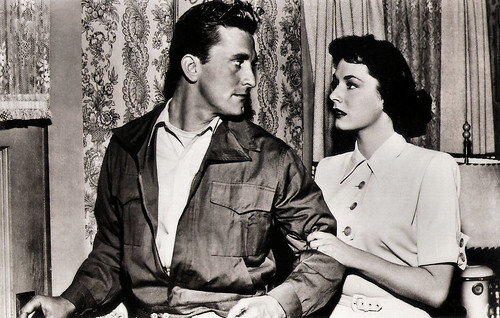
Spanish postcard by Soberanas, no. 280. Photo: Kirk Douglas and Ruth Roman in Champion (Mark Robson, 1949).
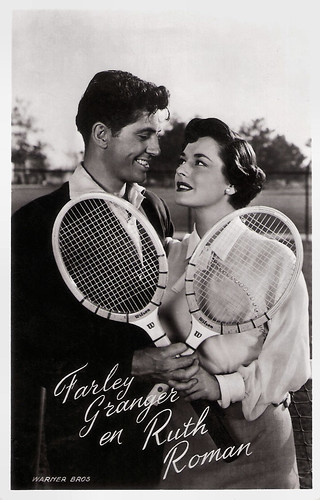
Dutch postcard by Takken, no. 566. Photo: Warner Bros. Farley Granger and Ruth Roman in Strangers on a Train (Alfred Hitchcock, 1951).
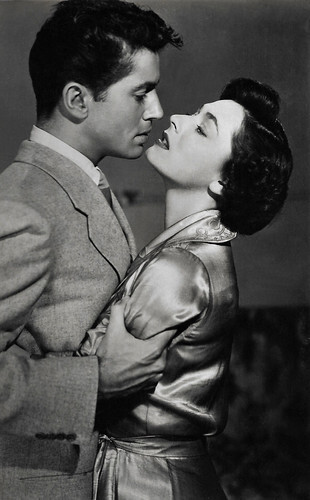
Spanish postcard. Farley Granger and Ruth Roman in Strangers on a Train (Alfred Hitchcock, 1951).
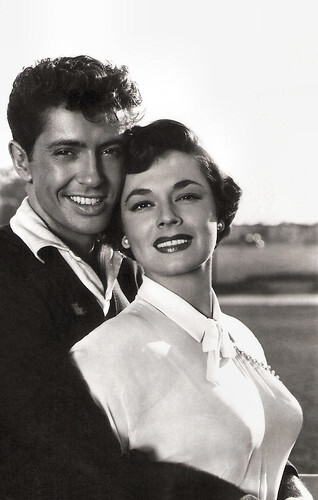
Spanish postcard. Farley Granger and Ruth Roman in Strangers on a Train (Alfred Hitchcock, 1951).
Rescued from the SS Andrea Doria
In the mid-1950s, Ruth Roman left Warner Bros. At Universal, she was the love interest to James Stewart in the Western The Far Country (Anthony Mann, 1955). She continued to star in films but also began playing guest roles in television series. She also worked abroad and made films in England, Italy, and Spain.
In 1956, Ruth Roman and her son Dickie boarded the Italian passenger liner SS Andrea Doria for a trip from France to the US. On a night, the Andrea Doria collided with the Swedish passenger liner MS Stockholm. When the collision happened Roman immediately took off her high heels in the lounge and scrambled back to her cabin barefoot to retrieve her sleeping son. Several hours later the passengers were being evacuated from the sinking liner. Dickie was lowered first into a waiting lifeboat, and before Roman could follow the lifeboat departed. Ruth stepped into the next boat and was eventually rescued along with 750 other survivors from the Andrea Doria by the French passenger liner SS Ile de France. Dickie was rescued by the Stockholm and was reunited with his mother in New York.
She played the woman between British Army officers Richard Burton and Curd Jürgens in the World War II drama Amère victoire/Bitter Victory (Nicholas Ray, 1957). In 1959, she won the Sarah Siddons Award for her work in Chicago theatre.
Although she never achieved the level of success as a leading lady that many predicted, Roman worked regularly in film well into the 1960s. Ruth had made the transition to middle-aged character parts and began to appear mostly on television in shows like The Outer Limits (1963), Mannix (1967), Gunsmoke (1955), and (in a recurring role) in The Long, Hot Summer (1965). She also toured with theatrical productions of 'Plaza Suite', 'Who's Afraid of Virginia Woolf', and 'Two for the Seesaw'.
Her final theatrical film was the thriller Impulse (William Grefé, 1974), starring William Shatner. Her last screen appearance was in the TV series Murder She Wrote (1989) with Angela Lansbury . Ruth Roman died at 76 in Laguna Beach, California, in 1999. Roman was married four times. She had one son, Richard Roman Hall (1952) with husband Mortimer Hall.
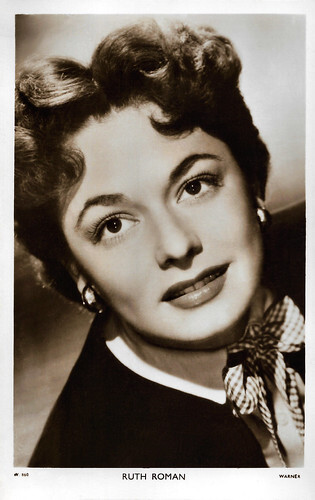
British postcard in the Picturegoer Series, London, no. W 860. Photo: Warner.
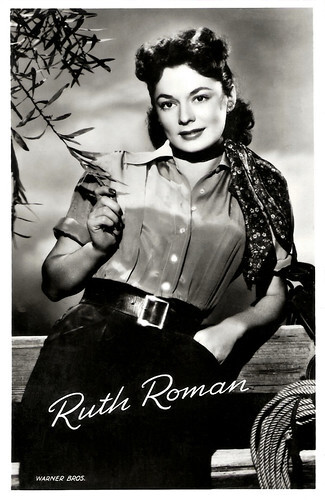
Dutch postcard by Fotoarchief Film en Toneel, no. AX 187. Photo: Warner Bros.
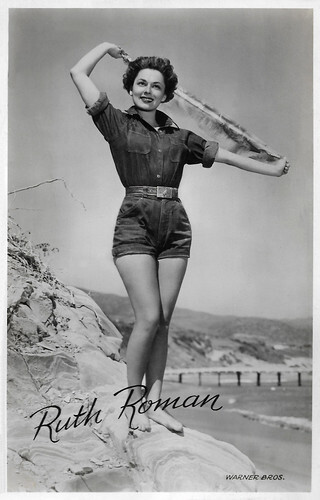
Dutch postcard by Fotoarchief Film en Toneel, no. 3376. Photo: Warner.
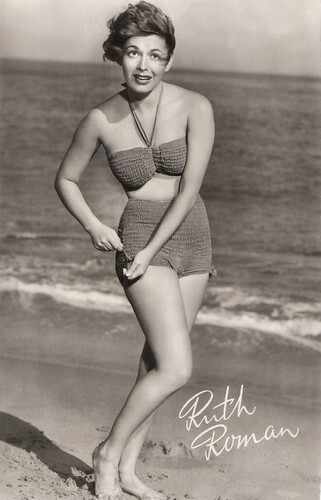
Dutch postcard by DRC, no. F 182. Photo: Warner Bros.
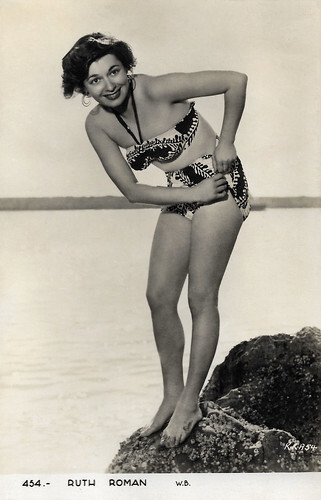
Spanish postcard, no. 454. Photo: Warner Bros.
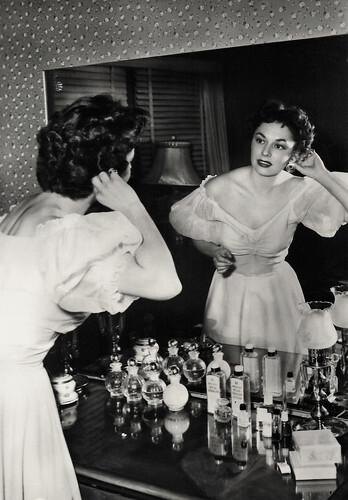
Italian postcard by Rotalfoto, Milano.
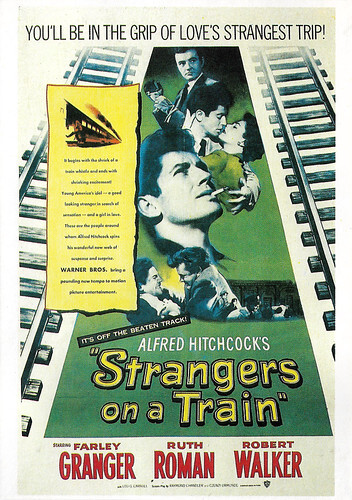
French postcard in the Série Hitchcock by Editions ZREIK, Paris, no. H. Image: Warner Bros. American poster for Strangers on a Train (Alfred Hitchcock, 1951) with Farley Granger , Ruth Roman and Robert Walker .
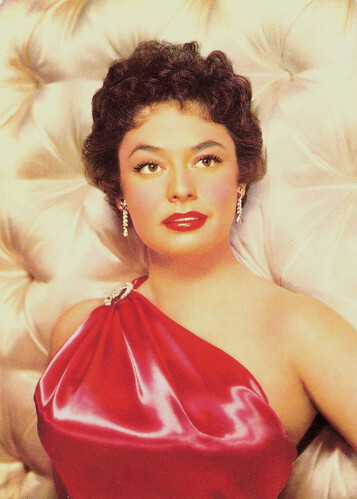
Italian postcard by Rotalcolor, no. N. 35.
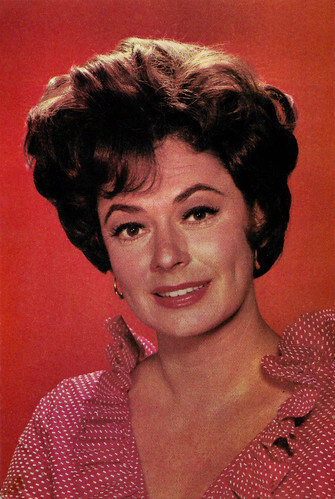
Yugoslavian postcard by NIP 'Borba', Beograd. Ruth Roman in The Long Hot Summer (1965-1966).
Sources: Wikipedia (Dutch, German and English) and .

Italian postcard by Rotalfoto, Milano, no. 71.

French postcard by Editions P.I., Paris, offered by Hardy, France, no. 401. Photo: Warner.

West German postcard by Kunst und Bild, Berlin, no. A 429. Photo: R.K.O. Ruth Roman in Lightning Strikes Twice (King Vidor, 1951).

Dutch postcard by DRC, no. F 152. Photo: Warner Bros. Ruth Roman in Tomorrow is Another Day (Felix E. Feist, 1951).

West German postcard by Rüdel Verlag, no. 345. Photo: Warner Bros.
Strangers on a Train
Ruth Roman was born Norma Roman in Lynn, Massachusetts in 1922. Her Lithuanian Jewish parents were Mary Pauline (née Gold) and Abraham 'Anthony' Roman. Her mother was a dancer, and her father a barker in a carnival sideshow that they owned at Revere Beach, Massachusetts. She had two older sisters, Ann and Eve. She was renamed 'Ruth' when a fortune-teller told her mother that 'Norma' was an unlucky name. Her father died when Ruth was eight. Her mother sold the sideshow and supported the family by working as a waitress and cleaning woman.
As a girl, Ruth pursued her dream to become an actress by enrolling in the prestigious Bishop Lee Dramatic School in Boston. Roman moved to New York City, where she hoped to find success on Broadway. Instead, she worked as a cigarette girl, a hat check girl at a night club and a model for a crime magazine to make a living and save money. After playing stage roles on the East Coast, Roman moved to Hollywood to pursue a career in films.
She appeared in several uncredited bit parts before she was cast as the leading lady in the Western Harmony Trail (Robert Emmett Tansey, 1944) opposite Ken Maynard. She was cast in the title role in the thirteen-episode serial Jungle Queen (Lewis D. Collins, Ray Taylor, 1945). Roman's career began to improve in the late 1940s when she was cast in a featured role in Good Sam (Leo McCarey, 1948) starring Gary Cooper .
She first starred in the title role of Belle Starr's Daughter (Lesley Selander, 1948). She achieved her first notable success with a role as a murderess in the Film Noir The Window (Ted Tetzlaff, 1949) both a critical success and a box office hit. She played another important role as the dependable wife of the fighter ( Kirk Douglas ) in the boxing drama Champion (Mark Robson, 1949). A year later she was nominated for the Golden Globe Award for New Star of the Year – Actress for her performance.
Ruth Roman was under contract to Warner Bros., where she starred in a variety of films. Look Magazine billed her as the 'Big Time Movie Personality of 1950', and by the following year, she was receiving some 500 fan letters per week. In Three Secrets (Robert Wise, 1950), she played a distraught mother waiting to learn whether or not her child survived an aeroplane crash. In one of her most memorable roles, Roman co-starred with Farley Granger and Robert Walker in the Alfred Hitchcock thriller Strangers on a Train (1951).

Spanish postcard in the Colleccíon 'Mitos Cinematográficos', CACITEL S.L., no. 84.

Spanish postcard by Soberanas, no. 280. Photo: Kirk Douglas and Ruth Roman in Champion (Mark Robson, 1949).

Dutch postcard by Takken, no. 566. Photo: Warner Bros. Farley Granger and Ruth Roman in Strangers on a Train (Alfred Hitchcock, 1951).

Spanish postcard. Farley Granger and Ruth Roman in Strangers on a Train (Alfred Hitchcock, 1951).

Spanish postcard. Farley Granger and Ruth Roman in Strangers on a Train (Alfred Hitchcock, 1951).
Rescued from the SS Andrea Doria
In the mid-1950s, Ruth Roman left Warner Bros. At Universal, she was the love interest to James Stewart in the Western The Far Country (Anthony Mann, 1955). She continued to star in films but also began playing guest roles in television series. She also worked abroad and made films in England, Italy, and Spain.
In 1956, Ruth Roman and her son Dickie boarded the Italian passenger liner SS Andrea Doria for a trip from France to the US. On a night, the Andrea Doria collided with the Swedish passenger liner MS Stockholm. When the collision happened Roman immediately took off her high heels in the lounge and scrambled back to her cabin barefoot to retrieve her sleeping son. Several hours later the passengers were being evacuated from the sinking liner. Dickie was lowered first into a waiting lifeboat, and before Roman could follow the lifeboat departed. Ruth stepped into the next boat and was eventually rescued along with 750 other survivors from the Andrea Doria by the French passenger liner SS Ile de France. Dickie was rescued by the Stockholm and was reunited with his mother in New York.
She played the woman between British Army officers Richard Burton and Curd Jürgens in the World War II drama Amère victoire/Bitter Victory (Nicholas Ray, 1957). In 1959, she won the Sarah Siddons Award for her work in Chicago theatre.
Although she never achieved the level of success as a leading lady that many predicted, Roman worked regularly in film well into the 1960s. Ruth had made the transition to middle-aged character parts and began to appear mostly on television in shows like The Outer Limits (1963), Mannix (1967), Gunsmoke (1955), and (in a recurring role) in The Long, Hot Summer (1965). She also toured with theatrical productions of 'Plaza Suite', 'Who's Afraid of Virginia Woolf', and 'Two for the Seesaw'.
Her final theatrical film was the thriller Impulse (William Grefé, 1974), starring William Shatner. Her last screen appearance was in the TV series Murder She Wrote (1989) with Angela Lansbury . Ruth Roman died at 76 in Laguna Beach, California, in 1999. Roman was married four times. She had one son, Richard Roman Hall (1952) with husband Mortimer Hall.

British postcard in the Picturegoer Series, London, no. W 860. Photo: Warner.

Dutch postcard by Fotoarchief Film en Toneel, no. AX 187. Photo: Warner Bros.

Dutch postcard by Fotoarchief Film en Toneel, no. 3376. Photo: Warner.

Dutch postcard by DRC, no. F 182. Photo: Warner Bros.

Spanish postcard, no. 454. Photo: Warner Bros.

Italian postcard by Rotalfoto, Milano.

French postcard in the Série Hitchcock by Editions ZREIK, Paris, no. H. Image: Warner Bros. American poster for Strangers on a Train (Alfred Hitchcock, 1951) with Farley Granger , Ruth Roman and Robert Walker .

Italian postcard by Rotalcolor, no. N. 35.

Yugoslavian postcard by NIP 'Borba', Beograd. Ruth Roman in The Long Hot Summer (1965-1966).
Sources: Wikipedia (Dutch, German and English) and .
Published on July 01, 2024 22:00
June 30, 2024
Donald Sutherland (1935-2024)
Canadian actor Donald Sutherland (1935) passed away in Miami, Florida, on 20 June 2024. He rose to fame after starring in films including M*A*S*H (1970), Klute (1971), Don't Look Now (1973), Fellini's Casanova (1976), and 1900 (1976). During his long film career, he won two Golden Globe Awards, for the television films Citizen X (1995) and Path to War (2002), and an Emmy Award for the former. In 2017, he received an Honorary Oscar for his contributions to cinema. Donald Sutherland was 88.
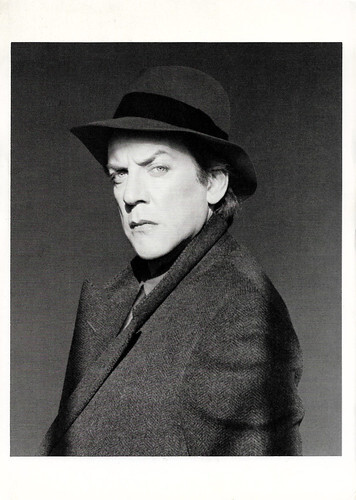
American postcard by Fotofolio, N.Y., N.Y., no. RM28. Photo: Robert Mapplethorpe. Caption: Donald Sutherland, 1983.
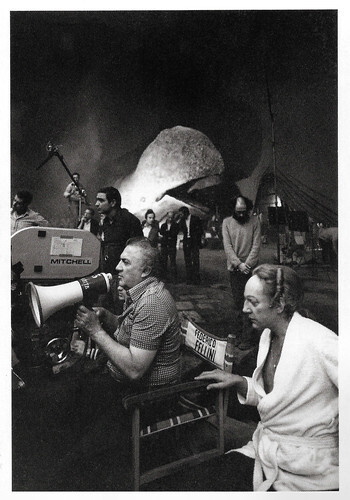
Swiss postcard by News Productions, Baulmes, no. 55592. Photo: Michelangelo Durazzo / ANA, Paris. Caption: Federico Fellini during the shooting of the film Casanova.
Casanova
Donald McNichol Sutherland was born in Saint John, New Brunswick in 1935. His parents were Dorothy Isobel (née McNichol) and Frederick McLea Sutherland. His father worked in sales and ran the local gas, electricity, and bus company. Donald obtained his first part-time job, at the age of 14, as a news correspondent for local radio station CKBW. He graduated from Bridgewater High School and then studied at Victoria University, where he met his first wife Lois Hardwick and graduated with a double major in engineering and drama. He changed his mind about becoming an engineer, and left Canada for Britain in 1957, studying at the London Academy of Music and Dramatic Art.
After departing the London Academy of Music and Dramatic Art (LAMDA), Sutherland spent a year and a half at the Perth Repertory Theatre in Scotland. In the early to mid-1960s, he began to gain small roles in British films and TV. He was featured alongside Christopher Lee in Horror films such as Il castello dei morti vivi/Castle of the Living Dead (Warren Kiefer, Luciano Ricci, 1964) and Dr. Terror's House of Horrors (Freddie Francis, 1965). He also had a supporting role in the Hammer Films production Fanatic/Die! Die! My Darling! (Silvio Narizzano, 1965), with Tallulah Bankhead and Stefanie Powers. The same year, he appeared in the Cold War classic The Bedford Incident (James B. Harris, 1965). In 1966, Sutherland appeared on the BBC TV play Lee Oswald-Assassin, playing a friend of Lee Harvey Oswald. Then followed parts in such popular TV series as Gideon's Way (1966), The Saint (1966-1967) and The Avengers (1967).
Donald Sutherland landed the role of a lame-brained convict in the exciting action film The Dirty Dozen (Robert Aldrich, 1967), starring Lee Marvin and Charles Bronson . It was the 5th highest-grossing film of 1967, MGM's highest-grossing movie of the year and Sutherland's breakthrough. In 1968, he left London for Hollywood and appeared in two war films, playing the lead role of 'Hawkeye' Pierce in M*A*S*H (Robert Altman, 1970) and, as hippie tank commander 'Oddball' in Kelly's Heroes (Brian G. Hutton, 1970). Sutherland starred with Gene Wilder in the comedy Start the Revolution Without Me (Bud Yorkin, 1970).
Sutherland found himself as a leading man throughout the 1970s. During the filming of the Oscar-winning detective thriller Klute (Alan J. Pakula, 1971), he had an intimate relationship with co-star Jane Fonda . They went on to co-produce and star together in the anti-Vietnam War documentary F.T.A. (1972), consisting of a series of sketches performed outside army bases in the Pacific Rim and interviews with American troops who were then on active service. A follow-up to their teaming up in Klute, Sutherland, and Fonda performed together in Steelyard Blues (David S. Ward, 1973). He then played in the Venice-based psychological horror film Don't Look Now (Nicholas Roeg, 1973), co-starring Julie Christie . He was nominated for his role for the BAFTA Award for Best Actor.
Then followed the war film The Eagle Has Landed (John Sturges, 1976), Il Casanova di Federico Fellini/Casanova (Federico Fellini, 1976), and the thriller Eye of the Needle (Richard Marquand, 1981), which was filmed on location on the Isle of Mull, West Scotland. His role as the Corpse of Lt. Robert Schmied in the German film Der Richter und sein Henker/End of the Game (Maximilian Schell, 1976). Then he was the ever-optimistic health inspector in the Science Fiction/Horror film Invasion of the Body Snatchers (Philip Kaufman, 1978) alongside Brooke Adams and Jeff Goldblum. Sutherland also had a role as pot-smoking Professor Dave Jennings in National Lampoon's Animal House/Animal House (John Landis, 1978), making himself known to younger fans as a result of the movie's popularity. He won acclaim for his performance in the Italian epic 1900/Novecento (Bernardo Bertolucci, 1976) and as the conflicted father in the Academy Award-winning family drama Ordinary People (Robert Redford, 1980), alongside Mary Tyler Moore and Timothy Hutton.
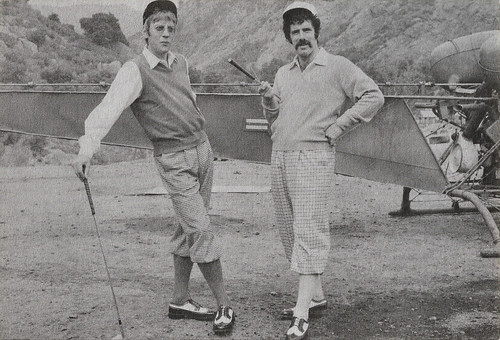
Promotion card by the American Film Institute, no. 3333. Donald Sutherland and Elliott Gould in M*A*S*H (Robert Altman, 1970).
The head of a government agency hunting for aliens
Some of Donald Sutherland's better-known roles in the 1980s and 1990s were in the South African apartheid drama A Dry White Season (Euzhan Palcy, 1989), alongside Marlon Brando and Susan Sarandon; as a sadistic warden in Lock Up (John Flynn, 1989) with Sylvester Stallone ; as an incarcerated pyromaniac in the firefighter thriller Backdraft (Ron Howard, 1990) alongside Kurt Russell and Robert De Niro , as the humanitarian doctor-activist Norman Bethune in Bethune: the Making of a Hero (Bethune: The Making of a Hero, 1992), and as a snobbish New York City art dealer in Six Degrees of Separation (Fred Schepisi, 1993), with Stockard Channing and Will Smith . In JFK (Oliver Stone, 1991), he played a mysterious Washington intelligence officer, reputed to have been L. Fletcher Prouty, who spoke of links to the military-industrial complex in the assassination of U.S. President John F. Kennedy.
The following year, he played the role of Merrick in the film Buffy the Vampire Slayer (Fran Rubel Kuzui, 1992), with Kristy Swanson. In 1994, he played the head of a government agency hunting for aliens who take over people's bodies similar to the premise of Invasion of the Body Snatchers in the film The Puppet Masters(Stuart Ortme, 1994), based on Robert A. Heinlein's 1951 book. In 1994, Sutherland played a software company's scheming CEO in Barry Levinson's drama Disclosure opposite Michael Douglas and Demi Moore . He was cast as Maj. Gen. Donald McClintock in Wolfgang Petersen's Outbreak (1995). For only the second time, he was cast with his son Kiefer Sutherland in Joel Schumacher's A Time to Kill (1996). He won two Golden Globe Awards, for the television films Citizen X (Chris Gerolmo, 1995) and Path to War (John Frankenheimer, 2002), and an Emmy Award for the former.
Donald Sutherland played an astronaut in Space Cowboys (Clint Eastwood, 2000), with co-stars Clint Eastwood , Tommy Lee Jones , and James Garner. Sutherland was a model for Chris Claremont and John Byrne to create Donald Pierce, the character in the Marvel Comics, whose last name comes from Sutherland's character in M*A*S*H (Robert Altman, 1970), Hawkeye Pierce. In more recent years, Sutherland was known for his role as Reverend Monroe in the Civil War drama Cold Mountain (Anthony Minghella, 2003), in the remake of The Italian Job (F. Gary Gray, 2003), in the TV series Commander in Chief (2005–2006), and as Mr. Bennet in Pride & Prejudice (Joe Wright, 2005), starring alongside Keira Knightley. Sutherland starred as Tripp Darling in the prime-time drama series Dirty Sexy Money (2007-2009), and his distinctive voice has also been used in many radio and television commercials.
In 2010, he starred alongside an ensemble cast in a TV adaptation of Ken Follett's novel The Pillars of the Earth (Sergio Mimica-Gezzan, 2010). Beginning in 2012, Sutherland portrayed President Snow, the main antagonist of The Hunger Games film franchise, in The Hunger Games (Francis Lawrence, 2012), The Hunger Games: Catching Fire (Francis Lawrence, 2013), The Hunger Games: Mockingjay – Part 1 (Francis Lawrence, 2014), and Part 2 (Francis Lawrence, 2015). His role was well-received by fans and critics. In the television program Crossing Lines (2013-2015), Sutherland played Michel Dorn, the Chief Prosecutor for the International Criminal Court. He was one of only two actors to appear in all episodes across three seasons. He also played a supporting role in the Science Fiction film Ad Astra (James Gray, 2019) starring Brad Pitt . His final film was the Horror film Mr. Harrigan's Phone (John Lee Hancock, 2022), based on Stephen King's short story of the same name.
Donald Sutherland was married three times. His first marriage, to Lois Hardwick, lasted from 1959 to 1966. His second marriage, which lasted from 1966 to 1970, was to Shirley Douglas. They have two children, twins Kiefer and Rachel. Sutherland met his current wife, French Canadian actress Francine Racette, on the set of the Canadian pioneer drama Alien Thunder. They married in 1972 and had three sons: Rossif Sutherland, Angus Redford Sutherland, and Roeg Sutherland. His four sons have all been named after directors whom Sutherland has worked with: Kiefer is named after American-born director and writer Warren Kiefer, who, under the assumed name of Lorenzo Sabatini, directed Sutherland in his first feature film, the Italian low-budget Horror film Il castello dei morti vivi/Castle of the Living Dead. Roeg is named after director Nicolas Roeg; Rossif is named after French director Frédéric Rossif, and Angus Redford has his middle name after Robert Redford . Donald Sutherland was a Companion of the Order of Canada (CC) since 2019. Donald Sutherland died on 20 June 2024 in Miami at the age of 88 following a long illness.
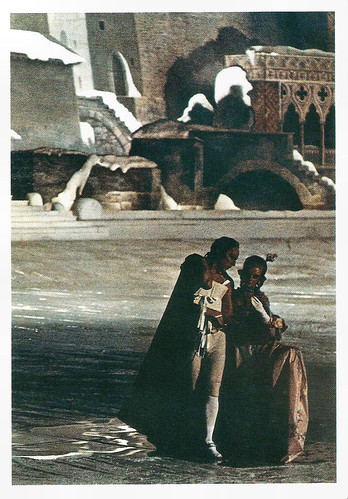
French postcard in the Collection Cinéma Couleur by Editions La Malibran, Nancy, no. MC 40. Donald Sutherland in Il Casanova di Federico Fellini (Federico Fellini, 1976).
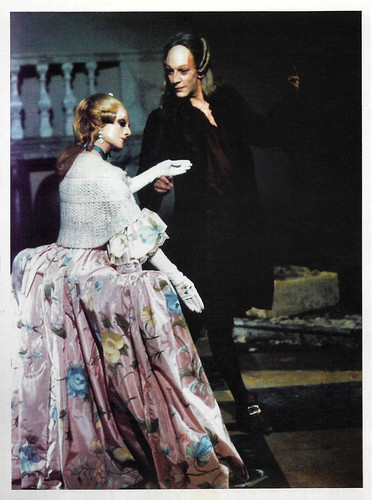
Italian postcard in the Federico Fellini series by Gruppo Prospettive. Photo: F. Pinna / RAM Studio. Donald Sutherland in Il Casanova di Federico Fellini (Federico Fellini, 1976).
Sources: Wikipedia (Dutch and English) and .

American postcard by Fotofolio, N.Y., N.Y., no. RM28. Photo: Robert Mapplethorpe. Caption: Donald Sutherland, 1983.

Swiss postcard by News Productions, Baulmes, no. 55592. Photo: Michelangelo Durazzo / ANA, Paris. Caption: Federico Fellini during the shooting of the film Casanova.
Casanova
Donald McNichol Sutherland was born in Saint John, New Brunswick in 1935. His parents were Dorothy Isobel (née McNichol) and Frederick McLea Sutherland. His father worked in sales and ran the local gas, electricity, and bus company. Donald obtained his first part-time job, at the age of 14, as a news correspondent for local radio station CKBW. He graduated from Bridgewater High School and then studied at Victoria University, where he met his first wife Lois Hardwick and graduated with a double major in engineering and drama. He changed his mind about becoming an engineer, and left Canada for Britain in 1957, studying at the London Academy of Music and Dramatic Art.
After departing the London Academy of Music and Dramatic Art (LAMDA), Sutherland spent a year and a half at the Perth Repertory Theatre in Scotland. In the early to mid-1960s, he began to gain small roles in British films and TV. He was featured alongside Christopher Lee in Horror films such as Il castello dei morti vivi/Castle of the Living Dead (Warren Kiefer, Luciano Ricci, 1964) and Dr. Terror's House of Horrors (Freddie Francis, 1965). He also had a supporting role in the Hammer Films production Fanatic/Die! Die! My Darling! (Silvio Narizzano, 1965), with Tallulah Bankhead and Stefanie Powers. The same year, he appeared in the Cold War classic The Bedford Incident (James B. Harris, 1965). In 1966, Sutherland appeared on the BBC TV play Lee Oswald-Assassin, playing a friend of Lee Harvey Oswald. Then followed parts in such popular TV series as Gideon's Way (1966), The Saint (1966-1967) and The Avengers (1967).
Donald Sutherland landed the role of a lame-brained convict in the exciting action film The Dirty Dozen (Robert Aldrich, 1967), starring Lee Marvin and Charles Bronson . It was the 5th highest-grossing film of 1967, MGM's highest-grossing movie of the year and Sutherland's breakthrough. In 1968, he left London for Hollywood and appeared in two war films, playing the lead role of 'Hawkeye' Pierce in M*A*S*H (Robert Altman, 1970) and, as hippie tank commander 'Oddball' in Kelly's Heroes (Brian G. Hutton, 1970). Sutherland starred with Gene Wilder in the comedy Start the Revolution Without Me (Bud Yorkin, 1970).
Sutherland found himself as a leading man throughout the 1970s. During the filming of the Oscar-winning detective thriller Klute (Alan J. Pakula, 1971), he had an intimate relationship with co-star Jane Fonda . They went on to co-produce and star together in the anti-Vietnam War documentary F.T.A. (1972), consisting of a series of sketches performed outside army bases in the Pacific Rim and interviews with American troops who were then on active service. A follow-up to their teaming up in Klute, Sutherland, and Fonda performed together in Steelyard Blues (David S. Ward, 1973). He then played in the Venice-based psychological horror film Don't Look Now (Nicholas Roeg, 1973), co-starring Julie Christie . He was nominated for his role for the BAFTA Award for Best Actor.
Then followed the war film The Eagle Has Landed (John Sturges, 1976), Il Casanova di Federico Fellini/Casanova (Federico Fellini, 1976), and the thriller Eye of the Needle (Richard Marquand, 1981), which was filmed on location on the Isle of Mull, West Scotland. His role as the Corpse of Lt. Robert Schmied in the German film Der Richter und sein Henker/End of the Game (Maximilian Schell, 1976). Then he was the ever-optimistic health inspector in the Science Fiction/Horror film Invasion of the Body Snatchers (Philip Kaufman, 1978) alongside Brooke Adams and Jeff Goldblum. Sutherland also had a role as pot-smoking Professor Dave Jennings in National Lampoon's Animal House/Animal House (John Landis, 1978), making himself known to younger fans as a result of the movie's popularity. He won acclaim for his performance in the Italian epic 1900/Novecento (Bernardo Bertolucci, 1976) and as the conflicted father in the Academy Award-winning family drama Ordinary People (Robert Redford, 1980), alongside Mary Tyler Moore and Timothy Hutton.

Promotion card by the American Film Institute, no. 3333. Donald Sutherland and Elliott Gould in M*A*S*H (Robert Altman, 1970).
The head of a government agency hunting for aliens
Some of Donald Sutherland's better-known roles in the 1980s and 1990s were in the South African apartheid drama A Dry White Season (Euzhan Palcy, 1989), alongside Marlon Brando and Susan Sarandon; as a sadistic warden in Lock Up (John Flynn, 1989) with Sylvester Stallone ; as an incarcerated pyromaniac in the firefighter thriller Backdraft (Ron Howard, 1990) alongside Kurt Russell and Robert De Niro , as the humanitarian doctor-activist Norman Bethune in Bethune: the Making of a Hero (Bethune: The Making of a Hero, 1992), and as a snobbish New York City art dealer in Six Degrees of Separation (Fred Schepisi, 1993), with Stockard Channing and Will Smith . In JFK (Oliver Stone, 1991), he played a mysterious Washington intelligence officer, reputed to have been L. Fletcher Prouty, who spoke of links to the military-industrial complex in the assassination of U.S. President John F. Kennedy.
The following year, he played the role of Merrick in the film Buffy the Vampire Slayer (Fran Rubel Kuzui, 1992), with Kristy Swanson. In 1994, he played the head of a government agency hunting for aliens who take over people's bodies similar to the premise of Invasion of the Body Snatchers in the film The Puppet Masters(Stuart Ortme, 1994), based on Robert A. Heinlein's 1951 book. In 1994, Sutherland played a software company's scheming CEO in Barry Levinson's drama Disclosure opposite Michael Douglas and Demi Moore . He was cast as Maj. Gen. Donald McClintock in Wolfgang Petersen's Outbreak (1995). For only the second time, he was cast with his son Kiefer Sutherland in Joel Schumacher's A Time to Kill (1996). He won two Golden Globe Awards, for the television films Citizen X (Chris Gerolmo, 1995) and Path to War (John Frankenheimer, 2002), and an Emmy Award for the former.
Donald Sutherland played an astronaut in Space Cowboys (Clint Eastwood, 2000), with co-stars Clint Eastwood , Tommy Lee Jones , and James Garner. Sutherland was a model for Chris Claremont and John Byrne to create Donald Pierce, the character in the Marvel Comics, whose last name comes from Sutherland's character in M*A*S*H (Robert Altman, 1970), Hawkeye Pierce. In more recent years, Sutherland was known for his role as Reverend Monroe in the Civil War drama Cold Mountain (Anthony Minghella, 2003), in the remake of The Italian Job (F. Gary Gray, 2003), in the TV series Commander in Chief (2005–2006), and as Mr. Bennet in Pride & Prejudice (Joe Wright, 2005), starring alongside Keira Knightley. Sutherland starred as Tripp Darling in the prime-time drama series Dirty Sexy Money (2007-2009), and his distinctive voice has also been used in many radio and television commercials.
In 2010, he starred alongside an ensemble cast in a TV adaptation of Ken Follett's novel The Pillars of the Earth (Sergio Mimica-Gezzan, 2010). Beginning in 2012, Sutherland portrayed President Snow, the main antagonist of The Hunger Games film franchise, in The Hunger Games (Francis Lawrence, 2012), The Hunger Games: Catching Fire (Francis Lawrence, 2013), The Hunger Games: Mockingjay – Part 1 (Francis Lawrence, 2014), and Part 2 (Francis Lawrence, 2015). His role was well-received by fans and critics. In the television program Crossing Lines (2013-2015), Sutherland played Michel Dorn, the Chief Prosecutor for the International Criminal Court. He was one of only two actors to appear in all episodes across three seasons. He also played a supporting role in the Science Fiction film Ad Astra (James Gray, 2019) starring Brad Pitt . His final film was the Horror film Mr. Harrigan's Phone (John Lee Hancock, 2022), based on Stephen King's short story of the same name.
Donald Sutherland was married three times. His first marriage, to Lois Hardwick, lasted from 1959 to 1966. His second marriage, which lasted from 1966 to 1970, was to Shirley Douglas. They have two children, twins Kiefer and Rachel. Sutherland met his current wife, French Canadian actress Francine Racette, on the set of the Canadian pioneer drama Alien Thunder. They married in 1972 and had three sons: Rossif Sutherland, Angus Redford Sutherland, and Roeg Sutherland. His four sons have all been named after directors whom Sutherland has worked with: Kiefer is named after American-born director and writer Warren Kiefer, who, under the assumed name of Lorenzo Sabatini, directed Sutherland in his first feature film, the Italian low-budget Horror film Il castello dei morti vivi/Castle of the Living Dead. Roeg is named after director Nicolas Roeg; Rossif is named after French director Frédéric Rossif, and Angus Redford has his middle name after Robert Redford . Donald Sutherland was a Companion of the Order of Canada (CC) since 2019. Donald Sutherland died on 20 June 2024 in Miami at the age of 88 following a long illness.

French postcard in the Collection Cinéma Couleur by Editions La Malibran, Nancy, no. MC 40. Donald Sutherland in Il Casanova di Federico Fellini (Federico Fellini, 1976).

Italian postcard in the Federico Fellini series by Gruppo Prospettive. Photo: F. Pinna / RAM Studio. Donald Sutherland in Il Casanova di Federico Fellini (Federico Fellini, 1976).
Sources: Wikipedia (Dutch and English) and .
Published on June 30, 2024 22:00
Paul van Yperen's Blog
- Paul van Yperen's profile
- 13 followers
Paul van Yperen isn't a Goodreads Author
(yet),
but they
do have a blog,
so here are some recent posts imported from
their feed.



